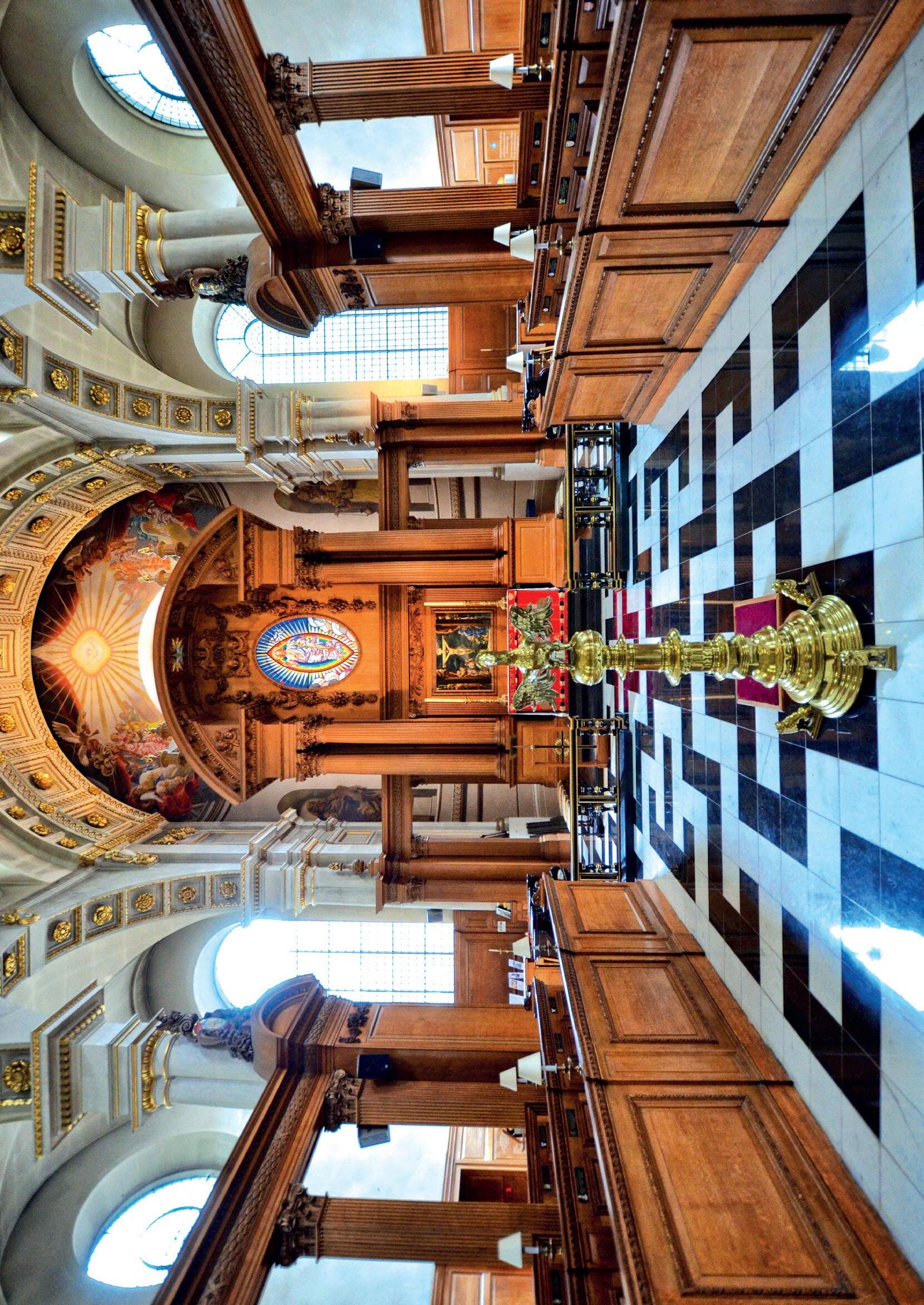CATHEDRAL MUSIC





Whichever organ you buy from us, you can be assured of top sound and build quality, our technical expertise, great attention to detail and the best in customer service. We invest in our instruments so you can invest in your future. These are serious instruments for serious people, people like you. Explore our websites and then fall in love with the organ of your dreams in our showrooms.




 Makin | Copeman Hart | Johannus | Rodgers
Makin | Copeman Hart | Johannus | Rodgers
CATHEDRAL MUSIC is published twice a year, in May and November
ISSN 1363-6960 NOVEMBER 2016
Editor
Mrs Sooty Asquith, 8 Colinette Road, London SW15 6QQ sooty.asquith@btinternet.com
Editorial Advisers
David Flood & Matthew Owens
Production Manager Graham Hermon grahamhermon@lineone.net
FCM Email info@fcm.org.uk
Website www.fcm.org.uk
The views expressed in articles are those of the contributor and do not necessarily represent any official policy of Friends of Cathedral Music. Likewise, advertisements are printed in good faith. Their inclusion does not imply endorsement by FCM.
All communications regarding advertising should be addressed to: Tatton Media Solutions, 9 St Lawrence Way, Tallington, Stamford PE9 4RH 01780 740866 / 07738 632215 wesley.tatton@btinternet.com
All communications regarding membership should be addressed to: FCM Membership, 27 Old Gloucester Street, London WC1N 3AX
Tel: 020 3637 2172
International: (+44) 1727-856087 info@fcm.org.uk
Every effort has been made to determine copyright on illustrations used We apologise for any mistakes we may have made. The Editor would be glad to correct any omissions.
Designed and produced by:
DT Design, 1 St Wilfrids Road, Ripon HG4 2AF 07828 851458 d.trewhitt@sky.com
Cover photographs
Front Cover
Romsey Abbey interior
Photo: James Guppy
Back Cover
St Bride’s Church, Fleet Street
Photo: Brent Flanders
To play one call us to book a visit to our showroom, or contact one of our regional retailers listed below.
Irvine Soundtec Organs


Edinburgh Key Player
Morecambe Promenade Music
Porthmadog Pianos Cymru
Leigh A Bogdan Organs
Swansea Music Station
Multiple speaker locations create a uniquely authentic sound
Sonus instruments, based on the very successful ‘Physis’ physical modelling sound platform, additionally incorporate an enhanced internal audio system to generate an exciting moving sound field for increased enjoyment in a home environment. Speakers above the keyboards to the organ sides create a truly sensational and immersing sound field.
Starting at £9500 inc vat for a 34 stop 2 manual the instrument pictured here is the Sonus 60 with 50 stops at £13700 inc vat. Neither words nor recordings can do justice to the sound of these instruments; you just have to experience it in the flesh.
Norwich Cookes Pianos
Exeter Music Unlimited
Bandon Jeffers Music
Ballymena Nicholl Brothers
Londonderry Henderson Music
Belfast Keynote Organs
Receive your first year membership of the Royal College of Organists FREE, with your home practice organ purchase


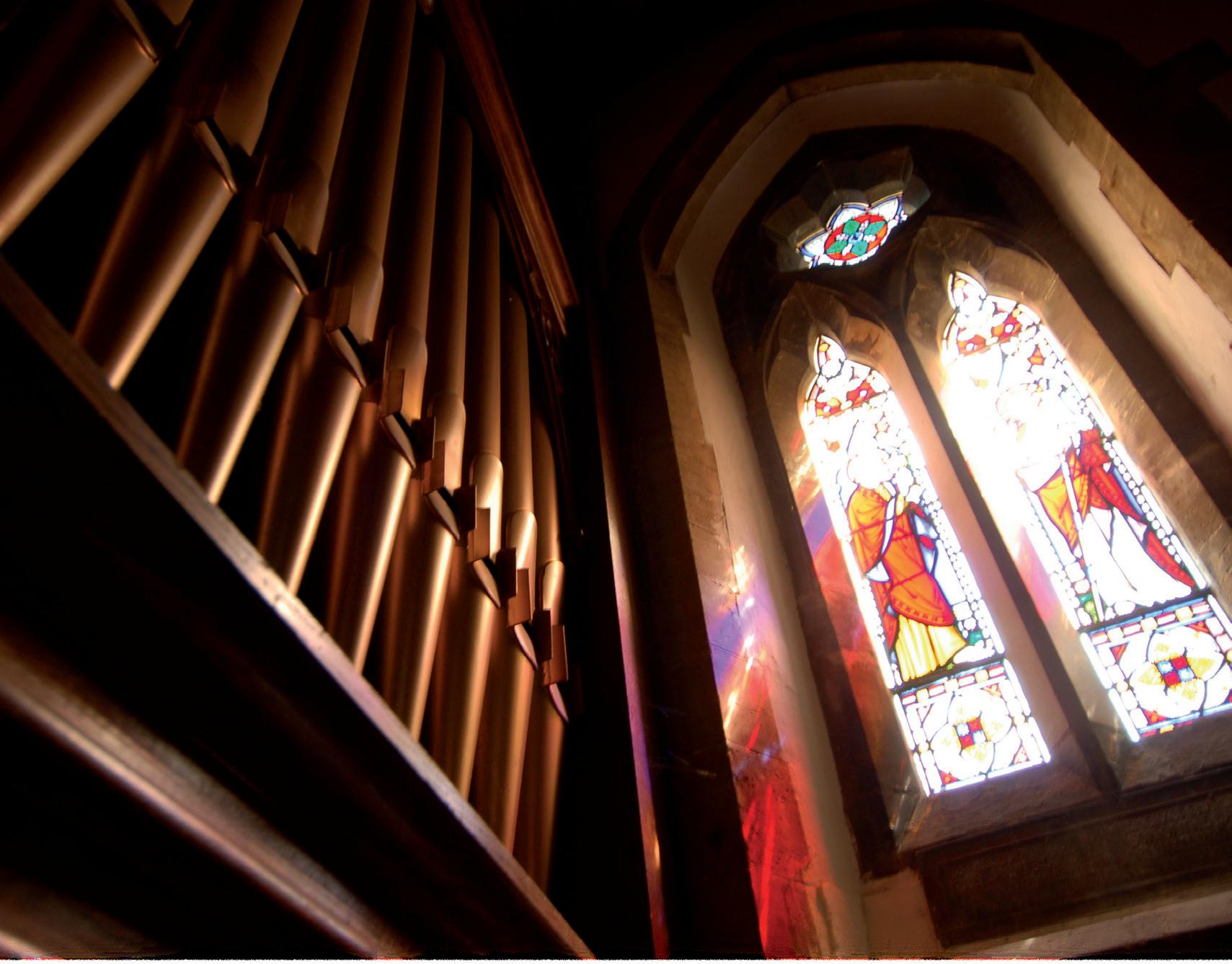 Pictured above: Sonus 60
Pictured above: Sonus 60
This year has been a glorious one for FCM. All those who have attended the Diamond Jubilee celebrations in St Paul’s and St Martin in the Fields, in York in March, and in Liverpool just recently, will surely have felt uplifted by what has been achieved in the cathedral world since our inception in 1956. Of course there have been many changes – no longer does Matins play a central part in the life of a cathedral, for example, and it is becoming increasingly rare for a cathedral not to have a girls’ choir – but greatly to be welcomed now is the notable increase in cathedral congregations, in particular since the turn of the century. In large part this welcome growth must stem from the widespread excellence of the music offering, and thus – amongst other reasons -- in (very small) part from FCM’s own efforts. As an organisation we punch well above our collective weight; we all work very hard to bring what we value so highly to prominence, to draw in those who are hovering in the wings of support, and to publicise our cause more widely. There remains much more to do but, given the manpower, what FCM has achieved is remarkable.
In the last issue of this magazine we said farewell to Christopher Robinson, who is handing over the president’s baton to Stephen Cleobury. Whilst there will be few amongst us who are unfamiliar with the latter’s achievements at King’s, many will know less of his life before Cambridge. Peter Toyne, somehow finding time in his own and Stephen’s busy schedules, talks to him about his experiences as a chorister at Worcester and as director of music at St Matthew’s, Northampton.
We have another departing soul to thank also: our redoubtable gatherings manager, Peter Smith, who, along with his doughty and indomitable wife Gina, has handled FCM’s weekend (and some longer) excursions to so many cathedrals over the years, throughout the UK and even to the Netherlands. The excellence of these weekends and the enjoyment gained by so many from them is attributable to Peter and Gina’s forethought and forward planning, and also to their unfailing good humour whatever the circumstance. We hope for their continued presence, despite their ‘retirement’, and look forward also to the next gathering, in March in Carlisle, which comes under the jurisdiction of the new gatherings manager, Rosemary Downey.
Most of us are keen followers of Choral Evensong, the BBC’s longest running series ever. You may be surprised to learn about some of the issues involved, technical, trivial and traditional, from its producer, Stephen Shipley, who reviews the programme as it reaches its 90th anniversary. Did you listen to the Blues Evensong from the University Church in Oxford, or the jazz Choral Vespers in 2002? Or did you, perhaps, like some, switch the radio off in fury and ring the BBC to complain? Life as a producer, even as a producer of such a ‘quiet’ programme as Choral Evensong, clearly has its ups and downs.
And for a piece of good news, enter ‘Why cathedrals are soaring’ into your search engine to read an article from the Spectator written by Simon Jenkins, the author of England’s Thousand Best Churches. FCM can’t claim full responsibility for the resurgence of cathedrals across the country, but few would argue that our contributions have not given a considerable helping hand towards this happy outcome. Let us hope for many more successful years for FCM.
Sooty AsquithLog onto www.fcm.org.uk and fill in the form, or write to/email the address given on p3.
Member benefits include:
• welcome pack
• twice-yearly colour magazine and twice-yearly colour newsletter
• ‘Singing in Cathedrals’: a pocket-sized guide to useful information on cathedrals in England, Ireland, Scotland and Wales
Opportunities to:
• attend gatherings in magnificent cathedrals
• meet others with a shared interest in cathedral music

• enjoy talks, master-classes, choral and organ performances etc.
UK members are asked to contribute at least £20 per year (£25 sterling for European members and £35 sterling for overseas members). UK choristers and full-time UK students under 21 qualify for a reduced rate of £10. New members subscribing at least £30 (standing order) or £50 (single payment) will receive a free fulllength CD of cathedral music, specially compiled for FCM members.
FCM’s purpose is to safeguard our priceless heritage of cathedral music and support this living tradition. We strive to increase public awareness and appreciation of cathedral music, and encourage high standards in choral and organ music. Money is raised by subscriptions, donations and legacies for choirs in need.
Since 1956 we have given over £2 million to Anglican and Roman Catholic cathedral, church and collegiate chapel choirs in the UK and overseas; endowed many choristerships; ensured the continued existence of a choir school, and worked to maintain the cathedral tradition. Please join now and help us to keep up this excellent work.

Stephen Cleobury was born in Bromley. His father, John, was a keen musician who had always wanted to be a professional musician, but John’s father wouldn’t allow it, so he went into medicine and began a career as a GP.
When Stephen was eight years old, his father decided that he wanted to work in psychiatry and moved to take up a post at Rubery Hill Hospital in Birmingham. While he was there, one of his colleagues, a lady doctor, noted that his two boys seemed musical and suggested that they might be good enough to become choristers at nearby Worcester Cathedral. Enquiries were duly made, and that was the beginning of Stephen’s career in music.
He says: “When I started at Worcester, I had no idea what was involved. My parents had been regular churchgoers, so I knew what Sunday Matins and Evensong were like, but I was more than a little surprised to find that there was much more to it than that at the cathedral!

“It was at Worcester that I experienced a wide range of music and, through the Three Choirs Festival, I began to appreciate that there was music beyond the choir stalls. I have great memories of my time there, learning the value of the daily offices and that something really excellent can happen on an otherwise dull Tuesday afternoon in mid-February.
“With the benefit of hindsight, these were obviously exciting times. Douglas Guest was Organist in succession to David Willcocks, who had just gone on to King’s Cambridge, and shortly afterwards the first Carols for Choirs came out, and I remember Douglas introducing us to ‘the green book’, which saved using lots of different books at the carol services.
“But it wasn’t just about singing in the choir. Douglas started me off on the organ (I was the William Dore Organ Scholar) and he taught me a real love of music, especially of the Tudor repertoire and Thomas Tomkins (a former Worcester organist), in particular.
“Christopher Robinson followed on from Douglas, with Harry Bramma as his assistant. These two were inspirational teachers, and were extremely important in my musical formation. Christopher taught me organ and piano, and Harry introduced me to a wide range of music including the Mozart piano concertos, Haydn string quartets, and Wagner’s Ring Cycle. They were just fantastic teachers! As a result, towards the end of the 1960s, there were six or eight of us winning major organ scholarships to Oxbridge colleges; the quality of music in the school was transformed by Harry. Christopher taught me the organ and piano and Harry dealt with the academic side of my education at ‘O’ and ‘A’ level, but as there were no such classes timetabled, we did them out of school. We used to go to Harry’s house at 4 o’clock a couple of afternoons a week, stopping off at the shop on the way to buy cakes with money he had given us, then we would come back and do our harmony or whatever. Harry was dedicated to getting us interested in good music and would play recordings for us, but sadly there was no orchestral activity at the school, and
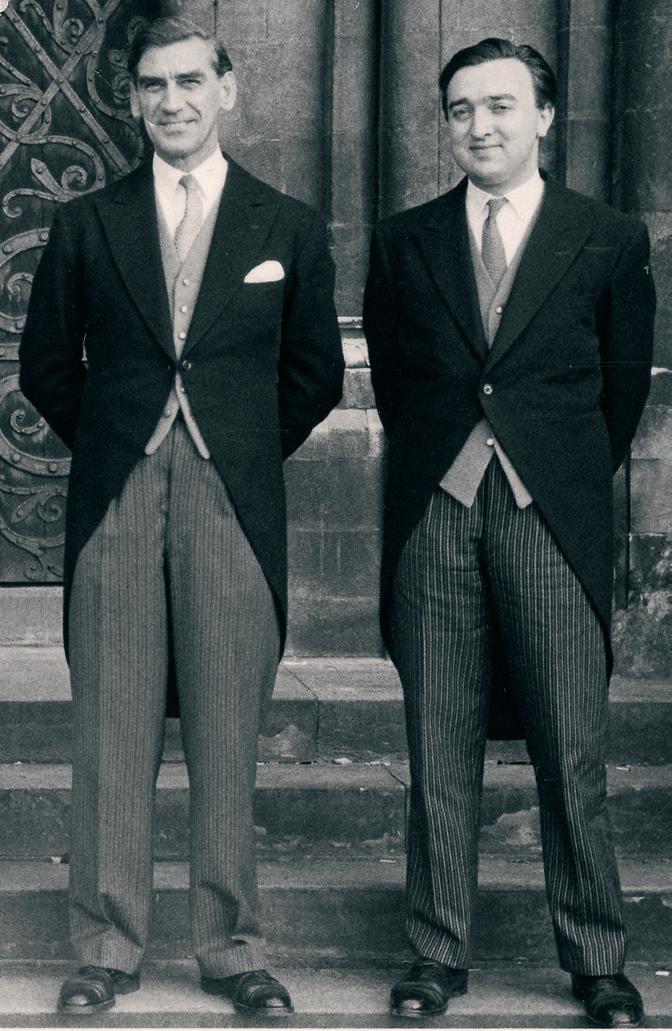
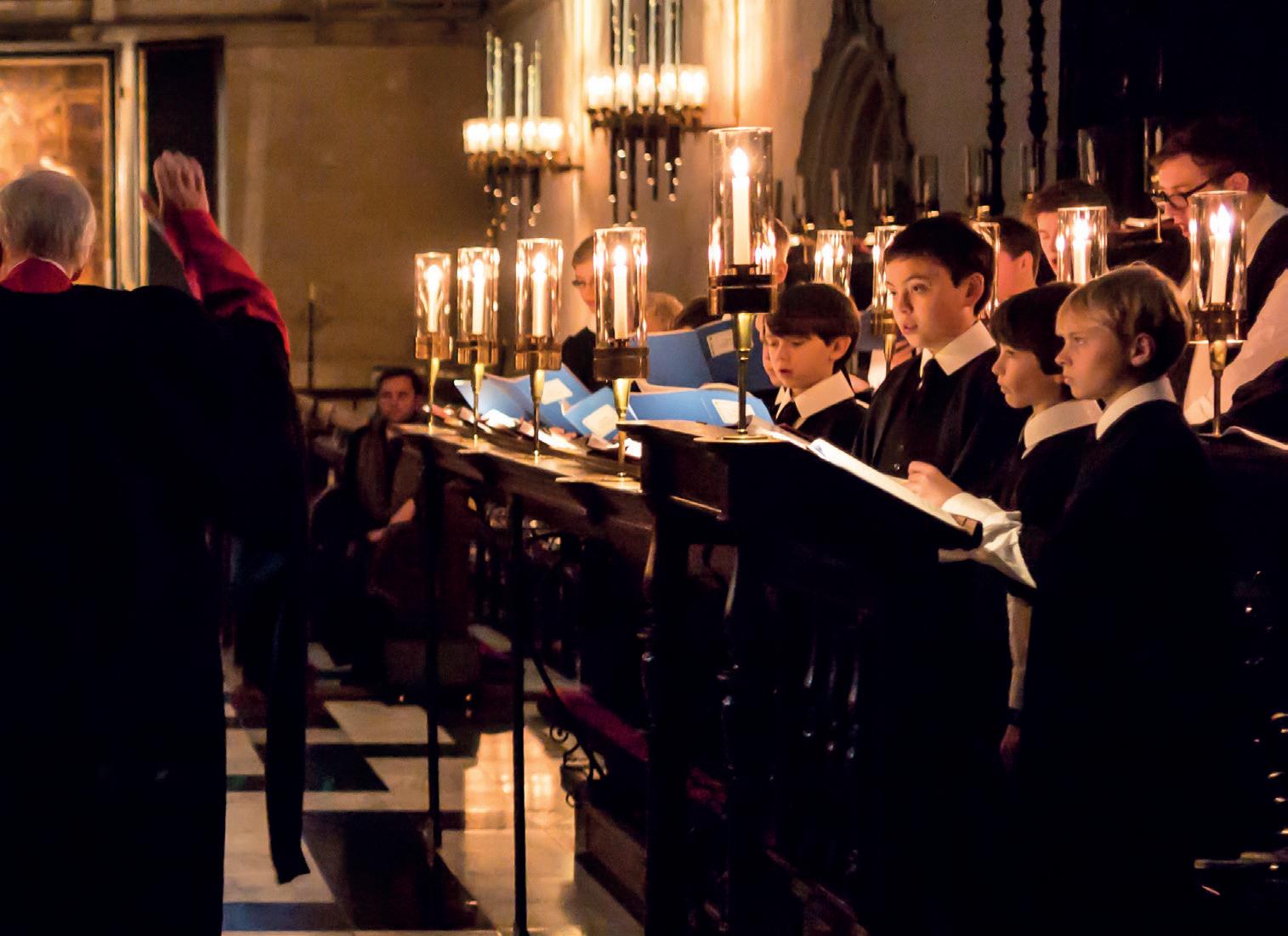
only later did I learn to play the viola a little. I deeply regret never having had the opportunity to play in an orchestra.
“The Three Choirs Festival also meant a lot and made a tremendous impression on me – by the time I was about 12 I’d heard or even sung in many of the great choral works, such as Messiah, Elgar’s great oratorios, Brahms’s Requiem, and the Verdi Te Deum. I also well remember being amazed by Alan Loveday’s playing of the Beethoven Violin Concerto (a work I’ve loved ever since and that I’ve been lucky enough to conduct on a number of occasions).
“Then it was on to St John’s as Organ Student where George Guest was Director of Music. David Willcocks, who by then was Director of Music at King’s College, also took an interest in what I was doing. I accompanied rehearsals of the Cambridge University Musical Society chorus under David, and occasionally took rehearsals in his absence. He kindly invited me to the King’s organ loft for Sunday evensongs. I thus had a wide exposure to a range of music. George and David were formative influences for me. George was very interested in the music of the Roman church. He had visited Spain and was a devotee of George Malcolm, who had done enormously good work in bringing Gregorian chant and Renaissance polyphony into the repertoire of Westminster Cathedral. Guest copied a lot of that so that St John’s choir at that time was probably the only Anglican choir singing any significant amount of Gregorian chant. I remember finding it inexpressibly beautiful when I first heard it, and I also remember Terry Allbright inspiring me to learn Messiaen. Terry was an organ scholar at Jesus and had just bought Messiaen’s Turangalîla Symphonie. Hearing this inspired me to do a complete performance of La Nativité du Seigneur.”
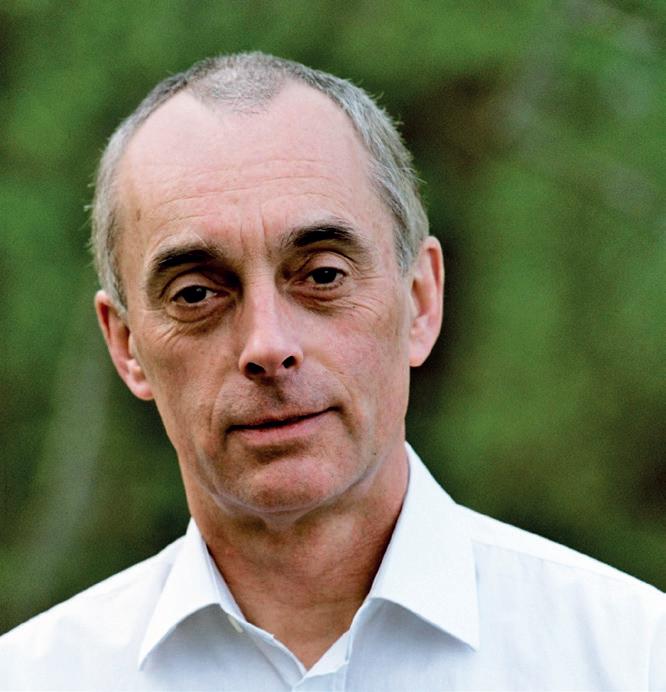
Stephen’s next appointment was as Director of Music at St Matthew’s Northampton, a lavishly-built church with a 4-manual organ, which had been paid for with money put up by the local brewery. “There was a men and boys voluntary choir, which was completely different from anything I had experienced before, and the boys were local children, often coming from quite poor families, whom I had to recruit. Perhaps a main reason for wanting to go to St Matthew’s was because it was known as a good jumping-off ground for aspiring cathedral organists (such as Robert Joyce who went on to Llandaff, John Bertalot to Blackburn and Michael Nicholas to Norwich). Of course, under its inspired

vicar, Walter Hussey, it had enjoyed a huge reputation for commissioning new music – Britten’s Rejoice in the Lamb was the first in 1943, and in my time we had a splendid Missa Brevis by William Mathias in 1973. Hussey also commissioned works of art: there was a wonderful Sutherland ‘Crucifixion’ behind the altar which must have been a model for what he eventually did in Coventry Cathedral; and there was a Henry Moore ‘Madonna and Child’.
“I have never regretted going there because it gave me more strings to my bow (after a really quite sheltered life up to that point). For the first time, one learned about parish life, recruiting choristers, dealing with adults, beginning to realise that the whole operation is more than just about the music, and developing personal skills, administrative abilities and the qualities of leadership needed to enable people to realise their potential.
“I taught at Northampton Grammar School, though I was completely unqualified, and I also took over from Michael Nicholas as Director of the Northampton Bach Choir and Chamber Choir. I’ve never worked so hard as I did then!”
Next it was to London and Westminster Abbey as Sub-Organist under Douglas Guest, who had been appointed Organist there on leaving Worcester in 1963. “It was here that I experienced, for the first time, working with a choir of professional singers, and as the post was only part-time (and part-salary!) I had to engage in freelance activities – and, of course, being part of the ‘London scene’ meant there were plenty of new learning opportunities available. At the Blackheath Conservatoire I taught piano and theory; I accompanied for the BBC Singers and for John Eliot Gardiner’s Monteverdi Choir. It was here that my horizons were widened further.”
After that, in 1979, Stephen moved along Victoria Street to be Master of Music at Westminster Cathedral, a move that perplexed some of his friends. “I went for reasons of ecumenism and I was really excited by the repertoire. It was very much a broadening experience, learning Gregorian chant for example, and an immensely exciting time. Ecumenical hopes were high, there was a new inter-denominational spirit, and

Cardinal Hume was an inspiriting leader. Among my duties was to direct the music for the Pope’s visit to the cathedral and Wembley Stadium in 1982.”
Stephen’s final move was to King’s later the same year. When the post came up and a friend encouraged him to apply, he asked himself, “Am I too young for this?” But, of course, he did apply and looking back on his appointment, he says, “Nobody would take on this position without being conscious of the historic reputation of the choir, and it took me a while to feel at ease with myself in seeking to maintain the tradition, and to seek to develop it. I feel privileged to have had the opportunities it has presented for over 30 years.”
So, looking back over his career so far, which of the many skills he has learned and developed does he think are the most significant in enabling him to carry out his responsibilities at King’s? “Dedication to making sure that every day’s experience is the best it can be, and leadership that shows respect for those under my direction, a clear understanding of the didactic role, and a wide experience of performing a varied repertoire. The job is enormously rewarding but it is with you all the time; six days a week you are conducting a choir service and you want it to be good. When I wake on a Monday morning and know there is to be no service, there is a different feel to the day. The acoustic of the building is beautiful but of course it is also very resonant, so the chief challenge is to achieve a clarity of texture. Another challenge is the motivation of, and the psychological approach to the members of the choir, particularly the choral scholars, because they have to be prepared to spend 20 hours a week singing, as well as carrying out their academic work; there are times when some need a bit of motivating and I have come to realise how this can be approached from a psychological point of view, and what I do in that respect can be be formative for them. Naturally, that increases my sense of responsibility!”
“I was delighted when Christopher Robinson came to Cambridge, and equally, I am honoured to be succeeding him as President of FCM.”
Alexander Armstrong is an actor, comedian, presenter and singer. He was a chorister in Edinburgh and a choral scholar at Cambridge. At the FCM Diamond Jubilee celebrations at St Paul’s Cathedral, where the audience was treated to some marvellous music sung by a choir composed of a chorister from every UK cathedral, he gave the following speech.

Iam delighted to have the opportunity to talk to you briefly about the tremendous privilege of choristership: the single greatest leg-up a child can be given in life.

I’m sure that sounds overblown and, yes, it is a bold claim, but the more I think about it the truer I realise it is. Someone made the mistake of asking me during an interview the other day what the benefits are of being a chorister. The interview ended up over-running by half an hour, and I was barely halfway through my list!
The most obvious benefit is the total submersion in music. This is a complete musical education by process of osmosis. When you come to hang up your cassock for the final time at the age of 13 you will – without even having realised it was happening because you were just having a lovely time singing – have personal experience of every age and fashion of music from the ancient fauxbourdons of plainchant to the exciting knotty textures of anthems so contemporary that the composers themselves might very well have conducted you. You will have breathed life into everyone from Buxtehude to Britten to Bach to Bridge to Bax to Brahms to Byrd to Bairstow to Bruckner to Bliss (and that’s just the Bs I can think of off the top of my head). But you will know them, know them and love them in the way only a performer truly can. Choral music, to this day, has the power to move me so profoundly that I can lose myself in it for hours and just ride out the happy contemplations it evokes. It is a constant and lifelong tiding of comfort and – euphoric – joy.
Then there is the musicianship you absorb as a chorister, not just the music theory, the maths (the Italian!) all of which is very useful, but elegant musical phrasing, the projection of good diction, the shaping of beautiful vowel sounds for optimum tone, the careful precision-singing of a psalm which can only be achieved by listening intently to those around you and blending your tone and rhythm with theirs – all of these skills and sensitivities become second nature and all of them have strange and unexpected use and resonance in later life.
And I must not forget the language – and I don’t mean the salty badinage of the vestry but the liturgy you’re immersed in, the psalms, the collects, the canticles – the poetry you get to sing (Herbert, Donne, Milton, Shakespeare, Hardy and Auden are all poets I first learnt to love – Christopher Smart
I owe my entire career to my experience as a chorister. It was where I learnt to perform, where I learnt to use the full range of my voice; where I learnt to listen, where I learnt to write comedy, where I learnt to carry a pencil at all times...
even – by singing and performing their words). Your lexicon at the age of 13 is astounding, as is your turn of phrase, taught by endless psalms and hymns, and not just the range of your vocabulary but also your innate sense of the poetic. You will have come to know only too well the powerful quiet of an Evensong, or the sumptuous echo of a final amen sung from an ante-chapel but rolling around the clerestory like wine in a taster’s glass.
And let’s not overlook the discipline of choristership; the order it brings to a young person’s often chaotic life, the friendship, the focus. Punctuality is one of the first lessons you learn: the ignominy of arriving even a minute late is something no chorister wants to experience twice. Then selfpossession, decorum and grace are all attributes you quickly learn to fake – in the first instance – before adopting them for real as you gradually mature. But where else in the modern world is a child taught gravitas? Where else is a child taught, for example, to bow with proper dignity and humility?
I owe my entire career to my experience as a chorister. It was where I learnt to perform, where I learnt to use the full range of my voice; where I learnt to listen, where I learnt to write comedy, where I learnt to carry a pencil at all times – but most importantly it was where I learnt the wonderful truth that something exceptional, something as beautiful as anything anywhere, can be created just by you and your friends. I remember on a choir tour to Salamanca (oh – travel! There’s another benefit!), exploring the old cathedral with a couple of friends and, finding ourselves alone in some sort of chapter house, we fired off a Boyce three-part canon just to test the acoustics. A terrible, toe-curlingly self-indulgent thing to do,

but what a sound we made! And what a thing to discover: that we three – children, essentially – carried between us all the components of something so joyous, so perfect, so complete. (And Boyce! There we are, there’s another B for my list.)
I was lucky enough to be a chorister at St Mary’s Cathedral in Edinburgh, which had a good mix of boy and girl choristers as is now fairly typical in cathedrals up and down the country. And both there and at Trinity College Cambridge, where I ended up as a choral scholar, I sang with people from all walks of life (many of whom had their entire educations – at some of the country’s best schools, I might add – paid for by the music they had first learnt as choristers). I sang alongside some people of different faiths and plenty of none at all. And I am always heartened by the ethnic diversity in our cathedral and college choir rooms.
So you see, you don’t need to be a boy to be a chorister, you don’t need to be a toff to be a chorister, you don’t need to be religious, you don’t even need to be Christian. Although, as I say, I’m aware that there is a certain spirituality that all choristers come to know well – something that lurks in the silences of a darkening nave while rush-hour traffic chugs about just yards outside the West door. A spirituality that is wrapped up in the ritual, the mystery and the beauty of this ancient tradition we have become part of. And I’m going to call that spirituality ‘the privilege of choristership’. That is what we must celebrate, and preserve for the future, ‘throughout all generations’.
The Royal School of Church Music supports the work of cathedral musicians at every level under Director Andrew Reid and Head of Choral Studies Adrian Lucas.

In addition to a broad programme of parochial support, ministerial training, and related publications, the RSCM is responding to cathedrals’ requests by training organ scholars-elect in a latesummer Survival Kit course. Also, ex-chorister boys and girls may audition for the Millennium Youth Choir which offers high-calibre and context-based learning to older teenagers and young adults.
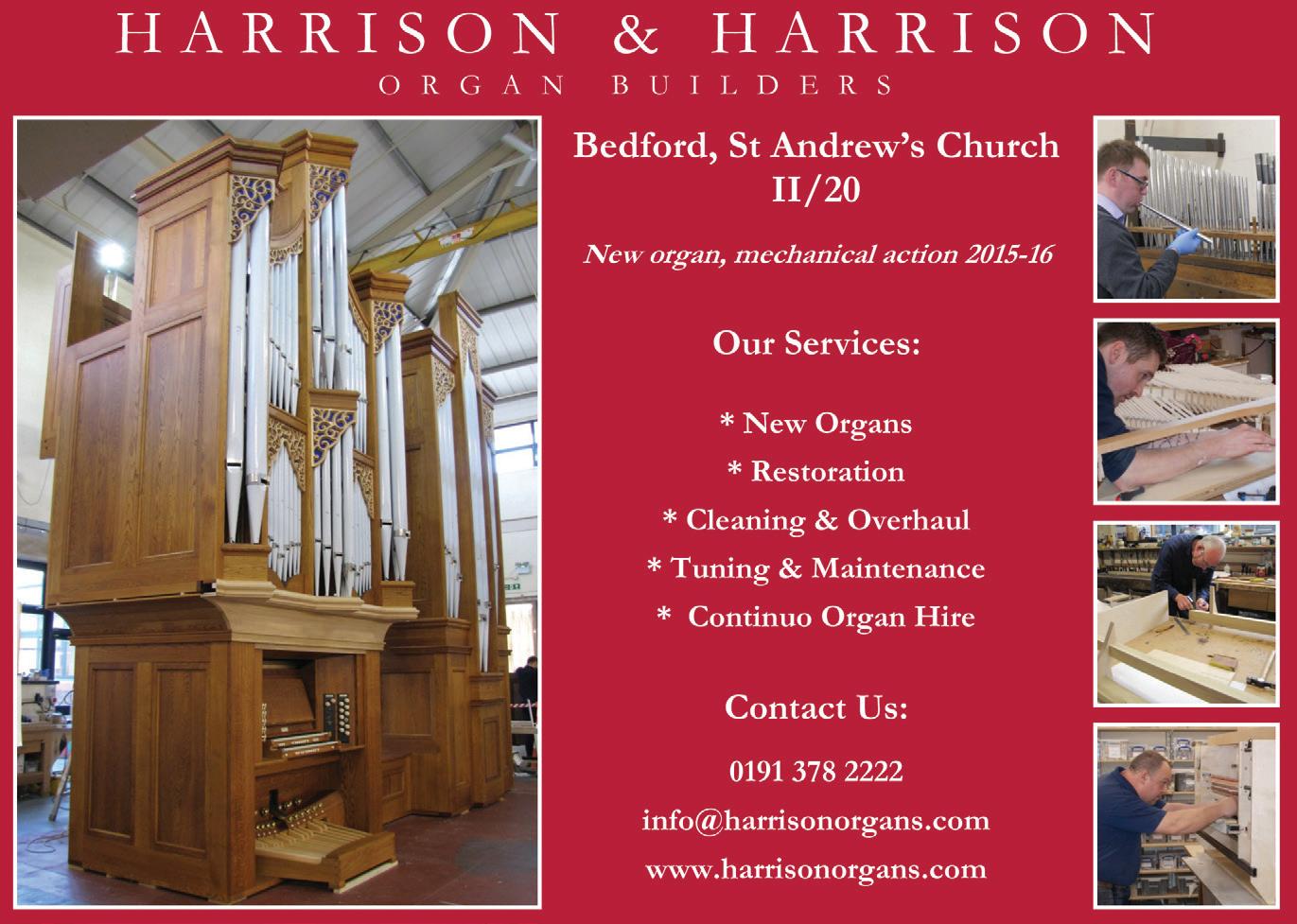
To find out more about suitable courses and opportunities, visit our website at www.rscm.com/learn-with-us
Cathedral Music is also now an imprint of RSCM Press – see the catalogue at https://www.rscmshop.com/cathedral-music.html

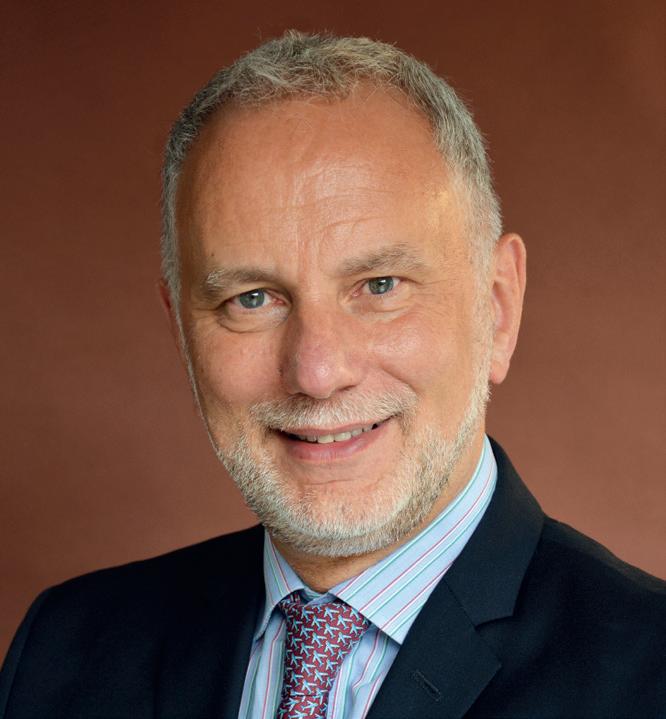
been
and
Iwas brought up in Jarrow, on Tyneside. My mother was a teacher and my father an electrical draughtsman at Swan Hunters. I owe my mother many wonderful things but I think she would not have been hurt to be described as ‘unmusical’. My father, on the other hand, was a keen amateur musician who enjoyed jazz and big band music. His father, Robert, was also a musician who composed the hymn tune Gresford, known for many years now as ‘the Miners’ Hymn’. This has stirred up a good deal of interest in the last ten or so years with a BBC Radio 4 Soul Music programme devoted to it, a book by Peter Crookston (The Pitmen’s Requiem) which interweaves the life of my grandfather with the story of the demise of the mining industry, and the unveiling of a blue plaque at my grandfather’s home by Tony Benn in 2011.
Whilst my background was not the traditional one of a church musician, a strong musical thread ran throughout my childhood. When I was three or four years old, my mother would take me to a children’s service on Sunday afternoons and I do remember clearly my fascination with the organ, even at that age: I would watch for the appearance of the organist in the gallery and enjoy his ritual of turning on the motor and light, finding the hymnbook and drawing some stops. (My recollection of the content of the services is a little less
Music at St Chad’s Cathedral, Birmingham, since 1978 and was Principal of Birmingham Conservatoire until 2015. One year after his retirement from the Conservatoire, he reflects on his career to date.
sharp...) When I was eight, I joined the parish choir and also began piano lessons with Jarrow’s formidable but wonderful Madam Annie Hall Rankin. Five years later, I began organ lessons with the excellent Clifford Hartley in Sunderland. He took me to ARCO before I left him to go to university.
I was fortunate to gain the organ scholarship at Hull University, which proved to be perfect for me. As a Catholic, I simply did not have the experience to undertake a role at a major (Anglican) choral foundation, but Hull gave me the opportunity to cut my teeth through recruiting and directing the chapel choir which sang once a week. I was very green, and I remain grateful to the singers who indulged and tolerated me! Hull also gave a recital each term on the then very new Walker organ in the Middleton Hall, and offered me lessons with Alan Spedding at Beverley Minster.
A meeting with Terry Duffy, Organist of Liverpool’s Metropolitan Cathedral, when I was still at school led, indirectly, to my becoming the first organ scholar there. I held the post from 1975 to 1977 and I loved it – that building, that organ, that acoustic, Terry’s marvellous accompanying, and working, for the first time really, with a professional and inspiring choir director, Philip Duffy. By this time, I was also
having lessons with Gillian Weir and, looking back, I can see all the more what an amazing and critical period this was for my professional formation.
Leaving Liverpool was very difficult, but after five years of being a student options were running out and so I took a teaching job in Newcastle. Very early on, the Head ordered an organ for the school hall on the basis of my being there, so it probably came as a bit of blow when I accepted the post at St Chad’s in Birmingham only a few months later. Not that the decision to move to Birmingham was an easy one: if only we could know in advance the rightness or otherwise of a decision! This is how it all happened.
The scene: it’s November 1977 and I am sitting in my parents’ house, reading the Musical Times
Me: “Hey, listen to this! They’re advertising the Organist and Director of Music post at St Chad’s Cathedral!”
Reaction: strangely muted. My parents were enjoying having me back in the north east, and I liked it too. However, after the intense musical activity in Liverpool I was beginning to be frustrated that there was no outlet for deep interest in church music in Newcastle. I knew St Chad’s from a visit in 1969 with my church choir for a Pueri Cantores festival and
had been thrilled to be shown the new organ by Roger Hill, then Cathedral Organist.
And so it was that I went for an interview. A few months later, my parents looked on with a mixture of pride and anxiety as I resigned from my school job and moved to Birmingham in the summer of 1978 to take up the post. Thirty-eight years later...!
I remember feeling slightly underwhelmed, to be honest, when I walked into the cathedral on the day of my interview. After Liverpool, St Chad’s seemed rather small, and I wasn’t immediately certain that the very part-time job would be sufficiently attractive to warrant the major upheaval of giving up my full-time teaching post and moving from Newcastle. As someone who dislikes change anyway, this was a consoling thought and one which helped me relax for the interview. On the other hand, my competitive spirit pushed me to perform to the best of my ability and later in the day, ambivalence gave way to ambition when I rehearsed the choir and realised both its potential and the glorious acoustic of the building.
I already knew that the choir had been endowed in 1854 by cantor/choirmaster John Hardman. St Chad’s was the first Catholic cathedral to be built in this country after the Reformation and the choir was the country’s oldest endowed
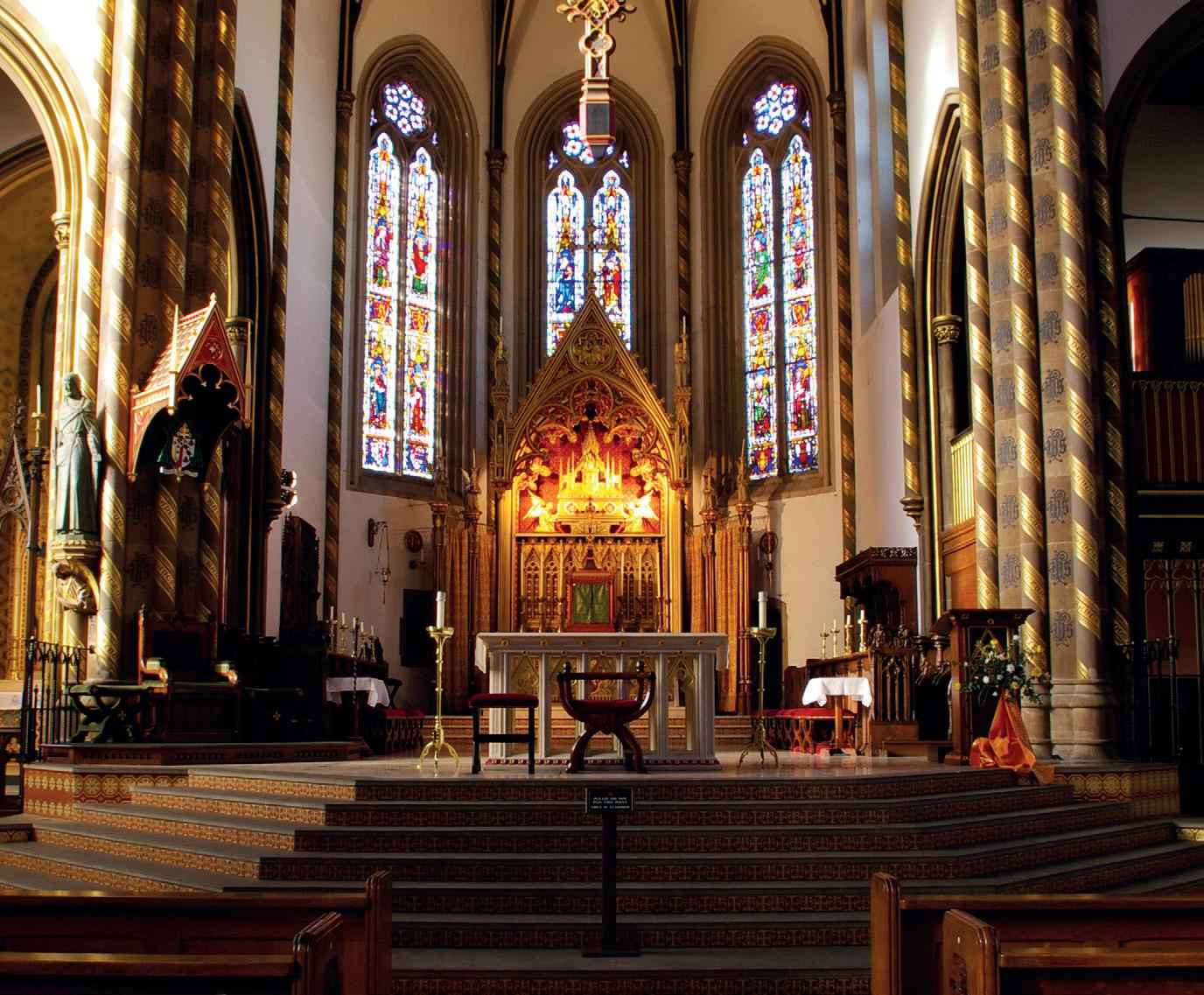
Catholic cathedral choir in the country. Hardman also drew up a set of choir rules designed to foster the singing of plainsong and polyphony.

The situation seems to have been stable for over 100 years, with the choir singing high mass and vespers – full Latin, of course – every Sunday, and in place for all the major festivals. Sadly, by the 1960s things were not so rosy, and the closure of the cathedral in 1967 for a major restoration sounded the death knell for the choir. The difficult task of re-establishing the choir was begun in the early 70s and taken on by John Harper, my immediate predecessor. Thanks to John’s efforts, the choir of men and boys was once again in a fairly healthy state when I arrived and he had done much to develop a local tradition which was neither the full-blown Catholic tradition of pre-Vatican II days, nor, thankfully, did it embrace the lowest common denominator approach prevalent at that time.
The move to Birmingham was financially a little risky for me, and so I had to look for other sources of income. The job was, after all, very part-time. One of the areas suggested to me for investigation was the then Birmingham School of Music and I went there to meet John Bishop, who offered me some organ teaching and theory classes. The BSM was a very small
institution compared with what it is today. I believe it had around 180 students, offered only graduate diploma courses and operated from a half-completed building in the middle of a deserted building site.
I suppose I really expected to be in Birmingham for only a few years, just sufficient time for the world to discover my precocious talents. (I was a super-confident 23-year-old.) What actually happened is that my work at the BSM increased year on year and in 1981 I became a part-time, salaried tutor. Subsequently, and as the school grew, I became Head of Organ following the retirement of George Miles and John Bishop, Director of the Chamber Choir, and then full-time member of staff in 1992.
By this time, the School of Music had been renamed Birmingham Conservatoire and it was leading the way in its sector with the introduction of Bachelor awards, and then Masters and PhD programmes. The Conservatoire is part of a university, unlike other free-standing UK conservatoires, but it has always punched somewhat above its weight and offered a less formal, innovative alternative to those august institutions. These days, it is definitely considered by applicants to be on at least an equal footing with sister colleges and in several disciplines the ‘go to’ place!
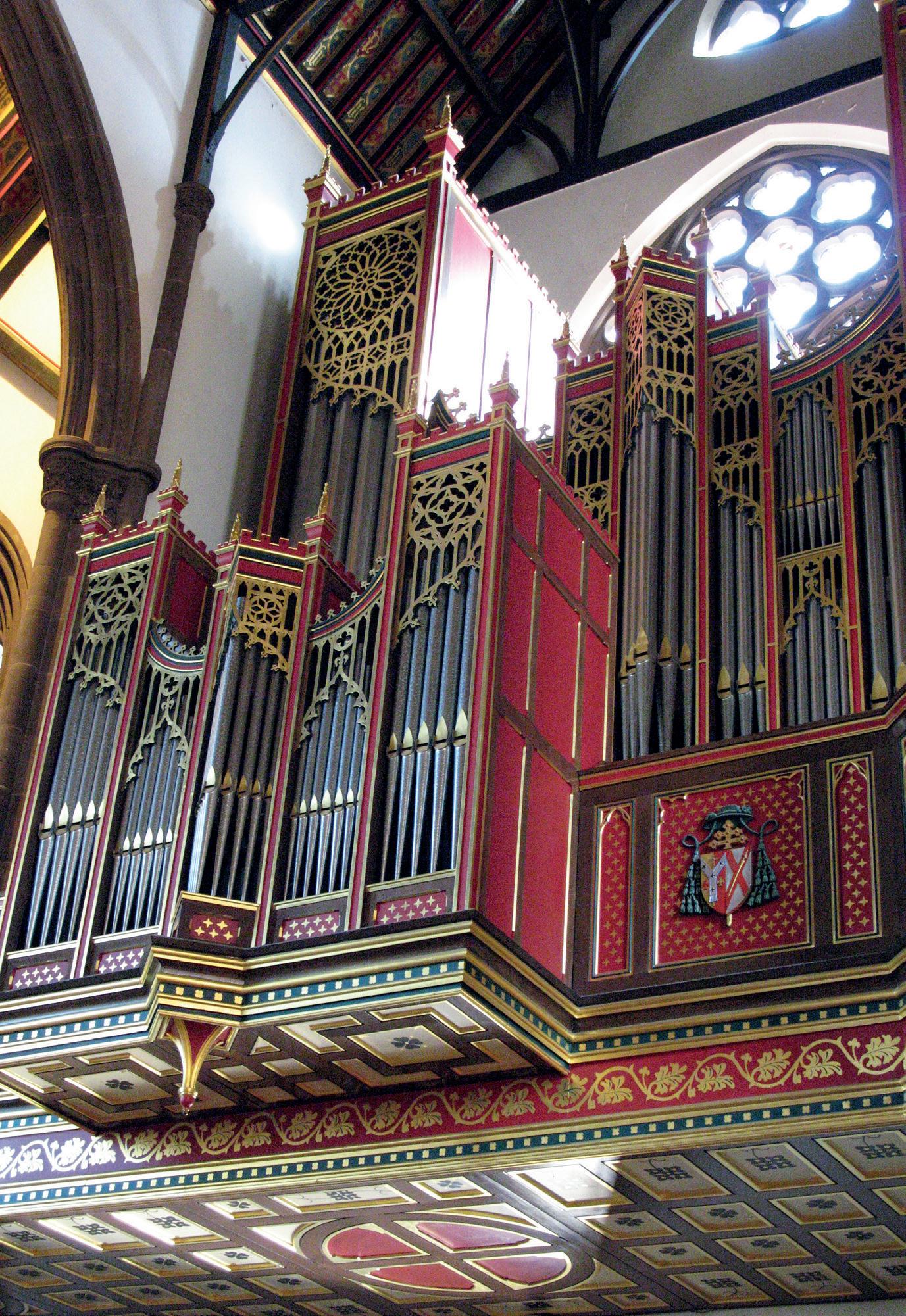
When I retired, plans for a new building were well under way. The present building will be used for one more year but vacated during summer 2017 at which point staff and students will move to new premises in the middle of the vibrant Birmingham City University main campus in the city’s new ‘learning quarter’. The opportunity to build a new conservatoire does not occur very often, and Birmingham’s will be the first – and possibly the last – to be built from scratch this century; and with a brand new facility, it is so much easier to build in digital technology resources as well as incorporating the latest thinking on concert hall design and soundproof studios. The Conservatoire will have five public performance spaces: a concert hall, recital hall, jazz studio, a black box experimental music space, and an organ studio.
I am particularly pleased to note the success of the organ department, under the inspirational stewardship of Henry Fairs. Currently, the organ in St Chad’s, of which more later, is the main teaching and examining instrument, but mediumterm plans include the commissioning of new organs built in particular historical styles which will complement the city’s stock of wonderful eclectic organs. I feel that in the next few years Birmingham will become a major European centre for organ studies. The postgraduate choral conducting programme with Paul Spicer also makes it an attractive place for budding choral directors. I know that my successor, Julian Lloyd Webber, shares my interest in the organ department, not least because his own father was, of course, an organist.
whether I should stay at St Chad’s when an unexpected opportunity arose in the form of an appeal for the restoration of the cathedral fabric. Whilst replacing the ‘cast-iron rainwater goods’ and re-leading the windows were both necessities, I felt the appeal lacked a certain... how shall I say?.... glamour. At the same time, the organ – an impressive, 4-manual Nicholson with a second organ in the chancel – was becoming less reliable, and I realised that unless I managed to have some major work to it included in the appeal, it would probably be another ten years before anything might be considered. What I had not expected was the reaction to my proposal of Archbishop Maurice Couve de Murville, who decided that we should build a new instrument in a new west gallery. (He was particularly interested in the case, designing some of the pipe shades himself.) Nicolas Kynaston was appointed to be our consultant and after an exhaustive tendering process, Walkers were given the contract.
From my point of view, this was just the stimulus I needed and the years from 1989 to 1993 were terrifically exciting. Nicolas was determined that the organ would be versatile and fullblooded and through his formidable negotiating skills the initial scheme of 22 stops grew to 40. The handsome case was designed by David Graebe and painted in the colours Pugin had chosen for the cathedral. The result was, and remains, stunning. The combination of vibrant voicing, generous acoustic and gorgeous casework makes this one of the most successful recent organs in the country.
Reinvigorated as I was, I could not ignore the fact that it was becoming more and more difficult to maintain numbers and standards in the cathedral choir. When I first took up my post, parents would put the choir ahead of other activities for their sons, but by this point it was more usual for parents to apologise to me for their sons’ absences due to football/ swimming/chess etc etc. With the support of the cathedral authorities, we introduced choral scholars from both the Conservatoire and Birmingham University with the idea that they would work with the boys but, really, the writing was on the wall, and by 2003 the choir had become an entirely adult one.
I am sorry that the demise of the boys’ choir occurred on my watch, but I am also certain it was the right course of action. Today, we have a choir of some 22 singers and are able to be ambitious in our repertoire choices and to explore less mainstream composers such as Maissano, de Monte and Padilla.
Retirement from the ‘day job’ does mean that I can now devote the time to St Chad’s that I want and that it deserves. Much has happened in the years since my appointment, but I would highlight two events as particularly significant: the building of a new organ in 1993 and the transition to a professional adult choir in the early noughties.
By the late 1980s, I had been at St Chad’s for ten years. The Conservatoire had unexpectedly become the focus of my professional life and the challenge of running a voluntary boys’ and men’s choir was less stimulating than it had been. I was certainly thinking about what I wanted to do next and
Retirement from a job which occupied most of my waking thoughts and, indeed, time, has not meant that I am not busy. The difference, as all retirees know, is that I am able to be selective – I am busy doing things that I have chosen to do. I enjoy the challenges of being Executive Vice President of the IAO and trustee of various charities; I enjoy practising and playing the organ in a way I haven’t for years; and I am enjoying exploring fresh repertoire with my choir. It’s a delightful point to reach in one’s life. My ambition now is to continue along the same lines and see just how good a player I can become at this late stage. At the same time, I hope never to reach the point where I am the only person not to realise it is time to give up!

as well as including stimulating features, a wealth of educational material and reviews of organrelated music, CDs, DVDs, books and much, much more.



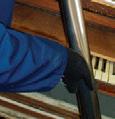

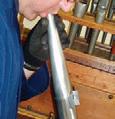

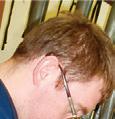





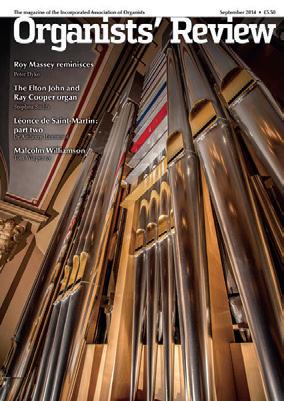






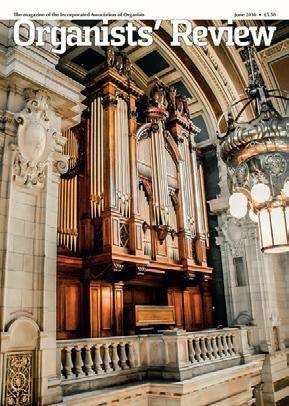

TO



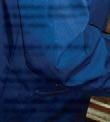
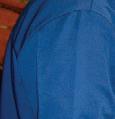













Director of Music George Richford writes about an almost forgotten abbey and a different choral tradition in a hidden corner of Hampshire.


Perhaps because it is situated off the beaten track, not quite in the New Forest – although not far from the city of Southampton – or because it lies equidistant between the architectural marvels of Winchester and Salisbury Cathedrals, or because the distractions of Peppa Pig World lure the great majority away from it in a different direction, one can forgive those who ask, ‘Where is Romsey?!’
The Abbey in Romsey is an enormous Norman masterpiece. It has a foundation dating back to around 907 AD, when King Edward the Elder established a community of Benedictine nuns in the town, and it is the largest surviving medieval nunnery anywhere in the British Isles (the nuns have long since departed). To the west, and eventually running into Southampton Water, lies the River Test, a world-renowned chalk stream and trout river and, as legend has it, the one in which the Abbey’s patron, St Ethelflaeda, used to stand naked to recite the psalms.
Choral music is thriving here. Excluding school choirs, there is approximately one choir per thousand people in the town (there are 14,000 inhabitants). It is not a case of ‘Do you sing in a choir?’ but ‘Which choir do you sing in?’. There are youth choirs, bands and orchestras that contribute to the rich and varied musical life of this extraordinary town, and the Abbey choirs are no exception.
After my initial drive for choristers earlier this year, we have 25 girl choristers (aged between 11 and 18), 28 boy choristers (aged between seven and 13), 14 regular altos, countertenors, tenors and basses forming the back row, several choral scholars from Southampton University, a training choir of around 20 boys and girls who are on the waiting list to join the Abbey top lines, and now an Abbey Consort which is for adults, former choristers, and students from Southampton. All in all, we have over 120 singers.
The Abbey congregation on a Sunday morning regularly tops 300, with up to 800 in attendance for the usual Christmas and Easter celebrations. There are often 100 in attendance for Choral Evensong on Sunday evenings. Romsey Abbey choirs are a testament to the fact that choral worship is still relevant, alive and well in the 21st century. Despite the pessimism and the apocalyptic forecasts of empty choir-stalls and tumbleweedstrewn naves, it is possible to ‘survive and thrive’ as a parish choir in today’s world. What are we doing differently?
Firstly – the role of Director of Music is one of politician, administrator, manager, strategist, librarian, organiser, pastoral assistant, helper, someone to talk to, email replier, tidy-up-er and… musician – in that order! Being DoM at any large, active church is a multi-faceted job, and those who undertake the role have to be flexible. There may be

no administrative staff or other employees; often musicians end up doing jobs that they may not want to do, but which nevertheless need doing. Central to the musicians’ role at the Abbey is being a part of the community, living in the town, and taking the time to talk to people.
Secondly – the relationship of the choirs: ‘Tradition’ is a much-used word in church music circles. It can be used as a defence mechanism, a justification or a cause worth fighting for, and it can also be loaded with politics. The tradition of Romsey Abbey is that there are sung services. This is apart from, but not divorced from, our peculiar history (in Romsey, girls and women were worshipping and singing for 500 years before boys and men arrived to lead choral worship). Girls are a central part to that tradition in the Abbey; this year we celebrate 20 years since their re-establishment by Di Williams, and their first CD, Adoration, is being released this November.

I hugely value the history of boys singing and also the importance of boys singing today. Without it, the flow of young men into back-row positions in chapels, cathedrals and churches across the country would be endangered. When I arrived in Romsey I had 11 boys on the books, which for a church the size of Romsey (and with a chancel wide enough to park a bus), was both terrifying and unsustainable. Thirdly, then, and very importantly, is recruitment.
Our campaign took two months of hard slog, 28 schools visited, 984 emails, 47 miles of walking (to visit potential choristers at school and at home), 1000 flyers, 500 posters, a specially devised SMS text service, a taster day and all the accompanying sweat and tears. We were rewarded with 18 new boys in the choir, and a further 16 eager boys on the waiting list, happy to sing in our newly established training choir. All in all, we now have 40+ boys ‘on the books’. It was very hard work. There are no shortcuts, and no secrets!
Next came the even harder work of training the choir up to standard. For us, this was a matter of meticulous, but flexible, strategy. Before Easter 2016 I had ten boys remaining and my task was to make them able to absorb 18 new boys. I had to
engender responsibility, and a work ethic that was conducive to accepting so many new boys who varied in age from seven to ten years old. I needed to be able to use my existing boys to model singing, blend, musicality and behaviour in a way that made for a happy and controlled expansion. We had only six months to achieve this.
The boys’ rehearsal schedule now gives us 1½ hours each Monday and Thursday. To maximize the chances of retaining the new ones, it was pointless to continue rehearsals as if nothing was different, so I streamed them: Mondays became the day for all the boys to sing together. We focused on learning repertoire and the techniques of singing, general churchmanship and everything else that old hands do without thinking. I devised games and methods whereby the new boys could absorb these techniques by ‘doing’ music, not just being ‘told’ music. ‘Sound before symbol’ was and is the mantra. These sessions were differentiated accordingly but also succeeded in engaging the more experienced boys through responsibility as well as firming up good practice.
Thursdays continued as usual for the more experienced boys and, crucially, the brave and determined new choristers who were hungry for the challenge. These rehearsals were almost identical to the ‘old’ Thursdays, and so the new boys were thrown in at the deep end. Good old osmosis and the fundamentals of ‘listening before doing’ governed these rehearsals, but they brought more advanced learning, much like having an accelerated group at school.
To begin with, the complete boys’ section sang only one or two services a month. This was a gradual immersion but it works well if started straight away. From September onwards, the boys have been singing everything together as one homogenous top line. Music is generally straightforward, with Early Music and Victoriana being the staple repertoire. Our girls, on the whole, sing contemporary and baroque repertoire, to complement the boys’ repertoire and to ensure they have a sense of individuality and specialism. The aim is to have an appropriate number of choristers to sing choral services at the Abbey to a high standard within two years.
Fifth: it has to be admitted that church music and choral singing isn’t ‘cool’. Don’t try to make it something it isn’t. It is an art form that is fundamentally expressive, meaningful, beautiful, and sometimes exciting, and it should always be engaging. The trick is to make this super-subtle and expressive medium valuable and satisfying to 21st century kids with 21st century eyes and ears and distractions. Personally, I don’t try to do things that are immediately catchy or unanimously loved by everyone. I find and demonstrate value in everything we do, and assign repertoire by the challenge it presents. We do lots of verse-anthems and Early Music – and yes, the boys love it! We do the big, fat, English repertoire from c. 1850-1950 for a different kind of challenge. I also schedule music that I personally dislike, but the value of which I appreciate. After all, it isn’t only the music itself that will determine whether or not a boy or girl stays in the choir – it is the way it is delivered.
But as with other church choirs like ours, we need support. There is an abundance of support for smaller parishes through the RSCM, Church Music Futures and other trusts and organisations. Then there are mechanisms that share knowledge and resources for cathedrals – the Cathedral Organists’ Association, the Choir Schools’ Association, etc. But what about us – the forgotten middle: the larger parishes, the greater parish churches and those of a similar ilk? We do not have the practical resources of most cathedrals and colleges – and I am not speaking just about money. I, and others like me, do everything ourselves and rely on the support of our parents, choir associations and ‘willing’ volunteers.
It isn’t that many of the resources aren’t relevant to us – they are. But I think that there can be an assumption that the larger parish churches and those like them just get on with it – ‘play cathedral’, or make this all happen by magic. It is backbreaking work where every conceivable aspect of running a music department falls on our own shoulders. I deal with, on average, 140 emails, text messages or phone calls every day. I am at work from the moment I open my eyes in the morning to when I fall asleep at night. When all is well, it’s a worthy reward. If things go pear-shaped, it is your own head on the block!
Romsey Abbey may look like a cathedral, the choir may dress like a cathedral choir and may even sound like a cathedral choir, but it isn’t one, and it doesn’t pretend to be. Running departments like ours in Romsey, and in other large parish churches, requires enormous effort, even just to bring in the requisite number of people to sing for a single service. We recruit and train cathedral-sized choirs with tiny budgets, with few if any employed staff, and little or no shared resources.
So, what of the future? I would like to see a Greater Churches Music Conference or similar, something that offers collaboration, the sharing of ideas and resources, and an arena in which the bigger church music departments can participate. I should like to see a pre-existing trust or organisation take the lead in this initiative. It could or should be open to those larger musical foundations which provide two or more full choral services each week, not just those in the ‘greater church network’. Practical issues could be addressed, such as ordering music storage boxes, choir medals, new music and cassocks etc, and also advising on marketing, advertising, and things like finding the best psalters. But it would also be a place where like-minded musicians can discuss different initiatives that have worked for them. Recruitment must surely be top of everyone’s list – for without it, we have no choirs and thus no music in our churches.
I’m not complaining, though it may sound like it! I love my job and, like other places, we are lucky in that we have a fantastic team, a wonderful choir, and great parents and supporters around us that make this ministry possible, week after week. I am certain that more can be done to help foundations like ours; our musicians, clergy and all the people that make things happen need support.
So, don’t forget about places like Romsey Abbey – those Norman churches or gothic priories that continue to echo with choral worship. Visit them, worship in them, and support them where you can – or what you value most may not be there when you next look.


There’s no doubt that Choral Evensong has a dedicated and growing following on the radio in the UK – and many weeks bring us grateful feedback from internet listeners abroad too. Such is the increasing awareness of Choral Evensong’s therapeutic properties – sublime music performed to the glory of God in magnificent surroundings – that there’s even a website which will tell you the nearest venue where you can hear and see it sung if you input your postcode (www.choralevensong.org).
As Giles Fraser commented in the Guardian, Choral Evensong can become ‘an emotional anchor, a way of patterning our lives with time and quietness. Our internal clocks are readjusted to tick along to a rhythm that is at once slower and yet also more expansive than the one that regulates our souls throughout the rest of the day. It becomes a sort of cradling.’
So wrote an appreciative listener to BBC Radio 3’s Choral Evensong ten years ago on its 80th anniversary. And I quoted those same words at the end of a Cathedral Music article around the same time. It’s worth then reiterating straightaway, as we celebrate the programme’s 90th anniversary – happily coinciding with the 70th anniversary of the launch of the Third Programme, established in 1946 – that Choral Evensong is the BBC’s longest running series ever. Indeed, there’s no other programme in broadcast history which can match its longevity. Apart from a brief blip in 1970, it’s been broadcast weekly since October 1926 – firstly on the National Programme from Westminster Abbey, then from St Paul’s Cathedral and York Minster. It continued on the Home Service (which became Radio 4 in 1967) and Radio 3 took it over in 1970. During the war, from 1940-1942, the live locations of Choral Evensong weren’t revealed – simply from ‘a northern cathedral’ or ‘a western cathedral’ or occasionally ‘a public school chapel’. Since then, over 80 different venues have been visited in this country and abroad – cathedrals and abbeys, parish churches, college chapels and monasteries – and, having experimented with two services a week and for a brief period a live transmission on a Sunday, the service now goes out live on a Wednesday afternoon and is repeated the following Sunday afternoon. It’s a very satisfactory arrangement and it attracts around a quarter of a million listeners each week if you add together those who listen on Wednesdays or Sundays (or both). It’s also available via the BBC Radio 3 website for 30 days after the initial broadcast.
So what are the issues involved in putting together a weekly schedule of a worship programme which will nourish the soul as well as sit comfortably alongside the rest of Radio 3’s high quality output?
Most importantly, Choral Evensong is an opportunity to promote what cathedrals offer on a daily basis. The programme can be a snapshot of a particular place on a particular day. But there are inconsistencies in following that argument too closely. How many cathedrals put on a sung Evensong lasting a full hour in the middle of a weekday afternoon? A perfectly legitimate comment has been made more than once to me that the BBC encourages the ‘out of the ordinary’ by, for example, allowing bidding for dates to coincide with, say, patronal festivals. This could be said to ignore the ferial nature of much of cathedral worship – the Opus Dei – the daily round. But it seems to me that the listener likes to hear what happens in specific places on their special festal occasions – provided that not every week is a festival!
An hour is a long time to fill. Is it too long for a ferial service in ‘ordinary time’? I would say it isn’t, because it allows a decent amount of psalmody and, if required, the opportunity to sing an extended setting of the canticles or a long anthem. And the organ voluntary has sometimes been known to last a full quarter of an hour. Why not? Sadly in so many cathedrals, the voluntary at the end of the service isn’t given the proper attention it deserves. We try never to fade a piece of music unless it is absolutely necessary – which is why listeners regularly express their appreciation at being able to hear
‘You could call it calm or spirituality. You could call it holiness – but it’s very precious.’

a complete organ piece uninterrupted by congregational chatter…
Mention of psalmody raises a concern that many cathedrals are reducing the amount of psalms the choir sings at Evensong. It’s a worrying trend because the psalms surely lie at the core of the Daily Office. They are the essence of the Jewish synagogue worship that Jesus himself would have known so well, and they shouldn’t be glossed over. I must admit to a particular enthusiasm for the 15th evening (Psalm 78 with its 73 verses) when it falls on a Wednesday. Indeed, there have been some very fine interpretations recently of its epic qualities, clearly relished by both the choir and the organist, who has plenty of opportunity to add colour to the drama with imaginative registration. But cut down the psalmody to a mere handful of verses and one of the highest expressions of the Anglican choral tradition, with an order of service rooted in Thomas Cranmer’s Book of Common Prayer, is lost.
Any discussion of the content of Choral Evensong and how a broadcast is planned raises the sensitive question of the quality of the speech. Of course Choral Evensong is highly musiccentred, but the speech needs just as much attention, so that it blends into a network which prides itself on thoughtful and dignified presentation. It concerns me a lot when I arrive at a broadcast venue to discover the readings haven’t yet been allocated or, even worse, the prayers or intercessions haven’t been written. Perhaps it’s worth saying that we receive just as much praise and criticism of the spoken word as for the sung portions of the liturgy. Fortunately, there are still many imaginative and enterprising clergy who are prepared to take a few risks in creating the shape of a broadcast service. The time after the three collects can be said to be outside the structure of the set liturgy, so there’s space for perhaps the inspirational juxtaposition of prayers and a short anthem. Further reflection on the theme of the lessons may be offered – especially if the Additional Weekday Lectionary is used, the purpose of which is primarily aimed at those who only attend Evensong occasionally. Above all, here’s an opportunity to hold before God our sometimes mixed-up feelings and translate them aesthetically into something worthy of wonder.
It’s often said that music takes us deeper into the heart of God. So, bearing in mind that it’s in the hands of the musicians that the Church is at its most emotionally compelling, probably the most important issue in broadcasting a regular weekly worship programme must be the choice of repertoire. Anecdotal evidence suggests that listeners particularly enjoy the more
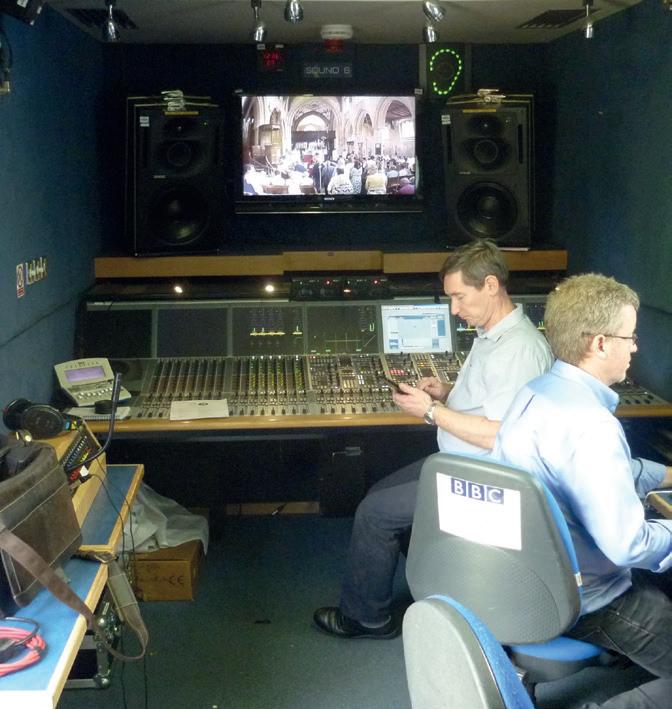
familiar pieces. But the Radio 3 audience – indeed the Choral Evensong congregation – don’t shy away from something more adventurous that may have been chosen to showcase the choir’s abilities. They expect to be challenged – though it’s worth remembering that it doesn’t take much longer than a few seconds at the beginning of any programme for people to switch off the radio if they don’t like what they’re hearing. So if the introit is a tortuous motet setting some obscure words, it’s hardly likely to encourage the listener to stay with it, let alone find it an inspiration to worship.
While I’ve been producing Choral Evensong, the opening of the service has been changed on several occasions – although I suppose the most dramatic time when that didn’t happen was when we broadcast a jazz Choral Vespers with the Big Buzzard Boogie Band from Clifton Cathedral in 2002, incorporating some of the pieces composed by Duke Ellington in the last years of his life. We had nine calls to the Broadcasting House duty office during that transmission. Five were strongly in favour and the others said they didn’t tune in ‘to listen to a pop concert’. One left a message hoping that the ghost of Lord Reith would haunt me for the rest of my days!
Four years later, we followed it with another jazz service, a ‘Blues Evensong’ from the University Church in Oxford, brilliantly conceived and composed by the renowned baritone, Roderick Williams, and sung by a very talented student choir, Schola Cantorum of Oxford. The broadcast was repeated this year in October as part of the archival celebration of the 90th anniversary of Choral Evensong. When it was first transmitted, live on the day of the Encaenia ceremony in June, the university was in festive mood, awarding honorary degrees to distinguished men and women and commemorating its benefactors. The carnival atmosphere was very much reflected in the style of the broadcast and the response in general was encouragingly positive – although inevitably there were one or two listeners who weren’t so impressed.
Radio 3 aims to promote and encourage new music whenever it can, and through Choral Evensong, we’re able to demonstrate that the tradition of composing for the Church’s liturgies is still alive. That has been well established in the regular broadcasts from the annual Festival of Music within the Liturgy at Edington Priory on the edge of Salisbury Plain. For many years now, every May, we’ve visited the London Festival
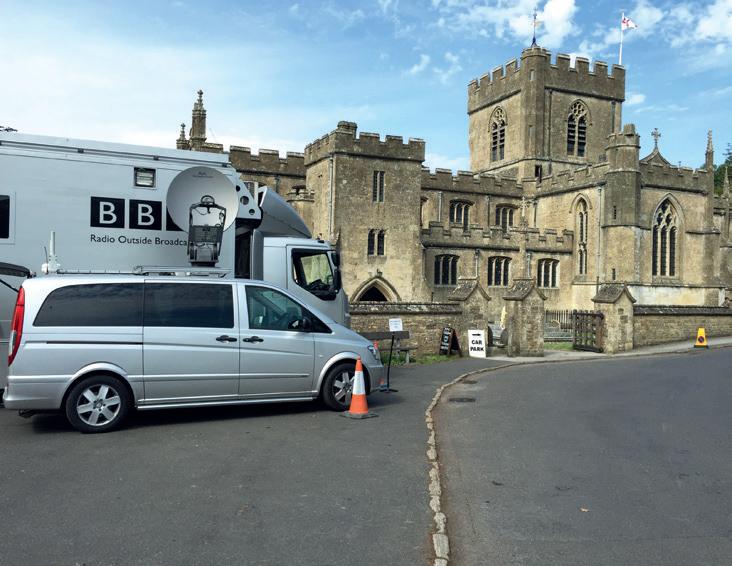

of Contemporary Church Music in St Pancras Church for some excellent services where the music is sung with real flair and precision and the worship led with care and sensitivity. We were also able to broadcast in the Queen’s Diamond Jubilee year, 2012, 12 newly commissioned anthems from the Choirbook for the Queen, a collection brought together during the ten years since the Golden Jubilee of Her Majesty’s accession to the throne.
Yes, occasionally I’ve heard people say that the complexity of some modern music doesn’t enhance the worship at all, especially if the spoken parts of the liturgy haven’t been carefully prepared. But a challenging anthem, which may be criticised for just being there to show off the virtuosity of
the choir, can be integrated into the worship so much more effectively if the prayers that follow it pick up both its mood and its text. It’s a question of balance: is it better to choose the tried and tested as far as the music is concerned or present the listener with something more daring? Whatever the decision, it’s worth remembering that the inevitable extra nervousness brought on by a red transmission light isn’t the time for experimenting with less experienced soloists or an unfamiliar piece which hasn’t had a good run-in.
The essence of a broadcast Choral Evensong must always be its spiritual dimension. It must sit within the tradition of regular worship which goes on day by day in so many cathedrals, churches and chapels all over the country. And it should have

the flexibility to live and breathe and change according to what’s happening in the world for which it prays.
And that brings us neatly back to where we started: the appreciation of the precious calm that Evensong can create. The beauty of the music and the spoken word unlocks the spirit and allows it to soar – without confrontation, without the demands of affiliation – rather, an encouragement to seek truth at an individual’s own pace, in his or her own way. The regular broadcasting of Choral Evensong has been described as a ‘spiritual lifeline’ by many a listener. Long may it continue.
The choir has been through many changes over the years. It began as an all-male choir, developed into an all-adult choir, and now it numbers around 35-40 adults (SATB) and 20 children, the ‘Choristers’, who I re-formed in 2007. For a short time, from 1909 when St Mary’s became a cathedral, the choir sang every day, but now they only sing on Sundays (two services) and also on high days and holy days, although a midweek Choral Evensong was still being sung into the 1970s. We maintain a huge and varied repertoire, from the most ancient to the most modern, incorporating new music from all over the world: Europe, Scandinavia, Iona, Africa, the USA, and even a jazz mass!

New music is something I pursue vigorously, and over the years of my tenure we have had no fewer than 30 new pieces written for us by composers such as David Bednall, Malcolm Archer, Richard Shephard and Martin Dalby, as well as young and local composers such as John Gormley, Oliver Searle and Robert Allan.
They say time flies when you are enjoying yourself, and certainly it is difficult to believe that for 20 years I have been Director of Music at St Mary’s Episcopal Cathedral in Glasgow (not, incidentally, to be confused with either St Mary’s Cathedral in Edinburgh or with Glasgow Cathedral, which is St Mungo’s and hasn’t technically been a cathedral since 1690, given that it is Presbyterian).
I took over from Bernard Porter, who was instrumental in bringing the choir and music back from the brink of extinction. He instilled into his singers a new sense of purpose, and pride in high standards, and it was on this foundation that I began to develop the next phase of the cathedral’s musical life.
The Scottish Episcopal Church is a minority denomination in Scotland, but it is the nearest thing to an Anglican Church you will find here. Consequently, while there are not many members of the church, they travel far and wide to experience the worship we offer. That being said, St Mary’s is thriving like never before, with a congregation of around 200 on a Sunday morning, and upwards of 400 on special occasions.
Entirely voluntary, with a current age range of 7 – 60+, the choir is made up of people from all walks of life and varying musical experiences and expertise. Whilst most of them live in the Glasgow area, many of them travel quite some distance to come and sing with us; we have two singers who even come regularly from Dundee! People come to audition because they have been to a service and heard us, or have heard us on the radio, or, if they’ve moved up from the south, by recommendation from my church music colleagues. There is
It was hugely heart-warming to celebrate my 20-year tenure on Sunday 3rd July this year, with a Choral Mass in the morning, and a huge Choral Evensong which was attended by many alumni of the choir, some of whom came from all over the country, and even from Barcelona and the USA!
a student body, too; in term-time we have students who are studying in Glasgow, and when they go away in the holidays, former choristers who are studying away return to sing with us! Although the turnover of personnel can be quite high, we claim that membership of St Mary’s is for life, and many returning or visiting choristers can often be found donning a cassock and surplice during their visit. They are all bound together by their love of music, and by their desire to offer their musical skills to enhance our worship. This is a very warm-hearted, nurturing group of people who thrive on a challenge, and are immensely supportive of each other, musically and socially. In real terms, our singers are very much a big family.
Recruiting choristers is difficult and haphazard; schools won’t allow me in to recruit, as we are a) a church, and b) a non-established church in their eyes, so we have occasional ‘Come and be a chorister’ events, and I send out flyers and information to schools, in the hope that music teachers might spread the word anyway. Otherwise it is done by word of mouth and through social media.

The Choristers are trained using the RSCM Voice for Life scheme which, along with quantities of pizza, fruit and cake, we have found to be a huge incentive, although it is timeconsuming to deliver. They have achieved many Bronze and Silver Awards, and St Mary’s also has the first two Gold Awards in Scotland, one given to a chorister, and one to an adult member. Many of our young singers go on to choral
scholarships at major universities, including Trinity, Gonville and Caius, and Jesus Colleges in Cambridge, and Durham, Aberdeen, St Andrew’s and Glasgow University Chapel Choirs, and the choir of Gloucester Cathedral. Some have also gained places to study singing at the Royal Conservatoire of Scotland (RCS) here in Glasgow, and at the Guildhall and the Royal Academy of Music in London.
The choir now represents the cathedral and diocese at many special events, either those of its own or those organised by other churches in the diocese, as well as taking part in fundraising concerts. Over the years, the use of instruments in worship at St Mary’s has developed from the occasional solo obbligato to strings, brass, and sometimes a whole symphony orchestra. This has led me to writing many arrangements for them, and the occasional new work.
Another branch to the choir’s life has been recordings and broadcasts. The choir has broadcast more than 50 radio and TV programmes including the Daily Service and Morning Worship on BBC Radio 4, Sunday Half-hour on Radio 2, and a wide variety of special programmes on BBC Radios 2, 4, Scotland and the World Service. St Mary’s Cathedral Choir has also appeared many times on BBC Television’s Songs of Praise, and has recorded four CDs to critical acclaim.
And we have some rather ‘wackier’ projects too! We have been an art installation (!) – and the backing choir to the BMX
Bandits! One of our current projects is a flexible composition called Memorial Ground, which was commissioned by the East Neuk Festival and 14-18 Now (a major cultural programme taking place across the UK to mark the centenary of WWI). Memorial Ground recalls the Battle of the Somme, and is written by Pulitzer prize-winning composer David Lang. St Mary’s was chosen to record the videos for the website – where the score and resources can also be found – demonstrating how the work can be used in a liturgical context.
Our summer cathedral residency is something else I have introduced, and is now an established part of the choir’s life. Lately we have sung in Durham, Lincoln, Chester, and Carlisle Cathedrals, as well as Beverley Minster and Tewkesbury Abbey and, this year, Ripon Cathedral.

The post of Director of Music has developed in many ways since I was appointed, but although it is still very much a part-
time post, it is now at least a professional one. I was only paid a very small ‘honorarium’ when I was appointed.
The post of Assistant Organist has also been very piecemeal, with frequent changes. There were times when I was without any help for years at a time, or simply had an organist who could play for evensongs and nothing else. We have occasionally had organ scholars, but these have all been on a precarious year-to-year basis and provision depended on who was around to fill the posts and whether I could get funding for them. For many years we have only been able to appoint to these positions due to the generosity of a single benefactor.
But things are currently looking up, largely due to a very generous grant of £30,000 from FCM, coupled with some active fund-raising and some exceedingly valuable donations from church and choir members, including our ongoing
benefactor. We have been able to establish a Music Endowment Fund which has secured the post in perpetuity.
Some of our assistant organists and organ scholars have gone on to very exciting posts at the RCS, Manchester Cathedral (Assistant Organist), Downing College Cambridge and Canterbury Cathedral (Organ Scholars), and Director of Music at the Swiss Church in London. It is very much my hope that in the future we too will be able to offer choral scholarships and an organ scholarship.
Other sidelines – for we don’t rest on our laurels! – have been to establish links with other choirs, fostering relationships with the many universities in Glasgow, and with the RCS. We recently sang an Evensong celebrating the FCM’s Diamond Jubilee, for which we were joined by the choir of Glasgow Cathedral and the chapel choir of Glasgow University. I have also launched a successful series of lunchtime concerts
featuring local musicians and young artists looking for a platform in the city, and have run organ workshops for schools.
As the post of Director of Music at St Mary’s is part-time, I have always needed other activities to help me make a living.
I teach three days a week in the High School of Glasgow, where I am responsible for much of the choral programme, including their acclaimed chamber choir which has made several radio and TV appearances, and which holds the title of ‘BBC Songs of Praise Senior School Choir of the Year 2013’. I also founded and conduct the RSCM’s Scottish Voices, direct the Changed Voices of the Royal Scottish National Orchestra (RSNO) Junior Chorus, the Changed Voices of the National Youth Choir of Scotland Boys’ Choir, and am frequently invited to conduct the RCS Chamber Choir.
I run choral workshops for the RSNO Learning and Engagement department, and do the same for festivals and choirs throughout Scotland. I have worked with most of Scotland’s top choirs, for five years was Music Director of Bearsden Choir, an established choral society, and am also a visiting examiner for the RCS, and for the RSCM.
Part of my job is to play the organ at St Mary’s, of course, and I also give recitals all over Britain and beyond. Recent venues include Westminster Cathedral, Chester Cathedral, the Caird Hall in Dundee, Ayr Town Hall, Brechin Cathedral, St Giles’ Cathedral in Edinburgh and over fifty recitals at the Kelvingrove Art Gallery and Museum. I have also played continuo for the RSNO, and recently accompanied the RSNO Chorus on their tour to Prague.
I have been very fortunate in having a hugely appreciative congregation (that also sings very well), and also, appreciative clergy who understand the importance of music in worship, and a choir which is both dedicated and huge fun to work with.
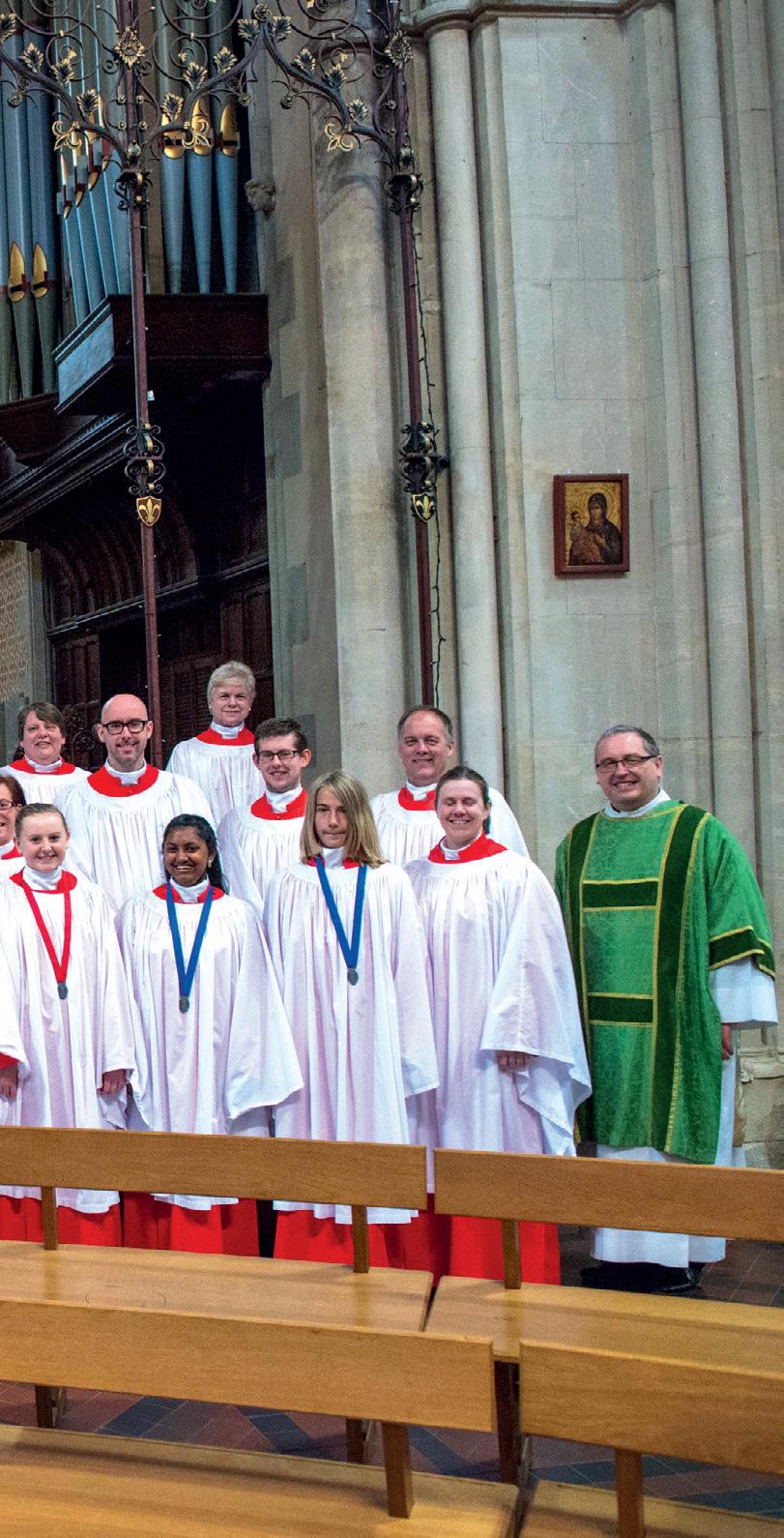
There is still much to achieve. I would eventually like to expand the number of sung services, develop a proper outreach and recruiting strategy with local schools, expand our links more with further educational establishments, take the choir abroad on tour, and – now becoming quite urgent – replace the cathedral organ. There are plans afoot too to improve our accommodation. This is much needed, as we have but one small hall, so choir practice has to take place in the cathedral all year round.
It was hugely heart-warming to celebrate my 20-year tenure on Sunday 3rd July this year, with a Choral Mass in the morning, and a huge Choral Evensong which was attended by many alumni of the choir, some of whom came from all over the country, and even from Barcelona and the USA! There were so many kind words, generous gifts and a lovely party!
I love my ministry here in Glasgow, and the years have just flown by! I count myself very fortunate to work in such a vibrant church in such a lively city, and I hope I have managed to help put St Mary’s Cathedral, Glasgow on the musical map.
And, as long as there’s so much to do, here’s to many more years!
Sir, From time to time concern is expressed at the difficulty of maintaining full weekday choral services in our cathedrals, and it is only too true that this great tradition has been sadly mutilated, chiefly as a result of two world wars. The degree to which this has taken place varies from cathedral to cathedral and depends on local conditions. Thus while at some cathedrals Matins is still sung on certain weekdays, at others it has been abandoned. Even the number of weekday Choral Evensongs has been reduced in several cathedrals, and in at least two has altogether disappeared.
It seems to us unfitting that the survival and continuity of this glorious musical tradition – which has so often been described as a national heritage – should be governed by purely local conditions, and that any individual cathedral should be allowed to suffer the loss or curtailment of its weekly choral services because those conditions happen to be unfavourable. Some measure of coordination would seem to be desirable, and to this end we suggest that all who love and value this heritage, whether clergy or lay, professional musicians or amateur, should unite to form a new society, to be known as ‘The Friends of Cathedral Music’.
The main objects of such a society would be to widen general interest in the subject; to serve as a coordinating link between the individual choral foundations, thus strengthening the tradition as a whole and helping to prevent the further curtailment of choral services in the future; and to consider the possibility of extending the tradition to those new cathedrals which are still without adequate choral foundations.
Within six months of the above letter to The Times being published, a meeting was held at St Bride’s Fleet Street on 2 June 1956 to consider what could be done about the dire situation that had been described.
By then, it had become clear that it was not just about the number of weekday choral services being reduced – there were difficulties in recruitment and retention of choristers and lay clerks, the musical standard of many choirs was low, and there were pressures to increase congregational singing at the expense of choral settings at Matins and Evensong.

Michael Cooke, a founder member of FCM, was at the St Bride’s meeting:
“In 1955 I was a tenor in a choir of boys and men in Leicester, singing cathedral-type services every Sunday, both morning and evening. I enjoyed my role in that choir and had no idea that the cathedral music tradition was under threat until I read the letter from Ronald Sibthorp and others expressing their concern. I was one of some 240 who replied, and one of the 40 who subsequently attended the meeting at St Bride’s.
“I do not remember too much about the discussion, except that it was decided to go ahead with the foundation of the proposed new organisation. Mr Ronald Lockwood, headmaster of a boys’ school in Kidderminster, offered his services as secretary and I offered mine as his assistant. Ronald Sibthorp was elected as chairman; Dr Martin Shaw, the wellknown church music composer of, amongst others, Fanfare for Christmas Morning, was elected as president; and the Bishop of Truro was made patron.”
Only a year after the St Bride’s meeting, Martin Shaw died and Herbert Howells became president. By then there were 276 members and FCM’s income totalled £171.


A number of initiatives soon followed. Ronald Sibthorp, as precentor, moved from Truro to Lichfield where he gathered about 15-20 members and held an informal conference –an event that marked the beginning of regular meetings at different cathedrals by which the local Friends were able to offer their support, advice and encouragement; FCM representatives for each diocese were appointed; and each year the AGM was held at a different cathedral. By 1962, so strong had the support and enthusiasm for these various meetings become, that twice-yearly ‘Gatherings’ were initiated (with the AGM being held at one of them) and the charismatic figure of Tony Harvey became FCM’s ‘tour operator’ who planned the kind of action-packed weekends that our members have enjoyed ever since.
Naturally, in these early years any financial help that FCM could give to cathedrals was limited because of its small membership. The first grant, in 1960, was a gift of £10 to Coventry Cathedral to purchase copies of Stanford in C, and £450 was raised to endow a head chorister’s prize at Lincoln, but it wasn’t until 1968 that more significant grants to cathedrals began to be made when £750 (payable over four years) was earmarked to help save the choir school at St Mary’s, Edinburgh.

It was in that same year that FCM took up Sibthorp’s proposed ‘watchdog’ role for the first time, by leading the public outcry that followed the BBC’s announcement of its intention to discontinue regular Wednesday afternoon live broadcasts of Choral Evensong. In the face of such strong opposition the BBC relented and FCM gained widespread recognition as a national hero.
Three years later, Ronald Sibthorp was succeeded as chairman by Christopher Dearnley, the organist at St Paul’s Cathedral. Over the following ten years, more cathedrals began to receive grants, and membership grew to about 1200 by the time of FCM’s silver jubilee in 1981, which was celebrated at St Paul’s Cathedral with a public concert given by the choirs of St Paul’s, Southwark and Guildford Cathedrals, with Christopher Dearnley playing the organ.
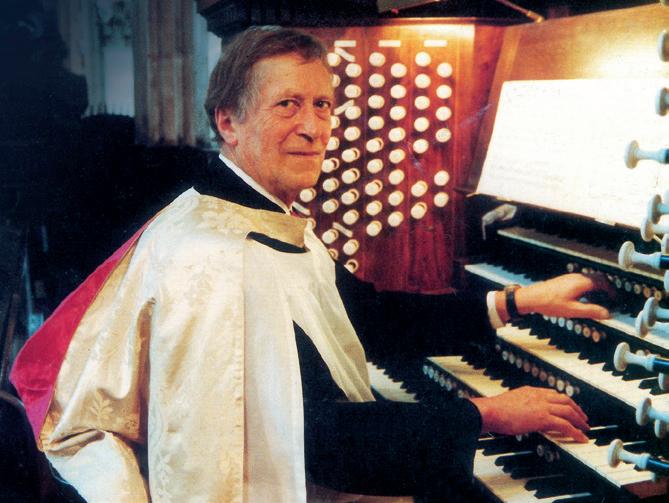
from 1981 to 1996
As FCM continued to grow, it became clear that its administration and organisation needed radical re-appraisal. That was the first of three major tasks facing FCM in 1990, when Alan Thurlow took over as chairman. Luckily, the music department at Chichester Cathedral had just taken delivery of its first computer. With the approval of the chapter, an FCM database was set up and all the membership details and subscription information were co-ordinated. Three years later, Alan Parish was appointed to continue that work, and so good was his system that it still serves us well today.
The second task was to end the practice of paying grants in annual instalments. FCM funds had grown significantly and it was clear that it would be far more helpful for the recipients if grants could be paid in full at the outset. It took six years to pay off the backlog of instalments and to implement this.
The third challenge was to replace the Annual Report with a good quality magazine. Andrew Palmer expressed an interest in this venture, and in 1993 Cathedral Music was born, with Andrew as its editor. Thanks to his vision and journalistic flair, it rapidly became established as our widely respected flagship publication.
In 1992, FCM’s treasurer, Brian Lamble, took on responsibility for another much valued publication, Places where they sing (a comprehensive listing of cathedral choral services, originally founded in 1986 in association with the British Travel Authority). Renamed Singing in Cathedrals, Brian became its first editor, Roger Tucker succeeding him until publication ceased in 2013. By then, the relevant information could be readily accessed through FCM’s website, which had been created by Alan Parish and Ian Wride.
By 2002 the organisation had grown to the point where it needed a chairman who was not in a full-time job as a cathedral organist and who would have more time to devote to day-to-day management and development. Peter Toyne was persuaded to take over the baton, and his first decision was that FCM should make a concerted effort to expand its membership further. Philip Emerson took on the role

of Recruitment and Marketing Manager and conducted a membership survey which led not only to the development of a full-blown recruitment strategy with tough growth targets for a five-year period, but also, thanks to the initiative of one of our members, Trevor Godfrey, the start of a new publication, Cathedral Voice, published twice a year.
By the time of our golden jubilee in 2006, FCM membership had reached the 3000 mark. The number of National Gatherings, under the enthusiastic management of Peter Smith (who retires in 2016 to be replaced by Rosemary Downey), had increased to three a year, and an increasingly large number of local Gatherings were being organised by our Diocesan Representatives. The highest-ever number of grants, reaching £150,000, was made; and the total amount distributed since our foundation reached £1.5million.
Throughout the last decade, recruitment has remained a priority. Our age profile is such that great efforts are needed just to maintain, let alone increase our membership, and that is why we launched our ‘Abraham initiative’ four years ago, with Michael Wiles’s memorable rallying call ringing in our ears, ‘Go forth and multiply!’
Thanks to the dedication of our Diocesan Representatives, and encouraged by their co-ordinators, Terry Duffy and Michael Wiles, and Rosemary Downey (the Recruitment Manager), FCM now has almost 4000 individual members and 94 corporate members, and a global presence with representatives in Australia, Canada, the USA, and the Netherlands – where last year we had our first National Gathering on the continent.
An essential part of our inherited mission is ‘to educate the public’ about cathedral music, and our two wellestablished publications are key elements in that. We have also been active in harnessing electronic and social media to proclaim our message. The website is currently being re-vamped, and – thanks to Rosemary Downey – FCM is now also attracting strong public interest on Facebook.

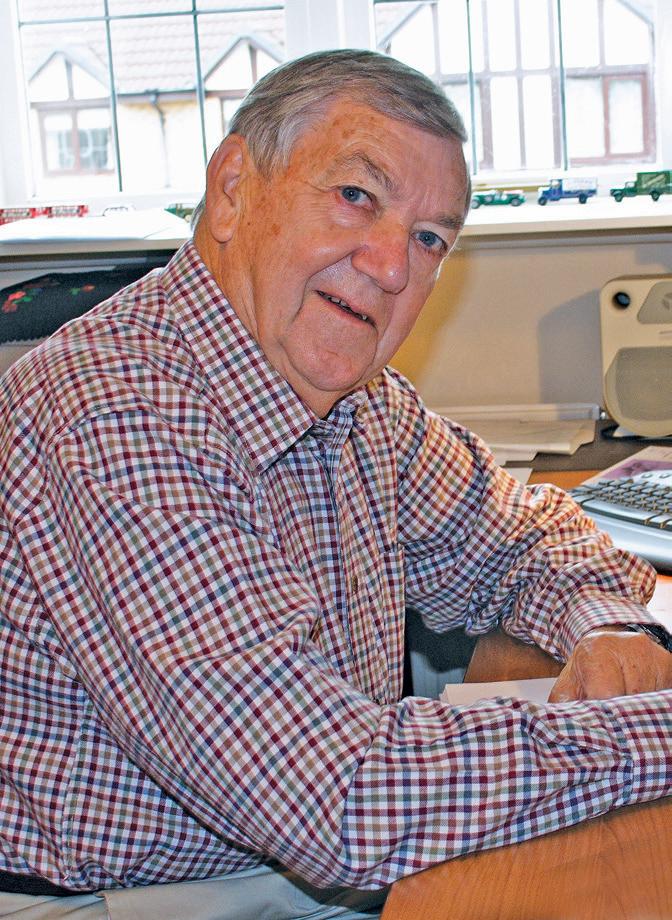
In order to spread FCM’s message further, over the last four years we have been sponsoring public concerts such as the one in June at St Martin-in-the-Fields, and those given by The Sixteen and the City of London Sinfonia as part of their respective ‘Cathedral Tours’.
We have also been commissioning new anthems, since ‘safeguarding this priceless heritage’ does not mean preserving cathedral music in aspic. The first, in 2008, was by Philip Moore; then there were two in 2011, (one by Judith Bingham, the other by Francis Grier) in the Choirbook for the Queen of which FCM was a major sponsor.

In 2016, there are four new works to mark our Diamond Jubilee; by our Vice President James MacMillan, and by Christopher Gower, June Nixon, and Janet Wheeler, the winner of the Composition Competition we held earlier in the year. A full set of these works is being presented to every cathedral and corporate member choir as a legacy of this significant milestone in our development.
None of this would have been possible had FCM’s financial situation not been as healthy as it is now, thanks to the increased subscriptions of FCM members, the number of legacies we have received and the careful management of our financial affairs by our Treasurer.
At FCM’s London Gathering last year, the Dean of Westminster referred to this being ‘a golden age of cathedral music’. Musical standards have rarely, if ever, been higher, new music is being written regularly, cathedrals are pioneering exciting and imaginative outreach programmes, and choral services, especially Choral Evensong, have been attracting increasingly larger congregations.
There is, then, much to celebrate in this ‘Golden Age’. Cathedral music is no longer ‘in crisis’ – far from it – but it is most definitely at risk – and potentially under threat as an endangered species.
‘The future of cathedral choirs hangs in the balance’ is how The Times summed it up recently (in a headline redolent of

Even so, FCM’s ability to match the dramatically increasing number and scale of applications for grants that we now receive is severely limited. Last year alone they amounted to £1.5 million – which is roughly five times greater than the amount that could be made available. That is why, in April this year, at a spectacular concert in St Paul’s Cathedral, FCM launched their Diamond Fund for Choristers, run by a small team led by Maurice Kenwrick-Piercy, whose idea it was ‘to do something positive’ about the pressing need for more choristerships. It is nothing if not ambitious with its target of raising £10m by 2020! There can surely be little doubt that FCM is now THE Cathedral Music Trust.
FCM’s founder’s letter to the same newspaper in 1955) when they published a letter about our DFC initiative.
The challenges FCM faces in increasing its membership and securing more funding remain every bit as severe as those that have characterised its development thus far. So too are the opportunities for extending public awareness of what FCM does by harnessing the full potential of the electronic media, social networks and relationships with all other related organisations, such as the Cathedral Organists’ Association, the Choir Schools’ Association, and those striving to encourage musical education in our schools. But, given our track record, there is every reason to believe that FCM will ‘keep on striving to the best’, build further on its sound foundations, and have good cause to celebrate its latest achievements when we gather in 2026 to celebrate its Platinum Jubilee.
CM 2/15 carried an article about how leaving 10% of your estate to charity triggered favourable tax treatment of the estate without reducing significantly the benefits that your heirs receive.
We are delighted to say that a number of FCM members have now contacted us and decided to make provision for FCM in their wills. This is marvellous news. The more who remember FCM, or its Diamond Fund for Choristers, in their wills, the greater our prospects of safeguarding this priceless heritage will be, at a time when costs continue to rise inexorably, putting cathedral choirs at ever greater risk. FCM is deeply grateful for any legacy, however small. Will you join those who have taken this generous step and help us in this vital work?
If you would like to discuss a bequest to FCM in confidence, please contact our Future Resources team at legacy@fcm.org.uk and they can talk you through the issues. They also have a short and easy to understand note on the subject.
We hope soon to be able to announce the addition of a new member of the team who will deal with legacy issues.




Anglican church music is taking on a new lease of life in Germany! Evangelical Protestant churches in southwest Germany organise occasional Choral Evensongs, with singers from a wide area meeting up to rehearse on a Friday evening and Saturday afternoon to sing a church service based on Anglican Evensong. One recent event in the small country town of Wiesloch near Heidelberg, which I attended as the only Brit in a 50-strong German choir, showed that church music by S S Wesley, Stanford, William Harris and George Dyson is becoming quite popular. Initiated by the Director of Music, Dr Carsten Tromp, an enthusiastic anglophile music professor at Heidelberg University, the singers are put through their paces for three hours on Friday, and another two hours on the Saturday, in order to learn new words and music. On the Saturday at 6 pm we sang Evensong, complete with anthems, hymns and a Nunc Dimittis, at the Evangelische Stadtkirche, to a congregation of some 200 parishioners and visitors, who all participated attentively. The service included Versicles & Responses in German, specially created and composed by Dr Tromp (a local Sir David Willcocks).
The service, which lasted less than 40 minutes, was not a full English Evensong. The psalm was said in German, not sung in English. There was no Magnificat, but the unison Nunc Dimittis, Dyson in D (transposed from the original in C), was well suited to the ad hoc choir. There were two anthems: Lead me, Lord by S S Wesley was beautifully sung, and I realised it was nearly 70 years since I had first sung this (as a treble in Lichfield Cathedral under Ambrose P. Porter)! The second anthem, Come down, O Love divine, was by William Harris, who taught my father the organ at New College Oxford in the
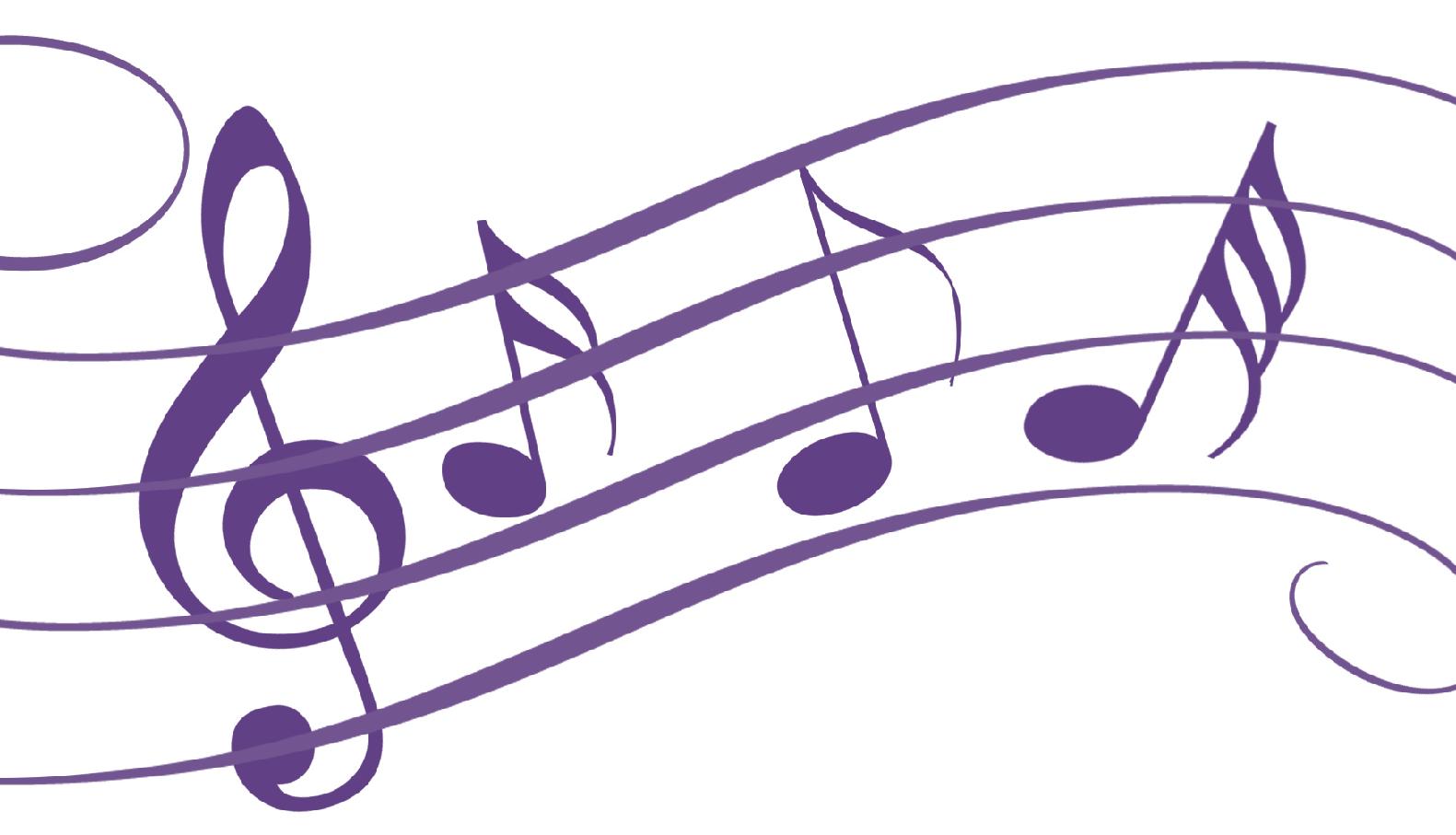
mid 1920s). Wouldn’t Harris have been pleased that one of his compositions was being so beautifully sung in a German church in 2016!


True to tradition, (or even improving on it), there were three organ voluntaries, all by English composers, Prelude in E flat by Smart (Henry Thomas Smart 1813-79 – I would have loved to have sung one of his psalm chants!), then, getting modern, Simon Preston’s Alleluyas, sandwiched between the two lessons in German (described as the Epistle and the Gospel). The third voluntary at the conclusion of the service was a fine Festival Finale by Cuthbert Harris (1859-1924).


Dr Tromp told me that English church music is in some ways easier to perform than that of the great German composers, and of course using English gives few problems to the present German generation, who grew up learning English as a second language. He himself developed a strong liking for English church music during visits to the UK, where he particularly appreciated the choirs of St Paul’s Cathedral, Westminster Cathedral, and Selwyn College Cambridge. He had found out that St Paul’s Cathedral organ gets tuned every two weeks, costing more per year than his annual salary as a German music director!
Hugh Hudson was a chorister at Lichfield (1947-51) and has sung in choirs throughout his adult life. He moved to Germany to be near family in 2015.


Bernard Rose, whose centenary falls this year, was to become a legend in his own right, not least thanks to his world-famous ‘Rose Responses’. The highlight of his career was 24 brilliant years at Magdalen College Oxford, where he emerged as one of the finest choir trainers of a generation that included George Guest and David Willcocks at St John’s and King’s Colleges in Cambridge.
What was Magdalen in the Rose years like? Harry Christophers, conductor of The Sixteen, was a choral scholar (‘academical clerk’ – Rose had rapidly disposed of the former lay clerks) and knew Rose intimately:
“Singing Evensong under Bernard was utterly liberating. I revered him; I loved my years at Magdalen; it was such a privilege to sing under him. His handling of the choir was superb. To some he might initially seem a bit scary; certainly he was immensely demanding, an incredible taskmaster; idiosyncratic, domineering: a real maverick. But the rewards were massive.
“They were wonderful days. I had sung a bit of Tallis as a chorister at Canterbury, but I had next to no real experience of Early Music. At Magdalen we sang lots of 16th century services and anthems – Sheppard, Morley, Weelkes, Tomkins, but lots more – and it was entirely Bernard who gave me a deep love of that repertoire. He had a gift for transmitting his love of Renaissance music to us without being over-academical.
“What he achieved with his choral scholars, many of them not reading music, was astounding. Bernard famously paid special attention to the words – using the epiglottis so as to clarify vowels or diphthongs, for instance. Satisfying him in the psalms was hard; but his wry smile if you got them right made it all worth it.
“What’s sometimes forgotten is that he was a superlative conductor. I remember him telling me in my third year, when it was my job to relay the beat, ‘You’ve got to have a click to your beat. That’s crucial.’ When we did joint concerts with others, their choir members used to say what a fantastic conductor he was.
“Bernard was such an amazing character, a one-off; the reverse of politically correct: you’d walk into his teaching room and there would be two ashtrays on either side of the mini grand
piano, ash spilling over; the whiff of Benson & Hedges hit you as soon as you went in. If you were lucky enough to get the midday slot, then out would come the cut-glass tumblers and the gin, or the sherry.
“Molly and Bernard were glorious hosts: the choir men would get asked out to their home, Appleton Manor, and would enjoy really wonderful hospitality.”
Bernard William George Rose was born on 9 May 1916, the second of three children; his father died when he was just three. His mother moved to be nearer relatives, and remarried. Her new husband was a lay vicar at Salisbury Cathedral who encouraged her to put Bernard, aged nine, and his younger brother, Ronald, in for a chorister trial. From 1925 he joined Salisbury Cathedral Choir School.
Such was his voice and his musicianship that he was the cathedral’s lead treble soloist for several years, and was selected as a reserve for one of the era’s most famous recordings, Hear My Prayer, sung by Master Ernest Lough of the Temple Church. Bernard studied organ under Sir Walter Alcock, and after his time as head chorister, in 1932, aged 15, he became Alcock’s valued assistant. Sir Walter’s hobby was building large gauge model railways, and the choristers enjoyed rides on the model railway in his garden.
Bernard went to London in 1933 with an organ exhibition to the Royal College of Music, first commuting and later cycling from digs nearby. He then won an organ scholarship to St Catharine’s Cambridge – beating the future Prime Minister, Edward Heath (who won one instead to Balliol Oxford).
He was awarded the ‘John Stewart of Rannoch Scholarship in Sacred Music’ and besides a county award received generous support from an unnamed well-wisher (thought to be one of his Cambridge mentors, Patrick ‘Paddy’ Hadley, of Caius; another main influence was Hubert Middleton of Trinity). Not only was Bernard appointed conductor of CUMS (Cambridge
University Music Society), presumably on Boris Ord’s recommendation, he was befriended by Vaughan Williams and by Sir Adrian Boult, who invited students to his home in Surrey to study scores before listening to the evening’s Prom.

His closest friend from the RCM, Douglas Guest, was at Cambridge at the same time, as organ scholar of King’s. Douglas was later organist of Salisbury, where Bernard’s three sons were all choristers, and of Westminster Abbey; the pair remained lifelong friends. Bernard died just three days after Guest, on 21 November 1996.
His Cambridge musical exploits spanned classical to jazz (he was a fan of piano legend Fats Waller), and performing with the Cambridge Footlights. He also played the French horn to a high standard, often accompanied by Guest.
appointed organist and tutor at The Queen’s College Oxford (declining a job at Westminster School). This also involved being conductor of the Eglesfield Choral Society –more invaluable experience. In December 1939, with army call-up impending, he married Molly at All Saints’, Hove.
Bernard’s war service was notable. As a commissioned officer he joined the 4th County of London Yeomanry (‘The Sharpshooters’), and fought as a tank commander in support of Montgomery’s North Africa (El Alamein) campaign, taking part in the liberation of Tunis. Italy followed; then promotion to Captain, and later regimental adjutant. D-Day was perilous – his was one of the first tanks to land at Arromanches – and a week later they were ambushed by superior German forces and he was taken prisoner.
Initially posted as ‘believed killed’, Bernard spent two months in uncomfortable transfer to a German prison camp, Oflag 79, near Brunswick. A lot of his time was spent arranging music, and fixing up concerts for the troops! He also learned to play mah-jong. He and his fellow prisoners were finally released by the Americans in April 1945. After a month’s leave with Molly, he returned to Queen’s College for the new term.
It was at Cambridge that he met and fell for Molly Marshall, whose family owned a celebrated aircraft company near that city. She herself saw service as an air pilot in the Air Transport Auxiliary during the war.
He passed his BA in 1938 and his Mus.B. in 1939, and encouraged by the influential Dr Reginald Jacques, was
Evensong at Queen’s was sung just two evenings a week and on Sundays during the university term, but Bernard nonetheless created a very reputable choir. His star pupils included composer and academic Kenneth Leighton. Eglesfield Choral Society, based at the college, rose to fresh heights under him. He became a Fellow of Queen’s in 1949 and University Lecturer in 1955, achieving his DMus by examination that same year and becoming ‘Dr Rose’.
Home now was a cottage in the Oxfordshire village of Bampton, where Bernard captained the village cricket team and was an aficionado of a local pub, the Elephant and Castle. He also became an avid photographer – insisting on the utmost precision, as he did in his music.
The important transfer to Magdalen came in 1957, when he was appointed Fellow, Organist and Informator Choristarum, inheriting a musical tradition dating back to the 1480s.Bernard Rose with the choir of Magdalen 1961
The important transfer to Magdalen came in 1957, when he was appointed Fellow, Organist and Informator Choristarum, inheriting a musical tradition dating back to the 1480s.

Bernard’s first organ scholar at Magdalen was Dudley Moore. He and Bernard had great affection for each other, and Dudley was a good organist and a great improviser; allegedly when Bernard was absent, he would often end up in the practice room with a jam session! Dudley’s talents were a godsend when Bernard suffered a serious car accident in 1958 and was hospitalised for three months. He and the next organ scholar, the first one appointed by Bernard, Christopher Gower (now a Council member of FCM), used to visit Bernard in hospital every week to discuss what music would be sung by the choir in his absence.
In 1963 the family moved to the wondrous medieval Appleton Manor, which Bernard and Molly renovated themselves, including the historic front porch and all the rooms. A selftaught worker in wood, nothing would give Bernard more pleasure than going down to the Manor’s cellar and working with his marvellous foot-operated jigsaw. He was a true craftsman. He also acted as churchwarden of St Laurence Church.
He was an avid gardener, loved doing crossword puzzles with Molly (which often absorbed a whole day); and both latterly took pleasure in playing bridge or bowls (from 1986, when they moved back to Bampton). Bernard was especially proud to have been President and conductor of the City of Oxford Silver Band from 1959 to 1969.
But Bernard Rose’s real, deep-seated passion was to perfect the singing of Evensong in Magdalen College Chapel. This was the focus of the choir’s work, and the crafting of the psalms (he created his own psalter), the shaping of the words, the fashioning of the widest repertoire possible for canticles and anthems, producing the best from his choristers, were all central to his dogged work and self-punishing schedule.
Peter Phillips, before founding his world-famous Tallis Scholars, studied as an undergraduate with Bernard. What impression did the Magdalen choir make on him?
“Magdalen was absolutely my favourite chapel for Evensong. It was partly the building itself, which I found a more intense place to hear music in than the others, and partly the choir, which under Bernard was then going through a particularly good period, and performing a very interesting, wide-ranging repertoire.

But Bernard Rose’s real, deep-seated passion was to perfect the singing of Evensong in Magdalen College Chapel.Christopher Gower Peter Phillips Photo: Clive Barda
“I really liked the sound he produced, it was gentle and wellbalanced; and I heard a wealth of Renaissance composers, which was a huge inspiration to me, and a unique range of music from other periods.
“There was a definite magic to the sound, which sprang from the combination of voices, the range of music and the really special acoustic of the chapel.
“I rated Bernard tremendously highly, despite being slightly daunted by him. I had him for harmony and counterpoint classes, and very much enjoyed them. He was quite firm, even severe at times. But we got on OK.

“On one occasion he edited and published a delightful motet which he ‘discovered’ and attributed to William Hayes, erstwhile Professor of Music at Oxford. The chapel choir previewed it one Evensong, and I immediately recognised it for a motet by Byrd (possibly Emendemus in melius, though I’d need to check). So I approached Bernard with some trepidation, and pointed out his error. He was very embarrassed indeed –and remained severe!”
Bernard Rose will always be remembered as a tough, gritty, often sarcastic but essentially supportive personality, an
outstanding choir director, and a major influence on groups like The Sixteen and Ex Cathedra. More than that, he was a significant Church Music composer, with some 50 liturgical works and anthems (including the famous Responses, the exquisite Feast Song for St Cecilia, and many other superlative works like Praise Ye the Lord, as well as chants and organ works such as Chimes and Passacaglia. A list of these can be obtained from his son Gregory, gr@gregoryrose.org
Roderic Dunnett has written for a range of publications, primarily on choral music, contemporary music and opera. He is grateful to Graham Rose for several of the details included in the above article. He was an Academical Clerk at Magdalen in the 1960s, singing countertenor. His experience of Evensong in Magdalen was, he says, ‘quite extraordinary: mainly because the chapel has a unique, quite reverberant acoustic, which Rose utilised often to brilliant effect in music of all periods, but perhaps above all the Tudor and English Renaissance: the entire Tudor-Stuart repertoire – Byrd, Gibbons, Morley, right through to Pelham Humfrey, Purcell and Maurice Greene – was constantly polished and unforgettably performed.”
Postage and packing


£1.75 for 1 item
£3.25 for 2 items
£4.50 for 3+ items
Please send orders and enquiries by email to judychisman@hotmail.com or by post to Judy Chisman, 29 Magdalen Street, Thetford, IP24 2BP Cheques should be made payable to Friends of Cathedral Music

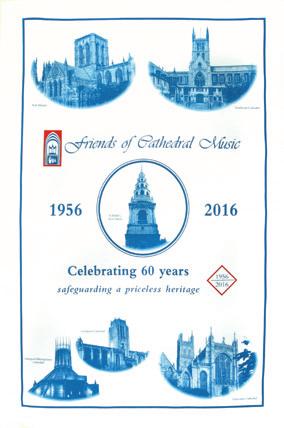



If, during your travels in London SE1, you walk along St George’s Road from the Elephant and Castle in the direction of Westminster Bridge, you will be aware of a number of significant buildings. The most famous and massive of these is the Imperial War Museum with its prominent dome. Across the road from the IWM (as it is now known) is Notre Dame School, and beyond it a rather oddlooking church, whose tower stops halfway up and whose bright red noticeboard tells you that this is the Metropolitan Cathedral of St George. St George’s is the Mother Church of the Southwark archdiocese and the seat of the Archbishop of Southwark, the Most Reverend Peter Smith.
Passing through the main entrance into the nave, you will immediately be struck by the spaciousness and grandeur of the building, despite the incomplete condition of its exterior. The nave is long, comprising six bays, and one’s eyes are naturally drawn to the distant altar in the spacious sanctuary. The choir stalls are in the relatively narrow space beyond the Archbishop’s cathedra, dominated by the east window, a large-scale crucifixion scene by Harry Clarke.
The original cathedral was built in the 1840s by the Gothic revivalist Augustus Welby Pugin, and opened in 1848, following a campaign by Father Thomas Doyle to raise funds for a large church for the huge Catholic population of south London. The Catholic community then consisted largely of Irish people living in conditions of extreme poverty. Only following the Catholic Relief Acts in the late 18th century did it become possible for Catholics to have their own places of worship. The Catholic Emancipation Act 1829 restored most of the civil rights of Catholics and it became possible for Fr Doyle to purchase a site for the new cathedral, on the same plot of land which had seen the start of the anti-Catholic Gordon Riots in 1780.
The Pugin building served for nearly a century, and the architect himself was bridegroom at the first wedding to take place there – his third marriage. The cathedral even then lacked the tower and spire shown in a contemporary drawing, and tragically, within a few years, Pugin’s health deteriorated to the extent that he was confined to Bethlem Hospital (or Bedlam), across the road from St George’s in the building which is now the IWM. In April 1941 an incendiary bomb gutted most of the cathedral building but left Clergy House largely intact. The cathedral was rebuilt in 1953-8 by Romilly Craze, incorporating Pugin’s surviving chantry chapels, but, as with the original, money ran out before the tower and spire could be completed.
From the opening of the cathedral in 1848 a choir has been in existence, though little is known about its membership or repertoire. It is possible that the first organist, or one of the first, was Meyer Lutz, who emigrated from Bavaria in 1828. There is a hand-written monograph (Pipes & People 1938) by Harold E. Francis, who became organist and choirmaster of St George’s in 1906. He inherited a choir of ‘40 men & boys’ (though it is not clear how many of each) together with a
small library of music. For part of his tenure there appear to have been two organs, one of them in the west gallery. Other organists prior to 2000 included Douglas Mews, Anthony Halliday and Sean McCarthy.
The musical tradition which currently thrives at St George’s dates from 2000, when Nick Gale was appointed director of music. Nick built up a choral tradition based on a group of professional lay clerks, and boys from various Catholic schools, including the London Oratory School. He also made provision for choral scholars, boys whose voices were changing and who would learn to sing either alto, tenor or bass alongside the lay clerks. With these substantial choral forces Nick established Solemn Mass as a fully choral service, with Gregorian chant and polyphony at its heart. All Mass settings and motets were and are in Latin and by a wide range of composers such as Byrd, Palestrina, Hassler, Haydn, Rubbra, Ives, Peeters, Vierne, Langlais, Duruflé, Britten, Judith Bingham and Nicholas O’Neill, the latter being my predecessor as organist. It was this choir of boys and lay clerks which I had the pleasure to accompany when I joined the music staff in 2006. I also had responsibility for the newly formed girls’ choir. As with the boys, this choir was recruited from a wide variety of London


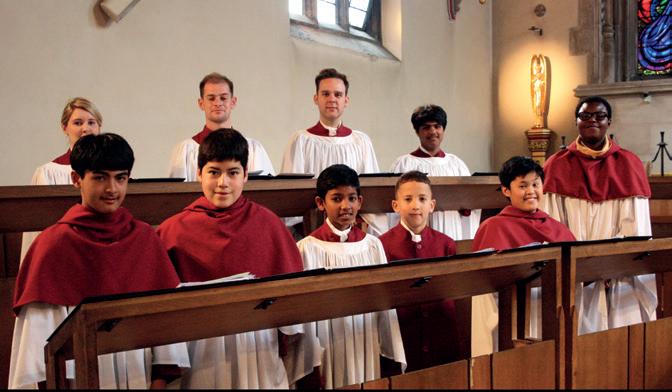
schools, especially from St George’s RC Primary School and Notre Dame School. At that time the girls sang exclusively at the Sunday Family Mass, developing their own distinct repertoire, which ranges from the 12th-century Hildegard von Bingen to Peter Tranchell and Timothy Craig Harrison of the 20th and 21st centuries.
By the time I took over the position of Director of Music in 2014, the boys and girls had developed to the point where they could exchange roles and enjoy equal status within the cathedral’s musical life. A further innovation was to combine all the choral forces for special occasions such as the Advent and Christmas carol services, the annual Diocesan Mass in celebration of marriage, and the Southwark Area RSCM awards service, which is held in alternate years at St George’s and at Southwark Anglican Cathedral. There had previously been a perception of a first and second team, so it was my decision to take the responsibility of training and directing all the choirs and thus firmly establish this equality. In directing the choirs I am supported by the assistant director of music and organist, Frederick Stocken, whose own compositions also feature in our music lists.
A choristers’ open day takes place each May, when girls and boys are invited from Catholic schools across the London area to audition for the choirs. In addition, we receive enquiries throughout the year from parents whose sons and daughters have expressed a wish to sing with us. So recruitment remains healthy, with around 30 choristers in total, evenly divided between boys and girls. As well as the pre-service rehearsals, the two chorister groups have a weekly evening rehearsal of an hour and a half, during which repertoire is taught and revised, covering as much advance material as possible. Vocal trainers give specialist support at these rehearsals, so there is some pressure to fit everything in within the time. Many choristers travel in from schools in north London and from as far south as Bexley, Wimbledon and Dulwich, usually by public transport, so on Christmas morning some choristers have a very long walk, having already been up for much of the night singing Midnight Mass!
In December 2015 the latest of our live broadcasts took place: Christmas Midnight Mass, which was televised on BBC1, and for the first time the combined choirs sang the whole service together. The music included William Lloyd Webber’s Missa Princeps Pacis and John Tavener’s God is with us as the Communion motet. We are looking forward also to singing on BBC Radio 4’s Sunday Worship within the coming year.
In April 2016 we were delighted to be represented among the choristers at the FCM Diamond Jubilee Concert in St Paul’s Cathedral. Having recently become corporate members of the FCM, we hope to be involved in more events in the future.
In addition to the two choirs there is an informal music group which provides the music at Sunday evening Mass, and we have recently started a small voluntary choir, the St George’s Singers, which occasionally sings Sunday morning Masses in place of the regular choirs during holidays. This combines members of the congregation and other accomplished singers who wish to join us.
Visiting choral groups regularly come to St George’s, sometimes to sing Sunday Masses when our choirs are on
holiday, and sometimes less formally during their tours to London for the pleasure of singing in our fine acoustic. Established choirs such as the Holst Singers and Libera often present their concerts here, and organ recitals take place on occasional Saturday mornings, including an annual performance each December of Messiaen’s La Nativité du Seigneur.
Opportunities to take the cathedral choirs singing around the diocese and elsewhere are regularly being sought. The girls have sung Evensong at Southwark Anglican Cathedral and we hope to expand our extra-mural activities as a contribution to the cathedral’s outreach. Otherwise we can too easily find ourselves confined to the cathedral building itself, the exceptions so far being on Remembrance Sunday when we sing at the Act of Remembrance outside, pitting our voices against the traffic in St George’s Road, and on our choristers’ annual visit to the Palace Superbowl at the Elephant and Castle!
Future plans include a chorister training day with the soprano Ruth Holton, using the adjacent Amigo Hall as an attractive change from the below-stairs Song Room. During the coming year we hope to make a CD of some of our repertoire and to replace our present choir stalls with new, more flexible seats and music desks. We anticipate that these will improve sightlines and focus, as well as facilitating the staging of concerts in the future. Under the present dean, Fr Richard Hearn, there has been a move towards regular weekday Vespers with some musical input, and we hope that this will in time present a further opportunity for the choirs’ contribution to cathedral worship.
We are of course conscious that St George’s Cathedral deserves to be better known and enjoyed by the general public. So when you are next in London, come and visit our neighbourhood, take in the excellent exhibitions at the IWM and its spacious grounds and gardens, not to mention the numerous local places of refreshment. Then, come and visit St George’s Cathedral. You may find peace and quiet there, possibly a Mass taking place, the fine Compton organ being played; or you may simply delight in the building itself and its stained-glass windows, one of which commemorates the visit to St George’s by Pope John-Paul II in 1982. If you are really lucky, you may hear choirs singing. You will be very welcome.
Norman Harper was organ scholar at Gonville and Caius College Cambridge, where he studied organ with Peter Le Huray and Gillian Weir and composition with Peter Tranchell. After a career as an Anglican church organist and as director of music in schools in the north-west and in London, he took over the direction of the girls’ choir at St George’s Cathedral. After serving additionally as cathedral organist for three years he was appointed director of music in 2014. Norman continues to be active as a solo organist and he is musical director of the Alleyn Singers. His wife Marilyn is organist at Christ’s Chapel in Dulwich, and their younger son Tim is assistant director of music at Ripon Cathedral. The wider family circle also includes professional singers in cathedral and church choirs around the UK.

With the death of Richard Popplewell, the organ world has lost an unassuming but central figure.

A chorister under Boris Ord at King’s College Cambridge, he received his first organ lessons from the organ scholar of the time, David Willcocks. He became a pupil of Sir John Dykes Bower at the RCM, and returned to King’s as organ scholar himself. He held three successive church positions: Assistant Organist of St Paul’s Cathedral; Director of Music at St Michael’s Cornhill; and finally Organist, Choirmaster & Composer to Her Majesty’s Chapels Royal at St James’s Palace. He was for almost 40 years a professor at the RCM, and for many years he accompanied the Bach Choir.
These facts hide a more complex story. Born in Halifax in 1935, he was encouraged by Shackleton Pollard, his choirmaster at Halifax parish church, to audition for King’s. His new home, King’s College School, seems in those days to have been an uncompromising, Dickensian sort of place, but Richard survived its rigours and moved on to Clifton College, where both Boris Ord and David Willcocks had
been pupils. Here he found two fine organs (a Father Willis and a Harrison), and his musical training continued under the guidance of Dr Douglas Fox, a brilliant organist whose right arm had been amputated during World War I. Fox still conducted and played the organ and piano, and indeed had performed Ravel’s Piano Concerto for the left hand under both Sir Adrian Boult and Sir Malcolm Sargent. Having himself overcome great adversity, he expected his pupils to be equally resilient.
His strictly-learned musical standards, combined with a gentleness and sensitivity towards his pupils, must partly explain what made him such a successful teacher.
When Richard returned to King’s as organ scholar, he found Boris Ord terminally ill, though still trying to direct the music. At that time there was no overlapping of organ scholars, so the new young undergraduate had to take on much of the running of the choir, in addition to playing the organ and finding time for academic work. Unfortunately it proved too much; he had a nervous breakdown and left Cambridge. Bad health dogged him for the rest of his life.

His strictly-learned musical standards, combined with a gentleness and sensitivity towards his pupils, must partly explain what made him such a successful teacher. He taught a
long line of leading organists: Peter Wright, David Briggs, Jane Watts, Timothy Byram-Wigfield, Philip Berg, Stephen Disley, Andrew Nethsingha (another Old Cliftonian), Paul Spicer, Adrian Partington, Jeremy Suter, Richard Coulson, George Bevan, Alan Horsey, Robert Gower, and many more. I am myself particularly grateful for his discerning and supportive guidance.
At Richard’s memorial service in October this year, the final voluntary was an improvised musical tribute by David Briggs, who remembers his lessons at the RCM: “My main memories of Richard as an improvisation teacher were as a great
encourager. He once came out with: “I think you could be the next Marcel Dupré, really.” (He said ‘really’ at the end of almost every sentence.) He made me believe in myself, and that surely has to be the mark of any great teacher. I remember him also saying, “It’s better when there is some counterpoint, really … don’t you think?” So much in so few words. I asked him once, “What do the examiners at FRCO usually expect?” In his highly imitable Halifax accent, he responded, “Oh, a load of bloody rubbish, really, and that’s what we normally get!” Richard gave me the impetus to try to do better.”
As David Briggs implies, Richard wasn’t verbally articulate during lessons. I have a memory of myself, as a 17-year-old, taking a piece of Howells to him at St Michael’s, and after I had played a page he grunted, and said: “I’ll play it, really.” His performance told me everything I needed to know about registration, rubato and pacing. Richard’s intuitive musicianship and hardwired intimacy with English cathedral music needed no spoken commentary.


Richard’s improvisations during the services at St Michael’s were greatly admired, and were said to have taken up the stylistic baton at the point at which (his predecessor) Harold Darke’s had left off. Some of his written compositions have been published and recorded, and Priory released a fine recording of his organ concertos, played by Jane Watts, with Sir David Willcocks conducting. There are unpublished choral works in the choir library at St Michael’s; and Paul Derrett has recently discovered more organ pieces which deserve to be heard.
I must thank Richard for his thoughtfulness when I took over from him at St Michael’s. He told me that, when he had succeeded Harold Darke, Darke had found it difficult to keep away from the church at which he had directed the music for fifty years. Richard told me that he would never breathe down my neck, a point which he adhered to. Although we were in regular touch, I managed to persuade him to return to St Michael’s on only two occasions: the funeral of the former rector, and my own wedding.
Throughout his professional life, Richard was supported by his wife Margaret, who looked after him devotedly. Often, when he felt that a pupil needed some fatherly advice, he would say: “What you need is a good woman, really. I couldn’t have done without Margaret.” (Mind you, he may or may not have been aware that a good woman might not necessarily have been the most obvious solution for all his pupils.)
He leaves Margaret and their son James, and a crowd, a host of grateful pupils, former choristers and admirers.
Jonathan Rennert was recently awarded Hon RSCM for his contribution to church music, for maintaining a significant recital series at St Michael’s Cornhill, and for providing a platform to encourage young players and accompanists.
Wednesday 7 December, 19:30
Cathedral
soloists
and
City of
Sinfonia
As a recitalist, Richard played a large repertory, including many of the Reger masterpieces: “I always learn a new piece of Reger each year, really”, he would confide. And his Bach recitals drew sizeable audiences. His Monday lunchtime programmes were imaginative and nuanced, and he paid especial attention to mood- and key-progression. (A default chronological order did not appeal to him.)
Tickets available from www.salisburycathedral.org.uk
He taught a long line of leading organists: Peter Wright, David Briggs, Jane Watts, Timothy ByramWigfield, Philip Berg, Stephen Disley, Andrew Nethsingha (another Old Cliftonian), Paul Spicer, Adrian Partington, Jeremy Suter, Richard Coulson, George Bevan, Alan Horsey, Robert Gower, and many more.Salisbury Choir the London with Fflur Wyn; Robin Blaze; Nicholas Mulroy and Matthew Brook. Directed by David Halls. Salisbury Cathedral Choral Foundation Charity No 1058899
David Willcocks
The Complete Argo Recordings
Decca 478 8918 (£80 from The Shop at King’s, less from Amazon)
Following the death of Sir David Valentine Willcocks in September 2015 (at the age of 95), Decca moved quickly to issue the complete Argo recordings by the choir of King’s College Cambridge. This 29-CD set spans the period from December 1954 to December 1973: 19 years of the most consistently fêted choral singing in post-war Britain. To those of a certain age, the cover art of these LP recordings is iconic. Indeed, the most arresting feature of this new release is that each of the 29 CDs is dressed in the original artwork of its LP counterpart. To those of us not old enough to remember the assassination of John F Kennedy, many of us can instead remember where we were when we purchased our first King’s recording, and how we had saved up to buy it. So, the packaging is first-rate, but how does the product sound?

Dated, inevitably, but only in some aspects. The most aurally recognisable feature of the Willcocks years (195774) was the vowel sounds: ‘megnify’ for ‘magnify’; ‘end’ for ‘and’; ‘hendmaiden’ for ‘handmaiden’. These distinctive vowel shapes haunted the vaults of King’s College chapel in the ’60s and ’70s. Also controversial was Willcocks’s insistence on bright major 3rds, almost Pythagorean in their sharpness compared to just intonation, and even sharp when compared to the equal temperament of the modern piano. But apart from those quirks (and every committed choral conductor has at least one puzzling quirk), Willcocks coaxed an engagingly modern sound from his choir in other ways. The ornate polyphony of the 16th century sits comfortably alongside Baroque and Classical works with orchestra, as well as alongside music whose composers were still alive at the time of recording; not to mention the fluent carol arrangements, many of which were tailor-made for the singers of the day.
The vibrancy of the LP artwork that sheathes each CD is touchingly augmented by the inclusion in the accompanying booklet of 14 photographs (all but one printed in black and white). Three obligatory views of the chapel (one from the west and two from the east) are complemented by two of Sir David in rehearsal with the London Symphony Orchestra and some snaps donated by Roy Goodman. Goodman – now a violinist and musical director himself – was the 12-year-old treble soloist on the 1963 recording of Allegri’s Miserere, a latter-day staple of the Anglican Ash Wednesday liturgy. In the booklet, Goodman writes about that late afternoon in March and describes how he had muddy knees under his long trousers because he had more or less come straight to chapel from the rugby field. Willcocks tried out a few solo voices, and settled on Goodman as most likely to nail the high notes that afternoon. The recording itself was pure theatre: the conductor spirited up a performance out of black and white symbols on the page, which were themselves a liberal interpretation of their Italian
17th-century precursors. DVW’s lasting legacy will remain his ability to transfer the live atmosphere of King’s Chapel to the recordsphere. Of course there existed the facility to edit quarter-inch magnetic tape more or less effectively. But Willcocks believed in ‘performance over perfection’, which is why I respected his work as much as I did.
Willcocks encouraged his singers to work themselves up into a carefully controlled frenzy of music-making, and this enthusiasm transmitted itself to the instrumentalists and vocal soloists who worked with the choir for specific projects. The Philomusica of London, the London Symphony Orchestra, the magnificent English Chamber Orchestra (with Thurston Dart at the harpsichord), and the Academy of St-Martin-inthe-Fields all benefited from working with Willcocks at King’s, and the roll-call of guest singers boasts Helen Watts, Tom Krause, Ian Partridge, Janet Baker, April Cantelo, and Philip Langridge, amongst others.
Clearly much effort went into the preparation of this boxed set in a short space of time, and Decca is to be congratulated for releasing the collection within weeks of David Willcocks’s death. Moreover, Decca is to be applauded not just for rereleasing the 25 Willcocks recordings, but for including the four recordings of King’s College choir under their previous director, Boris Ord. Yet Ord’s name does not appear on the packaging or on the cover of the booklet. Of course, autumn 2015 was all about the passing of Sir David, but Boris Ord’s were the shoes into which the 37-year-old DVW stepped. Ord effectively appointed his successor when he became too ill to run the choir on a daily basis. And these four Ord soundscapes are majestic: a recording of the 1954 Festival of Nine Lessons and Carols; a 1955 Evensong programme; Easter Mattins from 1957; and a captivating recording of the music of Orlando Gibbons from 1955. While the lack of recordings from the first quarter of a century of Boris Ord’s tenure with King’s College choir is regrettable, these four LPs thereby become historical gold dust. Ord was a towering figure of British musical performance, not least because his aesthetic influences weren’t just those of the Anglican church. Ord’s first name was Bernhard, but he drew the nickname ‘Boris’ because of his early infatuation with Mussorgsky’s opera Boris Godunov, whose score Ord would perennially carry around with him. ‘Wallet, keys, cigarettes, Boris Godunov…’ – you can just picture the young Ord leaving his digs of a morning. And this appetite for large-scale, colourful music is perfectly captured in a photograph taken in 1957 at the Three Choirs Festival in Worcester. Flanked by two choristers, who are immersed in their scores of Belshazzar’s Feast, Ord’s whole frame is drawn inexorably and obsessively towards the aural kaleidoscope of William Walton’s dramatic oratorio.
This body of recordings is legendary, but if you need convincing, then sample Howells’s Magnificat ‘Collegium Regale’ recorded in 1967 under David Willcocks with Andrew Davis at the organ (CD 20, track 4) or the Magnificat from Stanford in G recorded in 1955 under Boris Ord with Richard White as treble soloist and Hugh Maclean at the organ (CD 28, track 9). They’re not perfect, but they are performances, and they honour David’s (and Boris’s) memory.
Jeremy Summerlycould survive and even prosper in the 20th century. He is correct in pointing out that a great deal of the pressure for reform of cathedral worship arose out of an unfavourable comparison with what was being offered in parish churches; but that from the 1870s St Paul’s Cathedral provided an example that was widely copied. Unfortunately Dr Thomas perpetuates the myth that it was Stainer who was responsible for absolutely everything from processions and surplices to the establishment of a weekly choral celebration of the Holy Communion. My own researches, which Dr Thomas has been kind enough to cite and acknowledge elsewhere, have proved beyond contradiction that Stainer was but one of a team united in a common purpose. An important but in some respects unfortunate legacy was the fostering of a taste for contemporary foreign choral music, which resulted in the invasion of the cathedral repertoire by Gounod and Spohr.
Dr Thomas then presents a somewhat ill-assorted mass of information relating to developments in liturgical practice in the 20th century at selected cathedrals, though I find his inclusion of Hereford alongside Chichester, Liverpool and St Paul’s a little surprising. I think he devotes too much attention to special services for outside bodies, and to the content of choral festivals, many of them promoted by semi-autonomous Diocesan Choral Unions or (latterly) the School of English Church Music and its successor, the Royal School of Church Music.
 Martin Thomas
Martin Thomas
Routledge (or Amazon)
ISBN 978-1-4724-2630-7 £65
This book is both timely and interesting, but it would have been better had it managed to break free of its origins as the author’s PhD thesis; like all such academic exercises, it seeks to argue a point and to present evidence in support of it. Unfortunately, the author reaches his conclusions as it were before he has even begun; on the very first page he talks of ‘restrictive practices employed by leading church music figures and organisations’, and that ‘cathedral musicians … successfully resisted attempts to introduce new music into repertoires’. His statement that ‘despite the bringing into being of new parish church cathedrals, the musical life of most cathedrals for most of the 19th century was at a low ebb’ is as irrelevant as it is illogical. He resorts all too often to such generalisations, unsupported by documentary evidence.
That said, I would commend his overview of the 19th-century reforms that created the conditions in which cathedral music
What he fails to note is that in one very important respect the example of St Paul’s was not widely followed, i.e. in the addition of a choral Communion to Mattins on Sunday mornings, and even on Saints’ Days falling within the week. The great sequence of Mattins and Solemn Eucharist on Sunday mornings is still faithfully maintained at Chichester, St Paul’s and Westminster Abbey; but even until the late 1960s Durham (and other places) had to be content on most Sundays with ‘Mattins and left-overs’ i.e. a said celebration following sung Mattins. Dr Thomas also leads us astray by asserting that by the 1950s a Parish Communion was becoming the chief Sunday service in cathedrals; in this respect there was no such thing as a typical cathedral.
He notes with no great sympathy or understanding the persistence of the Book of Common Prayer, even as modified in 1928, claiming that it was ‘being used as the justification for retaining archaism in musical style’ and describing the liturgy as ‘a brake on stylistic development’, because composers had to set a vernacular text in old-fashioned English. He chooses to forget that until quite recently Latin settings of the Mass and the canticles were proscribed. He unfairly castigates most cathedral bodies as being too slow, and unwilling to adopt newer forms of service.
When he moves on to the music, he sadly betrays an imperfect knowledge of his subject. He dismisses as little known several well-established composers, but over-praises several quite
unimportant figures – and grants undue attention to the music of Peter Aston. It pays to speak well of the man who supervises your PhD! There are casual mis-spellings such as Moeren and Matthias, and he has invented a Missa Sabriensis by Geoffrey Bush, who actually wrote Missa Salisburiensis. Dr Thomas persists in attempting to enrol Elgar and Vaughan Williams in the ranks of cathedral composers, but he belittles Stanford as old-fashioned and an unwholesome influence. It is at this point that we feel we have stepped back a quarter of a century, with the author’s ritual disparagement of the Victorians, of Parry, Stanford and their pupils, and of any composer not influenced by the Second Viennese School. Such views accord ill with the very great respect now accorded to Stanford and his school. It is amusing that he reproduces lists of Novello publications from the 1950s in an attempt to prove how old-fashioned church music was in comparison with contemporary secular music, when the secular music in those lists was as dated as the sacred.
Sadly, Dr Thomas does not seem to appreciate the constraints under which cathedral choirs have laboured ever since the Victorians’ reforms: a variety of high-quality seasonally appropriate music must be performed by a children’s choir (with lower parts supplied by adults) to a professional standard on very little rehearsal. The choice of music in cathedrals may occasionally appear over-cautious, but it would be unwise to choose contemporary music too hard to be performed well; better to leave that to the BBC Singers. Dr Thomas speaks approvingly of the Norwich Festival of Contemporary Church Music and of the fertile collaboration of Martin Neary at Winchester with Jonathan Harvey, whose evening canticles he mentions with enthusiasm; a musical example might have been apposite. But one cannot perform such music every day, and I am sure that Dr Neary included in his lists a fair proportion of more workaday music.
It is disappointing that Dr Thomas has coloured his views with a curious assertion that a ‘stylistic stasis’ in cathedral music was due to a malign conspiracy of the Church Music Society, the Cathedral Organists’ Association and the Royal School of Church Music. Almost his parting shot is to claim that ‘the RSCM and other church music bodies successfully impeded stylistic development in cathedral music’. Quod erat demonstrandum, so it must be true! The reader might well conclude that this obsession has marred what could have been a very worthwhile and informative book.
Timothy StoreyThe Choirs and Musicians of St Albans Cathedral

Malcolm G. Bury
Rhinegold Publishing ISBN 9781910622179 www.rhinegold.co.uk £12.99
Of the great churches which became the cathedrals of the new dioceses founded in the 19th century, the great Abbey of St Alban was surely the grandest and most historic. The full Benedictine rule had been faithfully observed until the Reformation, and such great musicians as Dunstable and Fayrfax had been in the abbey’s employ. The diocese of St Albans was founded in 1877, but by then neither the condition of its ancient cathedral church nor the quality of the music offered therein could in any sense be regarded as adequate. The last quarter of the 19th century witnessed notable improvements to both building and music.
Throughout the 20th century a succession of distinguished organists and clergy developed and secured the cathedral’s choral tradition, despite a perennial shortage of funds. There is no choir school, nor any formal link with any other school, but the boys continue to sing Evensong on Monday, Tuesday and Thursday and are joined by the men on Saturday and, of course, Sunday. Now there is also a girls’ choir which sings on Wednesdays and Fridays and shares some of the work at other times. Thus are daily choral services now sung, and so is fulfilled the dream of Walter John Lawrance, the newlyfounded cathedral’s first dean.
The cathedral has been served by a succession of highlytalented organists, many of whom soon moved on to greater things. Such names as Meredith Davies, Stephen Darlington and Colin Walsh figure in the story, with even Simon Preston making a brief appearance; and there is the sad case of Peter Burton (1950-7), who died while rescuing a boy from drowning. The greatest of them all is Peter Hurford, who stayed for 20 years and raised the choir’s singing to a level that would stand comparison with the finest in the land. He supervised a major rebuild of the organ, founded the St Albans International Organ Festival and somehow found time to develop a career as a Bach player of international renown. The story is concluded with the appointment of Barry Rose at the end of his unusual and exciting career; he served from 1988 to 1997 and was succeeded by Andrew Lucas, formerly Sub-Organist of St Paul’s Cathedral, who most ably and energetically maintains the high standard of the cathedral’s music.
This was an interesting subject for an historical study, and the author has produced a book of great merit; his inclusion of first-hand recollections from former choristers and lay clerks will surely appeal to anyone who would wish to see ‘behind the scenes’ and discover how this Cathedral Music of which we are such great Friends is actually produced. It is by no means perfect; the A4 landscape format is difficult to handle and fits uneasily onto one’s bookshelves, and some of the print is so microscopic as to be virtually unreadable. The patron saint of musicians is mis-spelt Cecelia, and the author gets in a fearful muddle with Simon Preston, who does all the right things but in the wrong order! Do not let these very minor grumbles put you off buying a book which is both informative and enjoyable; I hope someone will produce something similar for other cathedrals.
Timothy StoreySalisbury Cathedral Choir
Dir: David Halls; Organ: John Challenger
Volume 9, Series 2
Psalms 119-132
PRIORY PRCD 1150 TT 77:37
Salisbury Cathedral Choir under their director David Halls sing Psalms 119-132 in this penultimate volume of Priory Records’ second set of the complete psalms. One of the features of this second set is the use of previously unrecorded chants. This poses a considerable challenge for the musicians, who have to find and learn suitable alternative chants for many of the psalms. David Halls has come up with a good selection, a number having connections with Salisbury Cathedral, including five by David Halls himself. Psalm 119 with its 176 verses takes over 40 minutes and uses 22 different chants. Choristers particularly enjoy verse 99 of this psalm: ‘I have more understanding than my teachers’!
The words come across clearly, the pace being fairly slow and seldom varying – which may be partly due to the sustaining resonance of the cathedral’s acoustics. The choir is ably accompanied by John Challenger, who adds plenty of wonderful colour. However, I wonder whether some verses might have been unaccompanied to provide further variation. Likewise, almost all the psalms are sung in harmony, so the very few verses sung in unison either by the boys or men come as a special treat.
There is much to be admired in this recording with the words being shaped with particular care by David Halls. Neil Collier is also to be congratulated on a fine recording in which we hear the choir and organ with real clarity, whilst being aware of the atmosphere of a large and resonant cathedral.
 Paul Morgan
Paul Morgan

The Choir of Jesus College, Cambridge
Dir: Mark Williams
Organ: Mark Williams & Benjamin Morris
SIGNUM RECORDS SIGCD 446
TT 77:58
Radcliffe God be in my head; Bairstow Save us, O Lord; Sheppard In manus tuas; Richard Rodney Bennett Song at Evening; Byrd Miserere mihi, Domini; Gabriel Jackson Creator of the stars of night; Lennox Berkeley The Lord is my shepherd; Whyte Christe, qui lux es et dies IV; Balfour Gardiner Evening Hymn; Gibbons Behold, thou hast made my days; Holst Evening Watch; Tavener The Lord’s prayer; Harris Bring us, O Lord God; Blitheman In pace; Moore Evening Prayers; Tallis Miserere nostri; Bairstow Blessèd city, heav’nly Salem.
Jesus College maintains two choirs: the Chapel Choir, consisting of boy choristers and adult male singers, and the College Choir, formed in 1982, where the boys are replaced by female undergraduates. Both choirs are heard on this disc, which contains excellent music. The programme is well constructed, often with Renaissance anthems juxtaposed with modern counterparts, providing an effective stylistic contrast. I would not suggest playing the disc particularly late at night as the title perhaps suggests: included are some powerful and loud works!
All choral resources are heard in three of the anthems, The Lord is my Shepherd, Evening Hymn and Blessèd city. The middle section of the Berkeley is particularly well sung despite the dissonant harmony, and the whole piece is performed with great conviction and sensitivity. Richard Rodney Bennett’s Song at Evening is a most attractive piece, performed by the trebles alone with a great sense of poise. Whilst the music is consistently well sung, there are times when the general dynamic level feels rather overwhelming, especially bearing in mind the theme of the disc. The organ accompaniments are excellent, although there are moments when the instrument does not quite complement the vocal blend, notably in Bairstow’s Save us, O Lord. The unaccompanied anthems are extremely well controlled, and the interpretation of Philip Radcliffe’s beautiful God be in my head is a most sensitive account of what is a miniature gem. I just wonder whether it should have been placed at the conclusion of the disc rather than the Bairstow, although I do notice that the iTunes download concludes with In pace by Benjamin Morris.
David ThorneChoir of King’s College, London
Dir: Gareth Wilson
Organ: Alexander May, Graham Thorpe
Byrd Laudibus in sanctis; Matthew Kaner
Duo seraphim; Gareth Wilson Magnificat & Nunc dimittis (Collegium Regale); Silvina
Milstein ushnarasmou – untimely spring; Pott Nigra sum sed formosa; Lhéritier Nigra sum sed formosa; Busiakiewicz Ego sum resurrectio et vita; Rob Keeley Magnificat & Nunc dimittis; Antony Pitts Pie Jesu; Martin An Invocation to the Holy Spirit; Palestrina Quam pulchri sunt gressus tui; Clemens non Papa Ego flos campi; Grier Panis angelicus.
DELPHIAN DCD 34146 TT 79:59
This ‘In Memoriam’ CD is a fitting tribute by the choir of King’s College London to David Trendell, its former Director of Music, who died suddenly in 2014 at the age of 50. David started his musical life as a chorister of Norwich Cathedral, later becoming organ scholar at Exeter College Oxford. His appointment as Organist and Director of Music at King’s College London in 1992 enabled him to combine his academic talent as a musicologist with his expertise as a choral director.

One of David’s joys was Renaissance polyphony, and four exquisite examples of this genre are included in the CD. The other works, most of them being composed in tribute to David by friends, colleagues and pupils, receive their first recordings. The choir is excellently directed by David’s successor, Gareth Wilson, who has recently been appointed Director of Chapel Music at Girton College Cambridge.
The highly acclaimed choir of King’s College London consists of thirty choral scholars. Throughout this CD they sing to a very high standard with much sensitivity, and the two organ scholars, Alexander May and Graham Thorpe, provide splendid accompaniment. Some of the contemporary music is technically very challenging but the choir cope very well with all the difficulties.
The opening performance of Byrd’s Laudibus in sanctis abounds with joy and energy. This contrasts with the other three Renaissance pieces which are beautifully serene. There is something to be admired in all of the contemporary pieces, with some unusual effects to be heard in the most demanding work ushnarasmou (untimely spring) by Silvina Milstein. Francis Pott’s Nigra sum sed formosa and Matthew Martin’s An Invocation to the Holy Spirit, with their contemplative mood, perhaps sum up the choir’s moving tribute to their former conductor.
Paul Morgan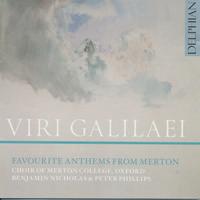
Dir: Benjamin Nicholas & Peter Phillips
Organ: Charles Warren & Peter Shepherd
Dove Te Deum; Tallis If ye love me; O nata lux; Elgar Give unto the Lord; Morley Nolo mortem peccatoris; Rutter The Lord bless you and keep you; Parry Blest pair of sirens; Byrd Diliges Dominum; Ave verum corpus; Quilter Lead us, heavenly Father; Finzi Lo, the full, final sacrifice; Harris Faire is the heaven; Gowers Viri Galilaei
DELPHIAN DCD 34174 TT 75:36
Whose favourites are these anthems? The choir’s members, friends and relatives might buy this CD. Casual visitors to Oxford might buy a copy at the porter’s lodge, but they would buy almost anything! What of informed and serious collectors? They might be attracted by Jonathan Dove’s splendid new Te Deum, by Diliges Dominum and Lead us, heavenly Father and by Viri Galilaei, one of the best anthems to appear in the last 30 years; a rare incursion into sacred music by a composer better known for his film scores, it has a most appropriate connection with Oxford, having been commissioned for the consecration of Bishop Richard Harries. As for the rest of this anthology, there are ten other versions of Lo, the full, final sacrifice currently available, to say nothing of Blest pair of sirens in its proper orchestral dress; Elgar’s Great is the Lord is a good alternative to Give unto the Lord, and Harris composed many fine anthems beside Faire is the heaven. The works of H K Andrews, another Oxford musician, would have repaid exploration also. There is much to enjoy in the choir’s performances of Byrd, Morley and Tallis, but I was disturbed elsewhere by some distortions of the short ‘a’ vowel such as ‘mahjesty’, ‘sahcrifice’ and, with comic result, ‘the ransomed Isaac and his rum’. More serious than this, the performances of the longer works (Elgar, Finzi and Parry) seemed to run out of steam; in Blest pair of sirens there were also distinct signs of vocal strain, as if to prove that a larger body of singers was necessary. I would, though, offer a word of very warm praise for both the organists.
This is a good but not outstanding CD which fails to seize a great opportunity: the choir’s reputation and skill are so high that a more imaginative programme could have been devised which would have attracted the serious collectors and still sold well to friends and tourists.
Timothy Storey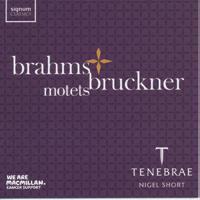
Tenebrae
Dir: Nigel Short Bruckner Aequalis No. 1; Virga Jesse; Ecce sacerdos; Christus factus est; Locus iste; Os justi; Ave Maria; Tota pulchra es; Aequalis No. 2; Brahms Fest- und Gedenksprüche op. 109 (Unsere Vater hofften auf dich; Wenn ein starker Gewappneter; Wo ist ein so herrlich Volk); Ave Maria; How Lovely are thy Dwellings; Drei Motetten (Ich aber bin elend; Wenn wir in höchsten Nöten sein); Geistliches Lied.
SIGNUM SIGCD 430 TT 74:42
This is a glorious disc. I doubt that the Bruckner motets have received better performances. One of the joys of reviewing CDs is that moment when one sits back and just listens, and nothing ugly, inappropriate, or just plain wrong, impinges. This is one such recording. All is unalloyed bliss – perfect ensemble, perfect tuning, and performances faithful to the music of these two composers. The Brahms motets are no less fine, and are to be particularly welcomed, perhaps being less well known. I have only one slight niggle, and that is to do with the inclusion of a movement from Brahms’ Ein deutsches Requiem, sung in English. Perhaps its inclusion had something to do with the CD being produced to help Macmillan Cancer Support.
Tenebrae and Nigel Short are to be warmly congratulated for such wonderful performances, recorded splendidly in the Temple Church, London, by Signum Classics, and making colourful use of the fine organ there. This CD won the BBC Music Magazine Choral Award for 2016, and deservedly so. Recommended unreservedly.
Roger Judd
Messa a quattro voci et salmi of 1650 Volume I
The Sixteen
Dir: Harry Christophers
Monteverdi Dixit Dominus; Confitebor tibi Domine; Lauda Jerusalem a 3; Cavalli Magnificat; Monteverdi Laetatus sum a 5; Nisi Dominus a 3; Laudate pueri a 5; Laetaniae della Beata Vergine a 6; Beatus vir a 7. CORO COR16142 TT 71:29
One has come to expect an excellent standard of singing and playing in any recording made by The Sixteen. Under their director Harry Christophers, the singers and instrumentalists bond so well together that they give a united vision of the music which comes across with a sense of joy and freshness. This is very apparent in their first volume of music from Messa a quattro voci et salmi of 1650. With one exception, the music was composed by Monteverdi. The collection was gathered together by its printer Vincenti, probably with the help of Cavalli (whose setting of the Magnificat is the one exception) and published seven years after Monteverdi’s death. This first volume includes seven psalm settings, the Laetaniae della Beata
Vergine and Cavalli’s Magnificat. The music varies from 3-voice to 8-voice settings. All have continuo accompaniment, but two violin parts are added for three of the psalms and the Magnificat
Many commentators have spoken of the dance-like quality often found in Bach’s cantatas and I felt the same quality comes across in this recording of Monteverdi’s music. The lightness of touch given to the music by The Sixteen, together with a sense of excitement and often lively tempi, all add to this dance-like feeling. Of course, there is plenty of variety; it isn’t all fast and joyful, and the psalm settings with three solo voices contrast well with the grandeur of the 8-part works. It is all very tastefully presented with skilful ornamentation and delightful precision. Congratulations to Harry Christophers and his wonderful singers and instrumentalists on a super CD!
Paul MorganRodolfus Choir
Dir: Ralph Allwood Organ: Max Barley Tavener O, do not move; Tallis Thou wast, O God, and thou wast blest; Miserere nostri; G Jackson To Morning; arr Edward Chapman The Three Ravens; Pärt Nunc dimittis; Which was the son of ...; Finzi Haste on, my joys!; Kodály Esti dal; Byrd Diliges Dominum; Gibbons What is our life?; Recknell Ozymandias; Adrian Cruft These hours; Ley A Prayer of King Henry VI; Howells Even such is time; Benjamin Rowarth The Evening Watch; Parry Music, when soft voices die; Victoria Lux aeterna; Bach Et incarnatus est.
SIGNUM SIGCD 445 TT 73:43
The Rodolfus Choir and Ralph Allwood, their indefatigable director, present a most imaginative programme around the concept of Time. As we’ve grown used to this choir over the years, so there is now an expectation of excellence, despite the changing personnel. So much can be taken for granted. Faultless tuning and ensemble are a norm, and a direction that is always at the service of the music and not for any flashy effect.
Time standing still, as in Byrd’s extraordinary and compositionally virtuoso palindromic Diliges Dominum and John Tavener’s O, do not move, listen to the gentle beginning; the temporal, as in Orlando Gibbons’ What is our life?; the end of time, as in the Nunc dimittis by Arvo Pärt, and that composer’s remarkable setting of Jesus’s genealogy – who would have thought that text was settable, and so engagingly? This CD is full of the unexpected mingling with the more traditional, and as such provides the listener with a rich choral experience that is also thought-provoking.

I would most warmly urge you to experience this musical journey. Beautifully sung with fine direction, and an excellent recording to match.
Roger Judd
Polyphony
Dir: Stephen Layton; Organ: James Vivian
A Queen’s Fanfare; Coronation Te Deum; A Litany; The Twelve; Set me as a seal; Magnificat; Nunc dimittis; Where does the uttered music go?; Jubilate Deo; Missa Brevis; Cantico del sole; A Litany (version 2); Make we joy now in this fest; King Herod and the cock; All this time; What cheer?; A Litany (version 3); Antiphon.
HYPERION CDA 67330 TT 76:36
This recording is fully 14 years old, and it may perhaps have been resurrected for its royal connections in this Year of the Ninetieth Birthday. In consequence, there is a curiously outof-date feel to the liner-notes, with Messrs Layton and Vivian apparently still resident at the Temple Church, rather than at Trinity Cambridge and Windsor Castle. That said, it is still a fine programme, fascinating for its inclusion of three versions of A Litany (‘Drop, drop slow tears’), a 15-year-old’s first attempt at choral composition; one might buy the CD just for this, and also for Antiphon (‘Let all the world’) and Cantico del Sole, works all too rarely performed. More familiar will be the Coronation Te Deum, now widely sung in Simon Preston’s arrangement, which I assume is the one used in this recording; it receives a performance full of energy and excitement, as do all the works included here. If you already have the (rather less expensive) Naxos recording of most of this music by Christopher Robinson and the choir of St John’s College Cambridge, that should serve you well enough, and the singing is just as good as in the recording under review which might however appeal to committed Waltonians for its comprehensiveness.
 Timothy Storey
Timothy Storey
Chichester Cathedral Choir
Dir: Charles Harrison
Organ: Timothy Ravalde
Psalms 133-150
PRIORY PRCD 1155 TT 74:12
As FCM members will be aware, the choir at Chichester is unique in its smallness – twelve boys (eleven on this recording) and six men. The supporting organ is also unique in its gentle voice. Charles Harrison and his musicians have been entrusted with the final volume of Priory’s second series of psalm recordings. For this second series, chants that have not previously been recorded have been used, and they bring an interesting dimension of unfamiliarity to the familiarity of the texts.
One of the defining aspects of the BBC’s Choral Evensong broadcasts is the psalms. Each choir director brings his or her own distinctive take on the way they should be sung. At Chichester their singing of the Gloria that concludes each psalm is particularly individual. Happily, their singing of the psalms is devoid of strange mannerisms, with one exception. Much use is made of slowing down at the end of each pair of verses. After a while this can become a little wearisome, especially if a longish sequence of psalms is listened to without a break.
Timothy Ravalde is an excellent accompanist, supporting the choir and colouring the words with great sensitivity. The choir under Charles Harrison shows itself to be a fine ensemble, and they provide an altogether worthy conclusion to this Priory project.
Roger Judd
Dir: Simon Bell
Organ: Carleton Etherington and Edward Turner
REGENT REGCD474 TPT 75:07
Steel People, look East; Chilcott There is no rose; Bednall Alleluya, a new work is come on hand; arr Leighton O leave your sheep; Wood Nunc dimittis in B flat; Tallis In ieiunio et fletu; Bruckner Tota pulchra es, Maria; Grayston Ives Ubi caritas; Bairstow Sing ye to the Lord; Walton Antiphon; Forbes Gracious Spirit; Elgar Give unto the Lord; Bairstow I sat down under his shadow; Stanford Benedictus in C; Matthew Martin I sing of a maiden; Weelkes Alleluia, I heard a voice; Tavener Funeral Ikos; Matthew
Martin Laudate DominumThe concept of making a disc based on the Church’s year affords an opportunity to reveal the diversity of music composed for its various festivals and holy days. This is an extremely well-planned CD and reveals some exuberant singing, especially in the treble line. It also embraces the qualities of the Grove organ in Tewkesbury Abbey and coupled with excellent accompaniments by both Carleton Etherington and Edward Turner, and fine choral singing, there is much to enjoy. Some of the anthems are well known, but included are commissioned anthems by David Bednall and Matthew Martin, both of whom are playing a significant role in enhancing the English Cathedral repertoire. Some very refined and delicate anthems are included, where the singing in all parts is extremely well controlled, with the shape and phrasing of the melodic lines more apparent than in some of the more robust pieces. Nevertheless, I especially enjoyed Christopher Steel’s lively account of People, look East, but perhaps I can understand why I have neither heard nor played Bairstow’s Sing ye to the Lord! The inlay notes by John Lees are extremely thorough in both explanation of the music and the liturgical significance of the raison d’être behind this illuminating CD.
David Thorne
Dir: Geraint Bowen Organ: Peter Dyke Wood This joyful Eastertide; Sanders Preces & Responses; Monk Easter Anthems; Stanford Te Deum in C; Jubilate in C; Ye choirs of new Jerusalem; Byrd In resurrectione tua; Langlais Messe solennelle; Taverner Dum transisset I; Howells St Paul’s Service M & N; S S Wesley Blessed be the God and Father.
REGENT REGCD 478 TT 77:20
This is a quite splendid and appropriate idea for a choral programme! One might play this disc to someone who wished to learn about cathedral music in its proper liturgical context. One might hope that in the real world, rather than the Neverland of a recording session, a choirmaster would follow a ‘big sing’ such as the Langlais Mass with something a little less strenuous than the St Paul’s Service. And if it had to be Howells, did he not write a Hereford Service which we never seem to hear? Richard Lloyd wrote one also, as did Francis Jackson. Choral programmes have become so stereotyped! That apart, no reasonable person could complain of the contents of this disc; it was good to hear Byrd and Taverner before lunch, as it were, and the only way to conclude Easter at Hereford is of course S S Wesley’s anthem in the very place for which it was composed. The treble solo is very sweetly and confidently sung, and that infamous dominant seventh chord on full organ conveys much of its expected thrill, though not all of it because the organ sounds a little shy and retiring, an observation which I would apply to the rest of this disc. The singing is a little subdued also, as though the choir is not totally engaged with all of the music, though in the ‘hosanna’ of the Messe Solennelle the boys produce a top C every bit as
thrilling as anyone could expect. This is a very worthwhile CD which should be greatly enjoyed by lovers of this wonderful cathedral and its fine choir.
 Timothy Storey
Timothy Storey
Francesca Massey plays the Organ of Durham Cathedral Bowen Fantasia; Messiaen Diptyque; Lindberg Sonata in G minor; Dupré Prelude and Fugue in F minor; Mathias Variations on a Hymn Tune; Alain Choral Cistercien pour une élévation; Hovland Nu la oss takke Gud (Organ Toccata); Pott Empyrean.
PRIORY PRCD 1137
Durham’s organ is justly celebrated for its ‘superb brilliancy of tone’, the legacy of Father Willis who built what was largely a new instrument in the 1870s, and for its impressive solo and chorus reeds. The Willis inheritance has been preserved and enhanced in rebuilds (1905, 1935, 1970) by successive generations of the Harrison firm, still happily resident near Durham. It would have been all too easy for Durham’s talented Assistant Organist to present the organ as a sort of Curiosity Shoppe and treat the listener to a programme of Trumpet Tunes and Famous Toccatas, all designed to show off the instrument’s more extreme tonalities. Rather, and commendably, she has preferred to place its mighty resources at the service of a programme of genuine organ music, well-chosen and I suspect largely unfamiliar to most listeners, with the possible exception of the Mathias Variations, a most welcome inclusion; Hovland’s Toccata is none other than our old friend ‘Now thank we all our God’, but the rest of the programme demands, and will repay, the listener’s careful attention. Thanks to the excellence of Priory’s engineers one can almost imagine oneself seated in Bishop Cosin’s superb choir-stalls, and it hardly needs to be said that the playing is of the highest possible standard; and, as if to please the organ-fanciers, the very last chord of all is played on the Tubas and the 32’ Double Ophicleide. Wonderful!
Timothy Storey
Anthony Hammond plays the organ of L’Eglise St-Vincent, Roquevaire Hakim Ave Maria (Fantasy on a Lied); Cochereau Suite Française improvisée; Thème et variations sur ‘Ma jeunesse a une fin’; Monnikendam Toccate concertante; Roth Triptyque; Hammond Improvisation: Triptyque; Bouvard In memoriam Pierre Cochereau.
PRIORY PRCD 1156
Roquevaire is a village in the Provence-Alpes-Côte d’Azur region of Southern France. In its church a home has been found for Pierre Cochereau’s 5-manual house organ, designed to incorporate all his favourite sonorities; he was the organist of Nôtre-Dame de Paris from 1955 to 1965 and was famed for his liturgical improvisations at Mass which have
fascinated and influenced a whole generation of organists here and abroad. Not the least interesting work herein included is his Suite française, which respects the old classical forms used in the suites of, for example, Clérambault; there is even a Basse et dessus de trompette. The other works are to a greater or lesser extent inspired by Cochereau, with frequent or over-frequent recourse to his noisy and exciting toccata style, which subjected your reviewer to a surfeit of the instrument’s less appealing tonalities; I preferred and enjoyed the rich selection of classical registrations employed in the Suite. À chacun son goût! Thankfully there can be no dispute as to the quality of the organist; a student of Roger Fisher, David Briggs and Naji Hakim, he is the Director of Music at Cirencester Parish Church. He handles this exceptionally taxing programme with skill and musical insight, and even succeeds in the introduction of an improvisation of his own, a dangerous but successful enterprise. This is perhaps a disc for enthusiasts only, but on that basis I recommend it wholeheartedly.
Timothy StoreyJames Lancelot plays the organ of Durham Cathedral
Bach 46 Chorale Preludes BWV 599-644

PRIORY PRCD 1139
This is really rather special. Durham and Lancelot have become a long-standing partnership of organ and organist just as celebrated as those of Jackson and York, or Rawsthorne and Liverpool; in such partnerships the player comes to know every note of every rank of pipes, and can find colourful and subtle registrations exactly tailored to the demands of the music. As Dr Lancelot himself admits, Durham’s organ would not seem to be the obvious choice for a Bach programme but, thanks to its Father Willis pedigree and the excellence of the subsequent work of Harrison & Harrison, it is an unusually versatile instrument, well able to match this music’s demands; Dr Lancelot claims with some pride that he has not used the same registration more than once, and a number of the quieter ranks are heard on their own, to delightful effect. The playing is of the superlative standard we have come to expect, but an added depth is supplied by the organist’s long acquaintance with and love of these preludes on chorales apt to the seasons of the Lutheran Church’s year, music apparently simple for the most part but in fact deeply expressive and containing some of the most mature expressions of Bach’s genius. This CD is a ‘must’, and not only for organists.
Timothy Storey
David Poulter plays the organ of Liverpool Cathedral
Elgar Sonata in G; Bridge Adagio in E; Whitlock March: Dignity and Impudence; Howells Master Tallis’s Testament; Noel Rawsthorne Londonderry Air; Walton
Crown Imperial, Henry V Suite March, Elegy, Scherzetto, Orb and Sceptre
PRIORY PRCD 1158 TT 75:56
The iconic Henry Willis instrument built for Liverpool Cathedral is one of the finest instruments in the world, and remains the largest in the UK. It is therefore fitting that
Neil Collier chose Liverpool to record the final disc in his monumental and ground-breaking project which began in 1986 by featuring the organ of King’s College Cambridge, and which included music by Mendelssohn and Hindemith.
Elgar’s Sonata is one of the most orchestrally conceived works in the genre, and there is no more colourful an instrument on which the rich orchestral colours and timbres can be explored so fully. David Poulter’s account has to be judged on the premise of the cathedral’s immense acoustic, and there are occasions when the opening movement tends to feel a little slow, with the emphasis on ‘maestoso’ rather than ‘allegro’. The massive dynamic range marked in the score is religiously observed, in both the choice of registration and the recording balance, which more than put this listener’s audio equipment to the test. For me, the overwhelming feature of the interpretation, with phrasing so well controlled, is its sheer musicality. There might be the odd moment where some of the passage-work is slightly lost, but this is a very small price to pay for such an overall exciting performance, and this is especially reflected in the last section of the exhilarating final movement. The remainder of the disc contains shorter and contrasting works played with great sensitivity whilst the Whitlock is performed with much panache and alacrity. Along with the Henry V Suite, Walton’s two extremely fine Coronation marches conclude this splendid disc, with Orb and Sceptre serving as a fitting tribute to both the Liverpool organ and Neil Collier’s splendid 30-year span of recordings.
David Thorne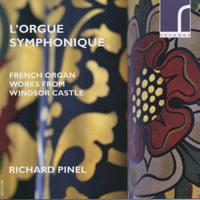
Richard Pinel
Vierne Symphony No. 2 in E minor; Ducasse Pastorale; Duruflé Suite Op. 5 RESONUS RES 10160 TT 74:40
This is an enjoyable recording of three wonderful French organ pieces composed between 1902 and 1932. Richard Pinel’s playing is very accomplished throughout. He has an assured technique and, in my judgement, his careful observation of expressive detail convincingly communicates the musical intentions of the composers.
Vierne’s Second Symphony (my favourite of his six symphonies for organ) was composed in 1902 shortly after Vierne became organist of Notre-Dame, Paris. The very precise registrations in the score indicate the importance of the sonorities of the Notre-Dame organ in the conception of the work. Naturally the Harrison & Harrison organ of St George’s Chapel Windsor, designed 50 years ago by Sidney Campbell, is somewhat different in character to the magnificent CavailléColl of Notre-Dame. Nevertheless, the Windsor organ was designed to be sympathetic to the French romantic tradition, and overall I think the music comes across very well, despite its inability to observe every detail of registration from time to time. Commendable energy is built up in the restless turbulence of the outer movements which eventually resolve in thrilling magnificence. The serene atmosphere of the second movement is beautifully captured and the playfulness of the Scherzo neatly conveyed.
Roger-Ducasse’s Pastorale is his only work for organ. It consists of eight variations which become progressively more lively. Considerable skill is needed in the seventh variation, which has a furious virtuoso pedal part before calm is restored in the final section. Pinel gives an excellent account of this fine piece and Duruflé’s Suite for organ Op. 5 which completes
the programme. A sombre but characterful Prelude is followed by an exquisite Sicilienne. The technically challenging final Toccata remains as popular as ever, although Duruflé himself rather disliked it. The revised version of the last few bars is used, although personally I prefer the original ending. A splendid CD!
Paul MorganThe Complete Organ Works Vol. 1
David Goode
Trinity College Chapel, Cambridge
Toccata & Fugue in D Minor, BWV 565; Sonata No. 1 in E flat, BWV 525; Pièce d’Orgue (‘Fantasia’) in G major, BWV 572; Six Schübler Chorales, BWV 645-650
‘Little’ E Minor Prelude and Fugue, BWV 533; Herzlich thut mich verlangen, BWV 727; In dich hab’ ich gehoffet, Herr, BWV 712; Prelude & Fugue in C Minor, BWV 546
SIGNUM SIGCD 800
Until now I’ve had no dealings with downloadable recordings, so I was more than a little curious to discover how this one would work for me. After all, at 70+ one can still learn new tricks, can’t one?
Not another ‘complete Bach’, I hear some mutter! There is, of course, intense and powerful competition in this endeavour. From the outset of this recording, however, it is clear that David Goode has given every note a great deal of thought – this is playing of real distinction. Nothing is humdrum or commonplace. Even BWV 565 is given fresh life, and that is saying something! For me, the Sonata and the Schübler chorales bring especial delights. Goode is wonderfully partnered by the Metzler instrument in the chapel of Trinity College Cambridge, and the whole is beautifully recorded by Signum Classics. This organ (I suspect) is incapable of ugly sounds, and both the individual ranks and the plenum are immensely satisfying. There is an excellent ‘booklet’ by George Parsons that discusses many aspects of Bach’s compositions, both generally and specifically. This is an auspicious start to an exciting project, and I recommend it most warmly.
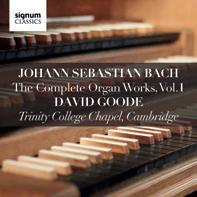 Roger Judd
Roger Judd
Timothy Wakerell plays the Drake organ of St Paul’s Cathedral Buxtehude Toccata in D min; Bull Bull’s Goodnight; Sweelinck Onder een linde groen; Böhm Vater unser im Himmelreich; Ach wie nichtig, ach wie flüchtig; Bach Trio super Allein Gott in der Höh’ sei Ehr; Toccata & Fugue in F; C P E Bach Sonata in F; Gade Moderato in F from Drei Tonstücke; Brahms Herzlich tut mich verlangen; Saint-Saëns Allegro giocoso from ‘Sept Improvisations’.

PRIORY PRCD
This welcome recording of the OBE Chapel Organ in St Paul’s Cathedral, London demonstrates the excellent quality of William Drake’s last complete new instrument, built in 2012. This 2-manual tracker organ of just over 20 stops is in the North German Baroque style, but with some regard to English organs of the 18th and early 19th centuries (e.g. the Swell division is enclosed). Timothy Wakerell, who was Sub-Organist of St Paul’s when the CD was recorded, is now Assistant Organist at New College Oxford. He skilfully
plays a programme of mostly Baroque German music. Four items are sets of variations, which allow a variety of registrations to be heard. The main item is Bach’s Toccata and Fugue in F (BWV540) which, in contrast, uses organo pleno throughout.
A rarely heard Sonata in F by C P E Bach is a pleasing addition, but it is a pity that English composers are only represented by Bull’s Goodnight. An organ voluntary by John Stanley, for example, would have fitted in very well.
The recital concludes with three romantic pieces. A fine Moderato in F by the Danish composer Niels Gade is in the tradition of Mendelssohn. This is followed by a beautiful and solemn chorale prelude by Brahms, with a light-hearted Allegro giocoso by Saint-Saëns concluding the programme.
Timothy Wakerell’s playing is very accurate throughout, with much care being taken over phrasing and ornamentation. As always, the recording (made by Neil Collier) is of an excellent quality and the sleeve notes guide us carefully through the programme.
Paul Morgan
Ashley Grote plays the organ of Norwich Cathedral
Bach Toccata & Fugue in D min; Vierne Carillon de Westminster; Karg-Elert Nun danket alle Gott; Walton arr Murrill Crown Imperial; Lefébure-Wély Andante ‘Choeur de voix humaines’; Sortie in E flat; Elgar arr Martin Imperial March; Vaughan Williams Prelude on ‘Rhosymedre’; S S Wesley Choral Song and Fugue; Grote Prelude on ‘Cross of Jesus’; Boëllmann Suite Gothique; Widor Toccata from Symphonie No. 5. PRIORY PRCD 1153
This might enter the Guinness Book of Records for the number of popular war-horses that could be crammed into one CD, and Norwich Cathedral’s very capable organist rides them all in fine style, sometimes a shade too fast and noisily for their, or the listener’s, comfort. An attempt to dance to the Menuet Gothique from Boëllmann’s Suite would be fraught with danger! Given that this organ has no fewer than 105 stops one would have expected to hear a greater variety of forte registrations; one was all the more grateful for moments of repose such as those provided by Rhosymedre and Mr Grote’s own Prelude, an ingenious and attractive work but one which hides Stainer’s tune a little too much. This is a perfectly good CD in its way, and it will be welcomed by friends and admirers of the player and the organ.
Timothy StoreyTom Winpenny plays the organ of St Albans Cathedral
La vierge et l’enfant; Les bergers; Desseins éternels; Le verbe; Les enfants de Dieu; Les anges; Jésus accepte la souffrance; Les mages; Dieu parmi nous.
NAXOS 8.573332 TT 61:07
There are many recordings of Messiaen’s Christmas masterpiece by a splendid roll call of players, from an equally diverse number of instruments. Does the market cry out for yet another? Well, if it is as well played and recorded on an instrument that has the tonal palette the composer demands, then, yes.

It goes without saying, or should (!), that Tom Winpenny is more than equal to the technical challenges these nine movements present. I have much enjoyed listening to this CD, and if there are little things that I would have liked to hear done differently they are personal interpretative details, and did not in any way diminish my pleasure. As examples, in movement three – Desseins éternels – Messiaen’s instruction in the score is Extrêment lent et tendre, and there are not many players who come near the composer’s own performances that could take over 6 minutes. Winpenny is no exception, even shortening the final chord, which should go on for ever! The angels (movement six) seem rather well behaved and not quite as excitable as perhaps they would have been. The performance of Dieu parmi nous is brilliant and all that one could wish for, as is the beautifully contemplative playing of the second half of Le verbe
The recorded sound, by Adrian Lucas for Naxos, is first class. The sound and acoustic of St Albans Cathedral, and the splendidly colourful Harrison & Harrison organ, are brought vividly to life. Altogether a fine adjunct to the Christmas festivities.
 Roger Judd
Roger Judd

David Leigh plays the organ of St Patrick’s Cathedral, Dublin
Sir Robert Prescott Stewart Concert Fantasia in D min; Joseph Ropartz Prélude funèbre and Sortie from ‘Six Pièces’; Lemare Organ Symphony No. 1 in G min; Giroud Toccata pour l’élevation; Harvey Grace Fantasy Prelude Resurgam.
David Leigh, Assistant Organist at St Patrick’s Cathedral, Dublin, has produced a really interesting programme to demonstrate the romantic character of this large organ, which Father Willis planned, but was never able to hear, as he died a year before its completion in 1902. In fact, the St Patrick’s Cathedral organ has a long history beginning with Renatus Harris (1697). Recent modifications include major work undertaken by Harrison & Harrison in 1995.
The programme begins with a Concert Fantasia in D minor by Sir Robert Stewart, organist of St Patrick’s Cathedral in the mid-19th century, which gives us a useful tour of the organ. It is followed by two delightful pieces by Guy Ropartz, a pupil of César Franck.
The major work is Lemare’s Organ Symphony in G minor which lasts nearly 40 minutes. It is technically very demanding and full of colour. David Leigh overcomes such obstacles as several virtuoso pedal passages exceedingly well, giving an excellent account of this neglected work. Lemare is better known for his numerous transcriptions, but he composed over 200 original organ pieces which, apart from Andantino in D flat (Moonlight and Roses), are rarely played. This symphony is well constructed and gives us a taste of his legendary virtuosity as an organist. After a brief period of being a church organist in London, Lemare sought and found his fortune in America (his salary from the city of San Francisco in 1915 was apparently £2000!).
Surprisingly, calm is provided by Jean Giroud’s Toccata pour l’Élevation before the final piece Resurgam by Harvey Grace which is a real gem. The CD is highly recommended.
Paul Morgan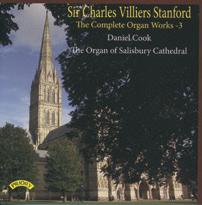
The Complete Organ Works – 3
Daniel Cook
The Organ of Salisbury Cathedral
Three Preludes and Fugues Op. 193; Canzona (1909) Op. 116 No. 2; Sonata No. 4 in C Minor Op. 153; Allegro molto moderato; Tema con variazione (Allegretto); St Patrick’s Breastplate (Allegro maestoso); Three pieces for Piano and Violin Op. 155 (arr E S Roper): No. 2 Scherzino; Six Preludes and Postludes Set 2 Op. 105.
PRIORY PRCD 1146
TMT 71:14
Many associate Stanford only with his choral writing, but this disc shows him as one of the relatively small number of extremely fine composers of the British romantic school. Daniel Cook possesses an innate ability to interpret the music of this genre with great passion and understanding. The three Preludes and Fugues contrast much in character, some consisting of a great deal of muscular and dense writing, such as in the first one, whilst the second Prelude in C minor, for example, is light and instantly appealing. His 1909 Canzona contains some most attractive, colourful and lyrical writing, all of which is so well suited to Salisbury’s Father Willis organ, especially when played by a performer who knows the instrument so well. Placed at the centre of the recital is the fine C minor Sonata The three movements of this work are all substantial; the theme and variations demonstrate an array of colour, whilst the final movement is an extremely fine Passacaglia based on St Patrick’s Breastplate – subtly paying homage to Stanford’s native Irish roots. Many of the Six Preludes and Fugues are well known. There may be some within the organists’ fraternity who regard these pieces as rather lesser works, but Daniel Cook’s individualistic and positive interpretation suggests a rethink. Jeremy Dibble’s programme notes are highly informative. My only wish is that the inlay notes matched the order of the tracks on the disc itself.
David ThorneTenebrae
Dir: Nigel Short
Preston I saw three ships; There is no rose; On Christmas Day; Gardner Tomorrow shall be my dancing day; Balulalow; A Gallery Carol (Rejoice and be merry); Lloyd Love came down at Christmas; Robinson Rejoice and be merry; Hickox The Birds; Warlock Benedicamus Domino; Adam lay ybounden; I saw a fair maiden; Balulalow; As dew in Aprylle; Ledger Adam lay ybounden; On Christmas Night; Bax I sing of a maiden; Edwards No small wonder; Jonathan Lane There is no rose; Richard Knight Come rock his cradle; Alec Redshaw I sing of a maiden; Philip Radcliffe Mary walked through a wood of thorn.
SIGNUM SIGCD902 TT 55:35
Very English? I suppose this is so because all the composers and arrangers are English, but even more so because it encapsulates the custom, firmly established in recent years throughout the English-speaking world, of dressing up old texts and/or melodies in contemporary musical language. With rare exceptions the examples presented here are utterly
beguiling; were I not retired from the business of organising Christmas services, I would be searching out copies of Simon Preston’s On Christmas Day (words by Gerard Manley Hopkins, no less!) and of all the Peter Warlock. It was good to be reminded also of the lively version of Rejoice and be merry by our distinguished past president Christopher Robinson; what a naughty chord at the end! It was something of a surprise to encounter the great conductor Richard Hickox in this company; his attractive setting of From out of a wood did a cuckoo fly seemed wasted on a Percy Dearmer translation unsurpassed in its twee-ness, and one only wished that the cuckoo and his pals the pigeon and the dove had stayed put! John Gardner’s Gallery Carol finished the programme in vigorous, even explosive style, and would certainly have been a prime candidate for anything I was planning. So, if you enjoy the luxury of dealing with singers who do not require lengthy rehearsal, buy this CD at once and perform some or all of its contents this coming Christmas-tide. If you enjoy listening to slightly unusual Christmas music wonderfully well performed, buy it and buy a few for your friends. Warmly recommended.
Timothy Storey
Tewkesbury Abbey Schola Cantorum
Dir: Simon Bell
Organ: Carleton Etherington
Ledger Adam lay ybounden; Chilcott Nova! nova!; The night he was born; Mathias A babe is born; Trad arr RVW O little town; Moore Into a quiet world; Trad arr Wilberg Ding! dong! merrily on high; arr Hill Away in a manger; Bédard Noël Huron; Toccata sur ‘Il est né le divin enfant’; Warlock Benedicamus Domino; Bethlehem Down; Gardner Tomorrow shall be my dancing day; Edwards No small wonder; arr Willcocks O come, all ye faithful; Hark! the herald angels sing; arr Lloyd I saw three ships; Cullen In excelsis Gloria; arr Moore This is the truth; Rutter Candlelight Carol; Hewitt Jones Verbum caro factum est;
REGENT REGCD 440 TT 69:27
Apart from three popular congregational carols with wellloved descants by Thomas Armstrong and David Willcocks, the carols on this disc are either original or are arrangements of traditional ones by mostly contemporary British composers. Many of these, such as Gardner’s Tomorrow shall be my dancing day and Rutter’s Candlelight Carol are widely known; but there are a few less familiar carols. Each year the Dean Close schools (where the Tewkesbury Abbey Schola Cantorum boys are educated) commission a Christmas carol for the choir, and three of these are included. The night he was born by Bob Chilcott and Into a quiet world by Philip Moore are both beautiful, reflective settings. The third commission, Verbum caro factum est by Thomas Hewitt Jones, is very energetic with a definite ‘end-of-term romp’ feeling about it. It is this mix of peaceful and vigorous carols that make this an attractive selection. The choir are of a high standard throughout and convey the varying moods with precision and care.
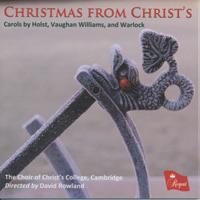
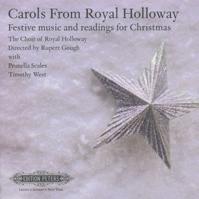
Carleton Etherington, who is Organist and Director of Music of Tewkesbury Abbey, accompanies the choir superbly and gives a notable solo performance of Deux Noëls by the Canadian organist and composer Denis Bédard. The first, Noël Huron, is a set of variations on a Canadian carol. The second, Toccata sur ‘Il est né, le divin enfant’, ends the disc in a spirited – and very French – festive mood. Altogether, it is an enjoyable CD.
Paul Morgan
The Choir of Christ’s College, Cambridge
Dir: David Rowland
Organ: Jonathan Ellse and Sidharth
Prabhu-Naik
Warlock As dew in Aprylle; Benedicamus Domino; Bethlehem Down; A Cornish Carol;
I saw a fair maiden; A Cornish Christmas Carol; Adam lay ybounden; Balulalow; Where riches is everlastingly; Holst A Babe is born; Now let us sing; Jesu, Thou the Virgin-born; The Saviour of the world is born; Lullay, my liking; Vaughan Williams The blessed son of God; No sad thought his soul affright; And all in the morning; On Christmas night; The Twelve Apostles; Down in yon forest; May Day Carol; The Truth sent from above; The Birth of the saviour; Wassail Song.
REGENT REGCD446 TPT 73:49
This anthology of carols collected and arranged by the three main protagonists of the English Folk Song tradition is an extremely worthwhile enterprise. Not only is there a chance to hear some of the more unknown and unfamiliar carols, but the disc enables the better-known examples to be heard within the context of the sets of pieces. I thoroughly enjoyed the excellent ensemble, especially apparent, for example, towards the end of phrases in Warlock’s Bethlehem Down – always a tricky moment. Most impressive is the way in which the choir handles the highly chromatic writing with such seeming ease. The success of this disc is not only due to some very fine singing and sensitive accompaniments, but moreover by Gary Cole’s superb balancing. Indeed, there is no shortage of acoustic, yet the words are still remarkably clear. I would thoroughly recommend this disc not only for enthusiasts of this tradition, but for those who wish to hear music well shaped and sung with such musicality.
David ThorneThe Choir of Royal Holloway
Dir: Rupert Gough; Organ: James Kealey
Harp: Cecily Beer
Readers: Prunella Scales and Timothy West
arr Rutter O come, O come, Emmanuel; Skempton Adam lay y-bounden; Goldschmidt A tender shoot; arr Clements Gabriel’s message; arr Willcocks Sussex Carol; Trad O Little town of Bethlehem; Reger arr Proulx Maria Wiegenlied; arr Gough Silent Night; Chadwick The Lamb; Gjeilo Away in a manger; Turner O little one sweet; Dubra A child’s prayer; Pärt Bogoroditsye Dyevo; Burton On Christmas Night; arr Willcocks O come, all ye faithful; arr Wilberg Ding! dong! merrily on high; arr Trotter Sleigh ride; arr Ben Parry Jingle Bells; arr Robson Have yourself a merry little Christmas.
EDITION PETERS (EPS 003) TT 69:29
For those finding they are unable to attend the rather more intimate kind of carol concert during the Christmas period, I can think of no better substitute than sitting down quietly and enjoying this beautifully sung collection by the choir of Royal Holloway. The intimate atmosphere is heightened by the inclusion of familiar seasonal prose read by Prunella Scales and Timothy West. The music begins with Advent, moves through the nativity scene and concludes with both sacred and secular music of a more general Christmas nature. There are a number of pieces which have not been recorded before, including an upper voice setting of William Blake’s
The Lamb by the American composer George Chadwick, and a contemporary arrangement of Away in a manger by the Norwegian composer Ola Gjeilo. There are also pieces and arrangements by composers closely associated with Royal Holloway such as James Burton, Tom Robson and, of course, Rupert Gough. There is no shortage of familiar carols ranging from John Rutter’s less well known but very effective arrangement of O come, O come, Emmanuel to Goldschmidt’s sensitive A tender shoot. At the other end of the spectrum and the only solo item on the disc is Thomas Trotter’s arrangement of Sleigh Ride played admirably by James Kealey, and Mack Wilberg’s highly upbeat arrangement of Ding! dong! merrily on high. Perhaps the overall atmosphere of this disc is summed up succinctly in the Proulx arrangement of Reger’s Maria Wiegenlied accompanied so sensitively on the harp by Cecily Beer.
David ThorneLa Maîtrise de Toulouse
Dir: Mark Opstad; Organ: William Whitehead
Mouton Noe, noe, psallite noe; Bouzignac Noe pastores cantate canticum novum; Ave Maria; Dum silentium tenerent omnia; Stella refulget; Moulinié Magi videntes
stellam; Clérambault Hodie Christus natus; Charpentier Salve puerule; Poulenc Salve Regina; Quatres motets; Ducasse Chant de la Nativité; Bleuse Hodie Christus natus est; arr Bouvard Guillaume, Antoine et Pierre; arr Opstad Birjina gaztettobat zegoen; El noi de la Mare; Anan auzi las aubados; Noël nouvelet; Dormi, fili, dormi!; Quelle est cette odeur agréable?
REGENT REGCD 470 TT 77:08
This is a superb CD of French carols. Founded in 2006, La Maîtrise de Toulouse is a choir of choristers aged 11-15 which is attached to the Toulouse Conservatoire. For this recording, the choir has been joined by lower voices, most of whom are ex-choristers of La Maîtrise. Their founder and current director is Mark Opstad, who began his musical education as a chorister at Bristol Cathedral.
There are three parts to this CD, beginning with Noels by Renaissance and Baroque composers. These are followed by several modern pieces, ending with arrangements of traditional carols.
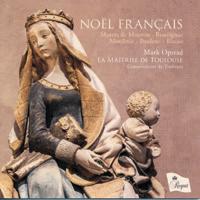

The opening motet by Mouton is in contrapuntal style whereas the following motets by Bouzignac and Moulinié adopt a simpler form with a number of solos being answered by the main choir. The Clérambault motet for two upper voice choirs and two soloists has a delightful freshness, and the Salve puerule by Charpentier is sensitively accompanied by William Whitehead (organ) and Géraldine Bruley (viola da gamba).
The choir excel in the wonderful motets by Poulenc; it is difficult to know how they could be more exquisitely and sensitively sung – bravo! They are followed by a serene gem for two upper voices and organ by Roger-Ducasse. Marc Bleuse, the Director of the Toulouse Conservatoire, composed his challenging motet for upper voices and organ for this recording. The choir divide into up to nine parts with considerable ease, and William Whitehead accompanies the choir splendidly.
Six of the seven arrangements which conclude the disc were especially composed for this recording. They are delightfully in the tradition of David Willcocks and clearly very much enjoyed by La Maîtrise.
I thoroughly recommend this as a Christmas present, either for friends, or even for yourself.
Paul Morgan by Alan Bullard
by Alan Bullard
Choir of Selwyn College, Cambridge
Dir: Sarah MacDonald
Organ: Timothy Parsons and John Bachelor
O come, Emmanuel; Ten Carols for Christmas
(A baby so small; A boy is born in Bethlehem; And all the stars looked down; Hillside Carol; The gracious gift; This night; Rose of such virtue; Child in the manger; A star as bright; Merrily did the Shepherds.)
REGENT REGCD 456 TT 70:39
This is a most attractive production comprising texts, traditional and scriptural, put together by Alan Bullard with original and arranged music by him. The result is a most engaging sequence lasting close on 40 minutes. Linking all this together are the great Advent ‘O’ antiphons. Wellloved and traditional Advent hymns receive imaginative new arrangements.
The remainder of the CD features Ten Carols for Christmas composed between 2000 and 2013, setting texts by authors as varied as the composer himself, G K Chesterton, Clive Sansom, a traditional Hebridean poem and anonymous 15thcentury verses. They all display, as does the CD as a whole, the composer’s love of the choral genre. Texts are set with the utmost sensitivity to their meaning and mood.
The Choir of Selwyn College under their director, Sarah MacDonald, is an excellent group of singers. Tuning and ensemble is immaculate, and their blend is admirable, as is their engagement with the music – a composer couldn’t wish for more committed and sympathetic performances. Tim Parsons (now Assistant Director of Music at Exeter Cathedral) is the excellent accompanist for the bulk of the repertoire, and John Bachelor plays for some of the Christmas carols. Gary Cole (Regent Records) has done a great job with the recording, made in Ely Cathedral, with everything balanced just as it should be. Warmly recommended.
Roger JuddBlackburn Cathedral Choirs
Dir: Samuel Hudson
Organ: Shaun Turnbull
Antiphons O Emmanuel; O Radix Jesse; O Oriens; Byrd Vigilate; Glenn L Rudolph
Veiled in darkness; Martin Bussey The Jesse Tree; Parsons Ave Maria; MacMillan
O radiant dawn; Beamish In the stillness; Holst arr Bertalot In the bleak midwinter; Wilberg Ding! dong! merrily on high; Rutter Candlelight carol; Tambling Toccata – Noel; Todd My Lord has come; Willcocks Tomorrow shall be my dancing day; Of the Father’s heart begotten; David Cooper Dormi Jesu; Victoria O magnum mysterium; Bednall Tribus miraculis; Howells Here is the little door; Mendelssohn There shall a star from Jacob come forth.
For a number of years Blackburn Cathedral’s music programme has been busy, outward-looking and successful, as is illustrated by this fine CD which takes us from Advent to Epiphany in an ordered sequence. We hear separately or together the cathedral choir, the girls’ choir, the young people’s choir and the Renaissance Singers (adults); they all ‘take in each other’s washing’ to some extent, and a close inspection of the booklet will tell you who is singing what with whom. You may well prefer just to sit back and enjoy the music, for everyone’s singing is of a very good standard, even
if one feels that they could have been let off the leash rather more at times; the drama and excitement of Byrd’s Vigilate are somehow missing, and Here is the little door is painfully slow. There is far more to praise than to condemn, and I cannot but record the pleasure I have taken in such a fine and unhackneyed programme; Sally Beamish and Messrs MacMillan, Todd and Wilberg are names which will be familiar to many, but you may be wondering about the American academic and singer Glenn L. Rudolph and the former King’s choral scholar Martin Bussey, who directs the Chester Bach Singers and is a vocal tutor at the University of Manchester. Due homage is paid to the cathedral’s former organists David Cooper and John Bertalot, and to the late and great Sir David Willcocks, whose version of the finest of all Christmas hymns provides an apt and satisfying conclusion. Priory’s engineers have captured well the ambience of this substantial and resonant building, though I should have preferred to hear more of the organ.
Timothy StoreyAlexander Eadon plays the Frobenius organ of Oundle School Chapel
Corelli Christmas Concerto; Titelouze
Magnificat sexti toni; Buxtehude Chorale Fantasia on ‘Wie schön leuchtet der Morgenstern’; Bach Nun komm, der Heiden Heiland BWV659, BWV660 & BWV661; Guilmant Introduction et variations sur un ancien Noël polonais; Flor Peeters Heer Jezus heft een hofken; Gerhard Krapf Veni, Emmanuel; Helmut Walcha Chorale Prelude on ‘Den die Hirten lobten sehre’; Manz Wie schön leuchtet; Blatchly Three versets on ‘Away in a manger’; Edmundson Toccata-Prelude IV ‘Vom Himmel hoch’.
PRIORY PRCD1164 TT 68:37
I confess that I had a bit of problem with this CD. Not with the playing or recording, I hasten to add, but with the instrument. If the repertoire had all been from the Baroque period my reservation would not apply, but hearing Guilmant, Flor Peeters and Garth Edmundson on the Frobenius sounds just wrong, in my opinion. A slightly close recording throughout adds to my discomfort, I fear – my enjoyment would have increased with a bit more space around the sound. Oundle School chapel has no acoustic to speak of, which compounds the problem somewhat.
It is good to hear the Frobenius in the Baroque pieces, especially the three magnificent Nun komm der Heiden Heiland preludes by Bach and the Buxtehude Fantasia on ‘Wie schön leuchtet der Morgenstern’.
Roger JuddYork Minster Choir
Dir: Robert Sharpe
Organ: David Pipe
Arr Wilberg Ding! dong! merrily on high; Rutter Nativity Carol; What sweeter music; Howells Here is the little door; A spotless rose; Sing lullaby; Long, long ago; Martin Nowell sing we; Pott Balulalow; Willcocks Tomorrow shall be my dancing day; Ives Lo, how a rose e’er blooming; Walton All this time; Skempton Adam lay y-bounden; Jackson The Virgin’s Song; arr Chilcott In dulci jubilo; Gruber arr Hill Silent Night; Warlock Lullaby my Jesus; arr Shephard Jingle Bells; Vaughan Williams Fantasia on Christmas Carols.
REGENT REGCD 467 TT 63:26
This CD launches with a splendidly rhythmic Ding! dong! merrily … in the great arrangement by Mack Wilberg. Incidentally, the organ arrangement is by Peter Stevens, Assistant DoM at Westminster Cathedral, not often credited. Some wellknown carol settings rub shoulders with the less familiar. It is always good to hear the set of three carol-anthems by Herbert Howells, and they receive fine performances. Nowell sing we by Matthew Martin is a brilliant piece, new to me, and complete with a dramatic organ part. Pott is in reflective mood in setting the 16th century Balulalow – it is a winner, and beautifully sung. Other less well-known repertoire includes a carol by Grayston Ives, and a rather quirky setting of Adam lay y-bounden by Howard Skempton. Stephen Jackson’s The Virgin’s Song has a strangely limping gait which is not unattractive. Bob Chilcott’s arrangement of the great German carol In dulci jubilo has just the right amount of swagger. The programme ends with a fine performance of Vaughan Williams’s Fantasia on Christmas Carols.
The York Minster choir, with boy and girl choristers, is doing great work under Robert Sharpe, and this CD is ample proof of this happy state of affairs. Excellently partnered by David Pipe, and recorded by Gary Cole (Regent Records), this is a disc that helps bring alive the true meaning of Yuletide.


 Roger Judd
Roger Judd
Norwich Cathedral Choir
Dir: Ashley Grote; Organ: David Dunnett Trad Once in royal; Vaughan Williams This is the truth; O little town; Ledger Sussex Carol; Rutter What sweeter music; Dormi Jesu; Michael Nicholas People look East; arr Willcocks Of the Father’s heart; God rest you merry, gentleman; O come, all ye faithful; The first nowell; Howells A spotless rose; Peter Aston Make we joye; Mathias A babe is born; arr Grote While Shepherds watched; Hark! The herald angels sing; Head The little road to Bethlehem; Chilcott The Shepherd’s Carol; Allain Balulalow; Warlock Bethlehem Down; Grote Cradle Song; arr Dunnett Silent Night; arr Preston I saw three ships; Parry Venite adoremus.
PRIORY PRCD 1148
Christmas at Norwich resembles a feast of ‘Nine Lessons and Carols’ – but without the lessons, and with many more carols. Ashley Grote, the Director of Music at Norwich Cathedral, spent a number of years experiencing the iconic form at King’s College Cambridge, first as a chorister and later as organ scholar. A number of wonderful descants by David Willcocks are heard on this enjoyable CD as well as a couple by Ashley Grote himself, and one by Stephen Cleobury. Both the boy and girl choristers join together with the six lay clerks and six choral scholars for this musical celebration of Christmas. They are superbly accompanied by the cathedral organist, David Dunnett, who produces all the right colours from the huge and wonderful Hill, Norman & Beard organ.
There is a good mixture of contemplative and lively pieces. Amongst the quieter ones, Rutter’s What sweeter music and Dormi Jesu are well sung but, as in several of the quieter carols, I noticed some occasional ambient noise which was slightly distracting in the softest moments. Of the quieter items I also enjoyed Michael Head’s The little road to Bethlehem, Warlock’s Bethlehem Down, David Dunnett’s lovely arrangement of Silent Night and Ashley Grote’s gentle Cradle Song.
Of the livelier carols, Philip Ledger’s arrangement of Sussex Carol is taken at a cracking pace. Make we joye by Peter Aston and A babe is born by William Mathias are also
sung with appropriate spirit, their more contemporary style being welcome additions. Perhaps the most taxing is Simon Preston’s virtuoso arrangement of I saw three ships which the choir sing with much enthusiasm.
There’s much to enjoy in this latest recording from Norwich Cathedral.
Paul MorganCarols and Anthems for Christmas

Cantemus Chamber Choir
Dir: Huw Williams; Organ: Robert Court arr Allwood Jingle Bells; Gauntlett & others Once in royal David’s city; arr Willcocks Sussex Carol; arr Court SuoGân; Mathias A babe is born; Howells Here is the little door; arr Willcocks O come, all ye faithful; Kirkpatrick arr Williams Away in a manger; Holst Ave Maria; Perry arr Bertalot Calypso Carol; Tavener The Lamb; Trad God rest you merry, gentlemen; Whitacre Lux aurumque; arr Sargent Mary had a baby; Ireland Adam lay y-bounden; Spiritual arr Sargent Hawaiian Lullaby; Grier Alleluia! I bring you news of great joy; arr Walford Davies The holly and the ivy; Britten A hymn to the virgin; arr Carter Spanish Carol; Walford Davies O little town of Bethlehem; arr Willcocks Hark! the herald-angels sing; arr Williams Deck the hall.
REGENT REGCD466 TT 64:00
Do not be alarmed by another CD of Christmas Carols. As Huw Williams says in his inlay notes, ‘Carols exist in many guises.... and this recording has something of everything, with various themes that appear and re-appear.’ The Cantemus Choir, based in Cardiff, is fast establishing itself as one of the country’s finest choirs, and this is well demonstrated on this recording. Do not expect the sound of the Oxbridge tradition, but instead something relatively full-blooded with a superb choral blend and excellent singing, notably in the soprano line. I especially enjoyed Ralph Allwood’s arrangement of Jingle Bells, even if some of the chromaticism was a little lost, due either to the speed or the acoustic in St Augustine’s Church, Penarth. It was also a treat to hear Walford Davies’s sensitive and lyrical setting of O little town of Bethlehem. Equally enjoyable were some new pieces to me: Andrew Carter’s arrangement of Spanish Carol, Holst’s Ave Maria and Whitacre’s Lux aurumque However, the musicality on this CD is summed up in the way the choir’s former musical director Robert Court and organist on this disc makes full use of the swell box in the crescendo marked in the organ link during the middle of the final verse of David Willcocks’ arrangement of O come, all ye faithful!
David ThorneThe Marian Consort
Dir: Rory McCleery
Jean Mouton Quaeramus cum pastoribus; Puer natus est nobis; Noe, noe, noe, psallite noe; Cristóbal de Morales Missa Quaeramus cum pastoribus; Pastores dicite, quidnam vidistis?; Annibale Stabile Quaeramus cum pastoribus.
DELPHIAN DCD 34145 TT 62:55



From the title you may well think this CD is yet another collection of traditional Christmas carols. In fact there are none; but there are five Christmastide motets from the Renaissance period, together with a parody Mass based on one of them. If you enjoy Renaissance sacred music, this will
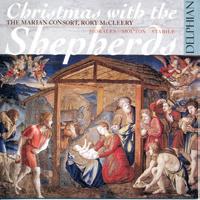
make a very welcome addition to your collection of CDs.
The Marian Consort is a young and dynamic early music vocal ensemble founded by its director, Rory McCleery, who is a musicologist and professional countertenor. The group maintains a superb standard throughout the disc with just one voice singing each part. Their tuning, tonal blend and shaping of the music is magnificent.
The opening 4-part Quaeramus cum pastoribus (Let us search with the shepherds) by the French composer Jean Mouton (c1459-1522) forms the basis of much of the disc. This motet was much admired by contemporary composers and remained in the repertoire of the Sistine Chapel for over a hundred years. Cristóbal de Morales (c1500-1553), a Spaniard who sang in the papal chapel around 1540, wrote a parody Mass on it, which is sung in its entirety on the disc, interspersed with further Christmas motets. The final item is another setting of Quaeramus cum pastoribus by the Italian Annibale Stabile (c1535-1595) who, it is thought, was a pupil of Palestrina. Although there are traces of Mouton’s influence, the overall effect is enriched by it being set for eight voices.
The disc was recorded in Merton College chapel in Oxford, and the recording quality is superb.
Paul MorganWestminster

Conducted by Martin Baker featuring Sophie Bevan Soprano

It’s a common myth that only the rich and famous leave money to charity when they die. The reality is that without gifts left in wills by people ‘like you and me’, many of the charities we know and support today wouldn’t be able to exist. Thankfully, 74% of the UK population support charities, and a good number say they’d happily leave a gift in their will once family and friends have been provided for.
The problem is that ‘the way to hell is paved with good intentions’, and most people do not leave any money to charity in their wills. Are you one of these? And if so, did you know that a reduced rate of inheritance tax (IHT), 36% instead of 40%, is applied to estates leaving 10% or more of their total to charity? This means, in essence, that on an estate worth, for example, £500,000, instead of paying IHT of £70,000, the tax would be £56,700. 10% of the estate – once the nil band of tax is removed – would be £17,500, which you could leave to the charity or charities of your choice, and the reduction in funds payable to family and friends would be only £4200.
Without a charitable bequest
If you consider that most charities would not survive without legacies, that a reduced rate of IHT will apply to your estate if you give 10% of it to charity, and that you are ensuring the vital work of your chosen charity can continue, it makes very good sense to donate 10% to charity in your will. The icing on the cake is that the taxman gets a lot less of your hard-earned cash than would be the case if you were to leave a smaller percentage.
If you have already made a will, as many if not most of us have, it’s still quite easy to change or add to it by writing a codicil. Sometimes it’s simpler to make a new will, and you’d do well to speak to a solicitor, but the benefits to whatever charity you choose to support (which clearly we hope will be FCM) will be worth the extra effort this requires.
Example:
With a 10% charitable bequest
including nil rate band
receives £56,700 instead of £70,000, and beneficiaries receive only £4200 less
A Pecuniary Gift
I give the sum of £ _____________ (in figures and words) to the Friends of Cathedral Music (FCM) (registered charity No. 285121). I direct that the receipt of the Treasurer of FCM shall be a sufficient discharge to my executors.
A Residuary Gift
I give the whole (or a _____% share) of the residue of my estate to the Friends of Cathedral Music (registered charity No. 285121). I direct that the receipt of the Treasurer of FCM shall be a sufficient discharge to my executors.
Please remember Friends of Cathedral Music in your will and help us to secure our priceless heritage for future generations
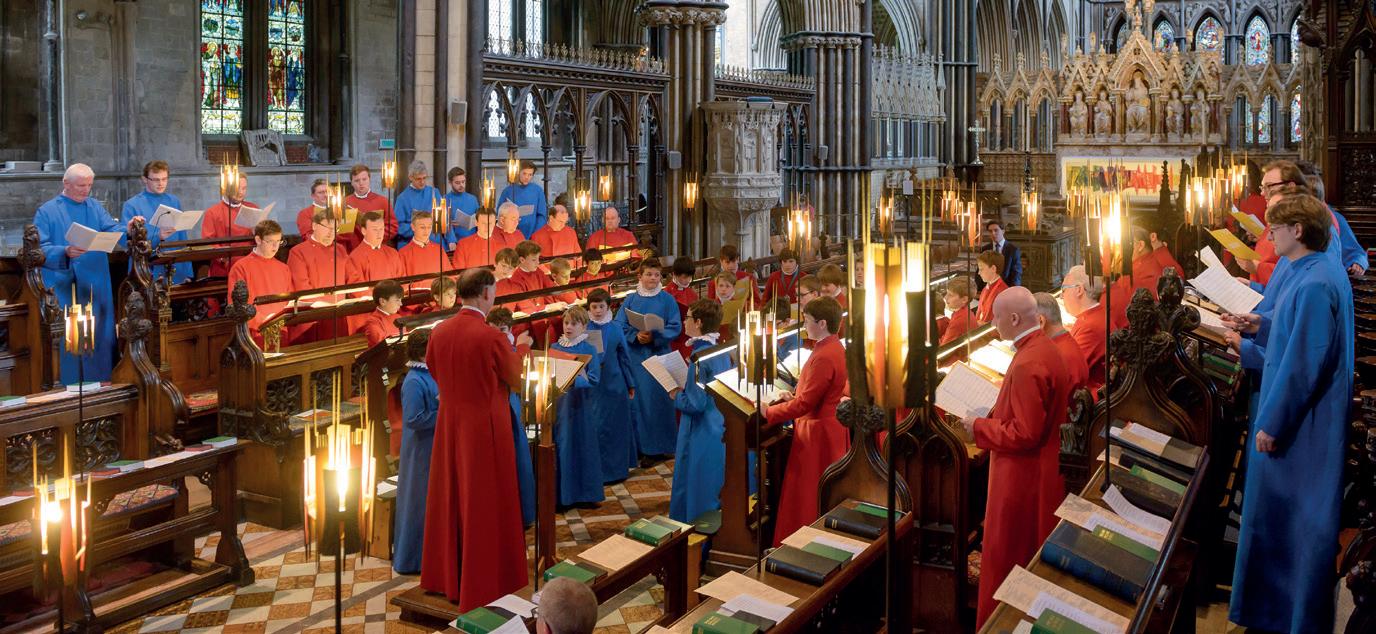

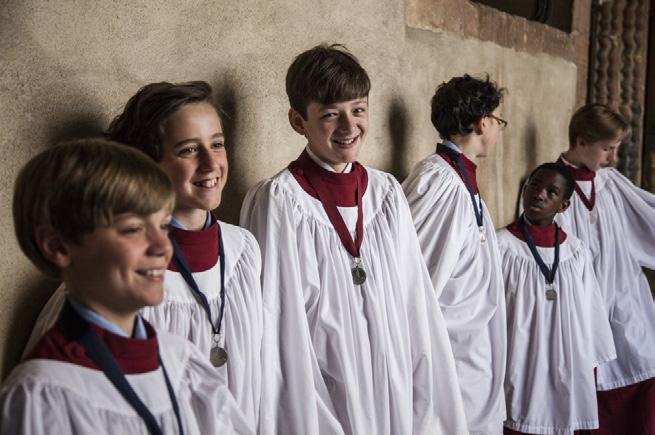

SATURDAY 26TH SEPTEMBER 2015

‘ the most superb recordings of choral and organ music from some of the world’s finest musical institutions ’ Sydney Organ Journal
VOX CLARA:

Music by Gabriel Jackson
The Choir of Truro Cathedral directed by Christopher Gray, Luke Bond (organ), Joel Garthwaite (saxophone)
'Joel Gar thwaite (saxophone) and Luke Bond (organ) sprinkle stardust over ever ything they play Obser ver
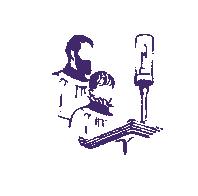
REGCD479
‘ irresistible allure Sunday Times

DOES YOUR 6 OR 7 YEAR–OLD SON LOVE SINGING?

WOULD HE LIKE TO BE A CHORISTER AT WESTMINSTER ABBEY?
��������������� ������������������������������������� ��������������� ���������� ������������������������������������������������� �������������������������������������� ������������������
COME AND VISIT THE ONLY SPECIALIST CHOIR SCHOOL IN THE UK.
������������� ������������������������������ ���������������������������� ������������������������ ���������������������������������������
Contact the school for details:
Telephone: 020 7654 4918
Email: headmaster@westminster-abbey.org
Address: Dean’s Yard, London SW1P 3NY
�������������������������
www.westminster-abbey.org
President: Dr Simon Lindley Vice-Presidents: Dr Roy Massey, Dr Alan Thurlow
The English cathedral all-male choral tradition is probably the oldest musical tradition in the western world, yet its future survival is under increasing threat. Please join and help us do all we can to support the continuation of this unique sacred art form.
Please write to:
Miss L Collins
Cow Hey Farm
7 Gawthorpe Lane
Kirkheaton
Huddersfield HD5 0NZ for a membership leaflet or visit www.ctcc.org.uk
‘ a distinct collection, most of it written for the finely trained Truro Cathedral Choir who accomplish ever ything asked of them with consummate ease ’ ***** Choir & Organ
TO BE A LIGHT: Evening Canticles for Upper Voices


Ely Cathedral Girls’ Choir directed by Sarah MacDonald
REGCD477
Music by Archer, Aston, Briggs, Harris, Howells, Lole, MacDonald, Marshall, McDowall, Moore, and Rose
DAVID BEDNALL: Stabat Mater, Marian Suite, Ave Maria
REGCD477
Jennifer Pike (violin), David Bednall (organ), Benenden Chapel Choir directed by Edward Whiting

REGCD481
'His Stabat Mater is an engrossing and substantial composition from which Bednall extracts maximum emotional and dramatic effect’ **** Choir & Organ profound enough to leave scars and haunt your soul ’ Classical Music Sentinel
CHRISTMAS FROM WORCESTER:

A tribute to Sir David Willcocks
Worcester Cathedral Choir, Worcester Festival Choral Society, Sennet Brass, Christopher Allsop (organ), directed by Peter Nardone
23 of Sir David Willcocks’s best-known Christmas arrangements, ranging from exquisite gems of quiet stillness to rousing shouts of majestic praise
PETER KING plays the Klais organ of Bath Abbey
REGDVD003 - DVD/CD set
Peter King, Organist Emeritus of Bath Abbey, performs a wide-ranging concert demonstrating the virtuosity and versatility of both player and instrument

REGCD486
Available from all good CD retailers and from Regent direct REGENT RECORDS, PO Box 528, Wolverhampton, WV3 9YW Tel: 01902 424377, www regentrecords com (with secure online ordering)
Retail distribution by RSK Entertainment Ltd, www rskentertainment co uk




Available in the USA from the Organ Historical Society www ohscatalog org International distribution by Launch Music International Ltd philip@launchmusicinternational co uk

